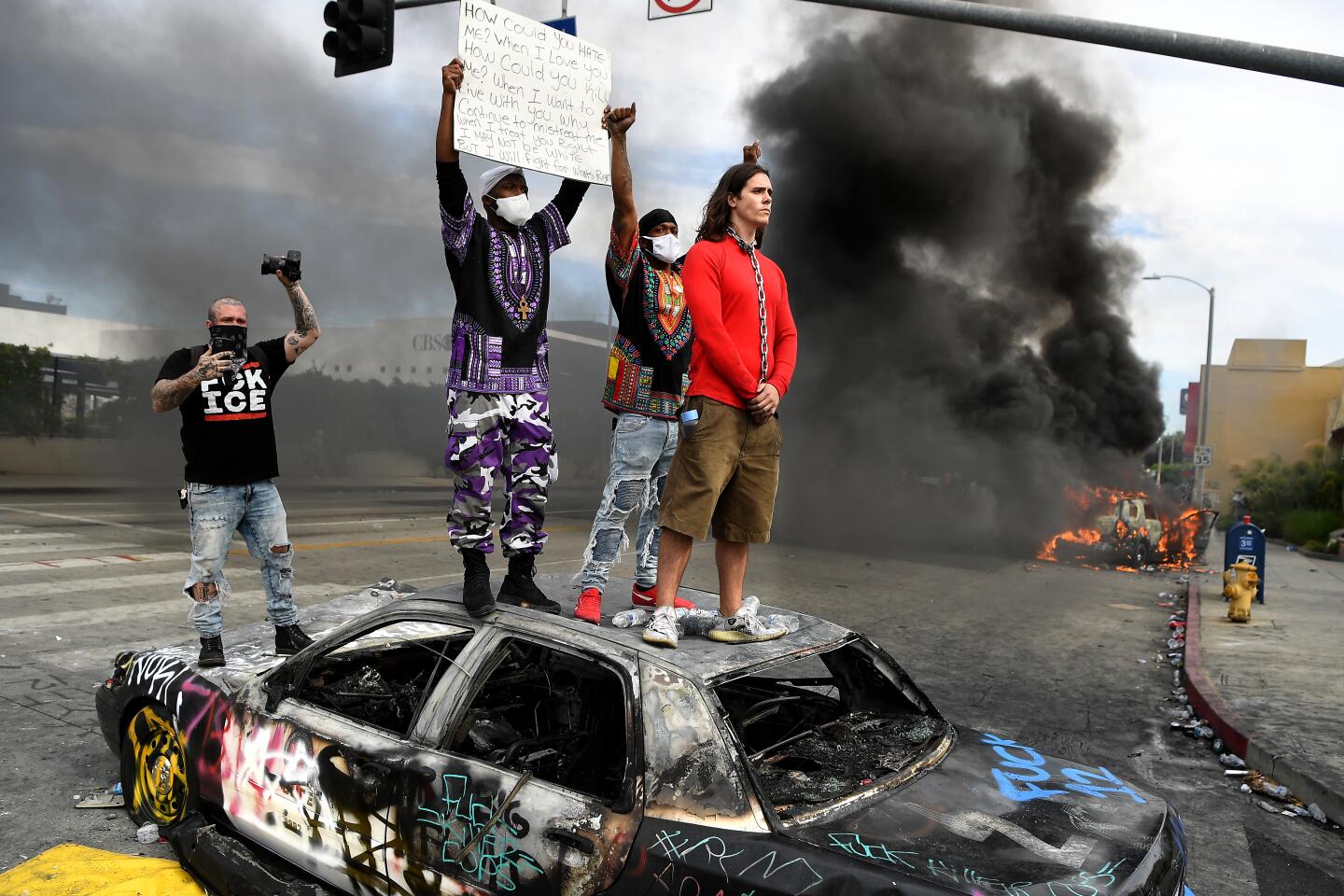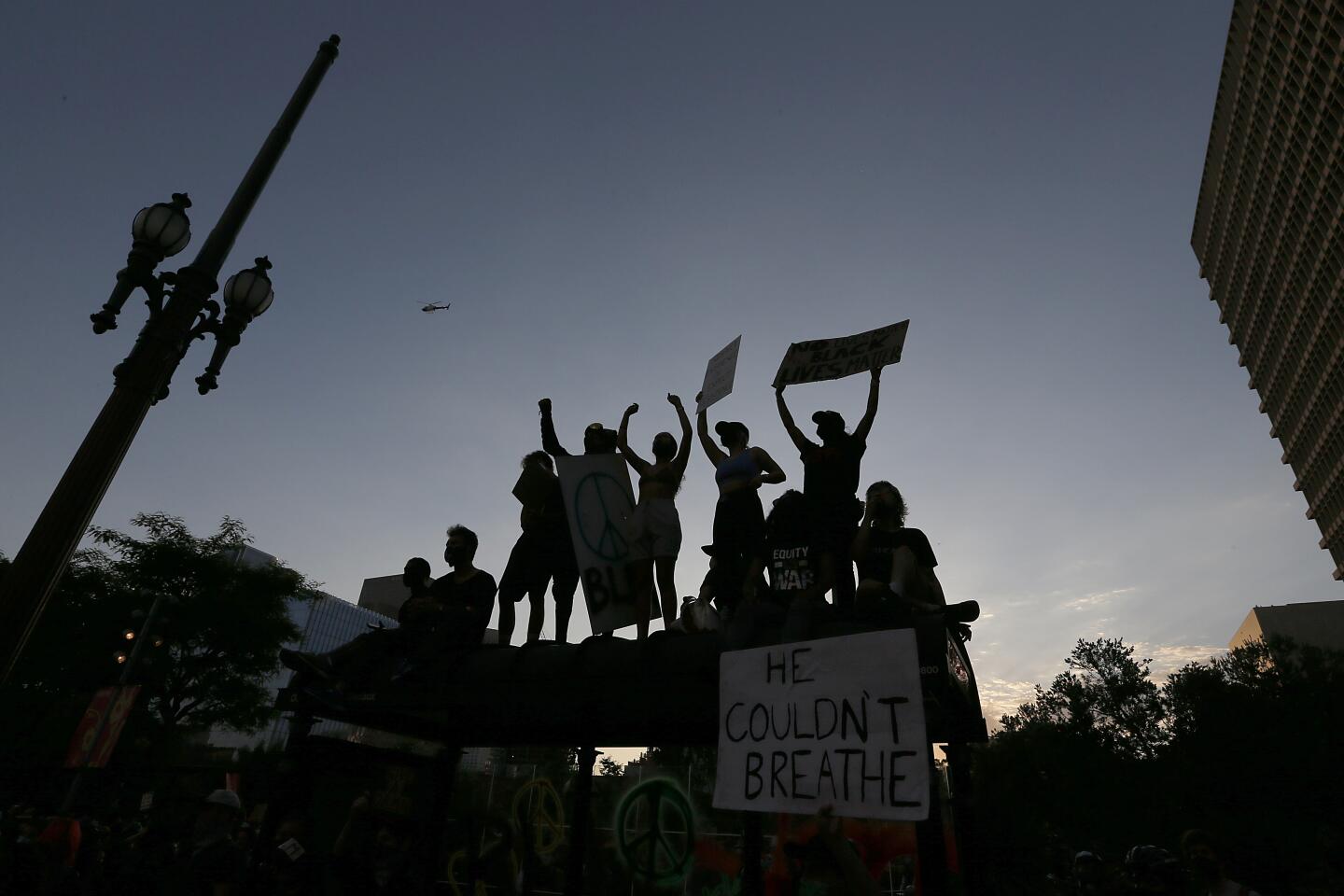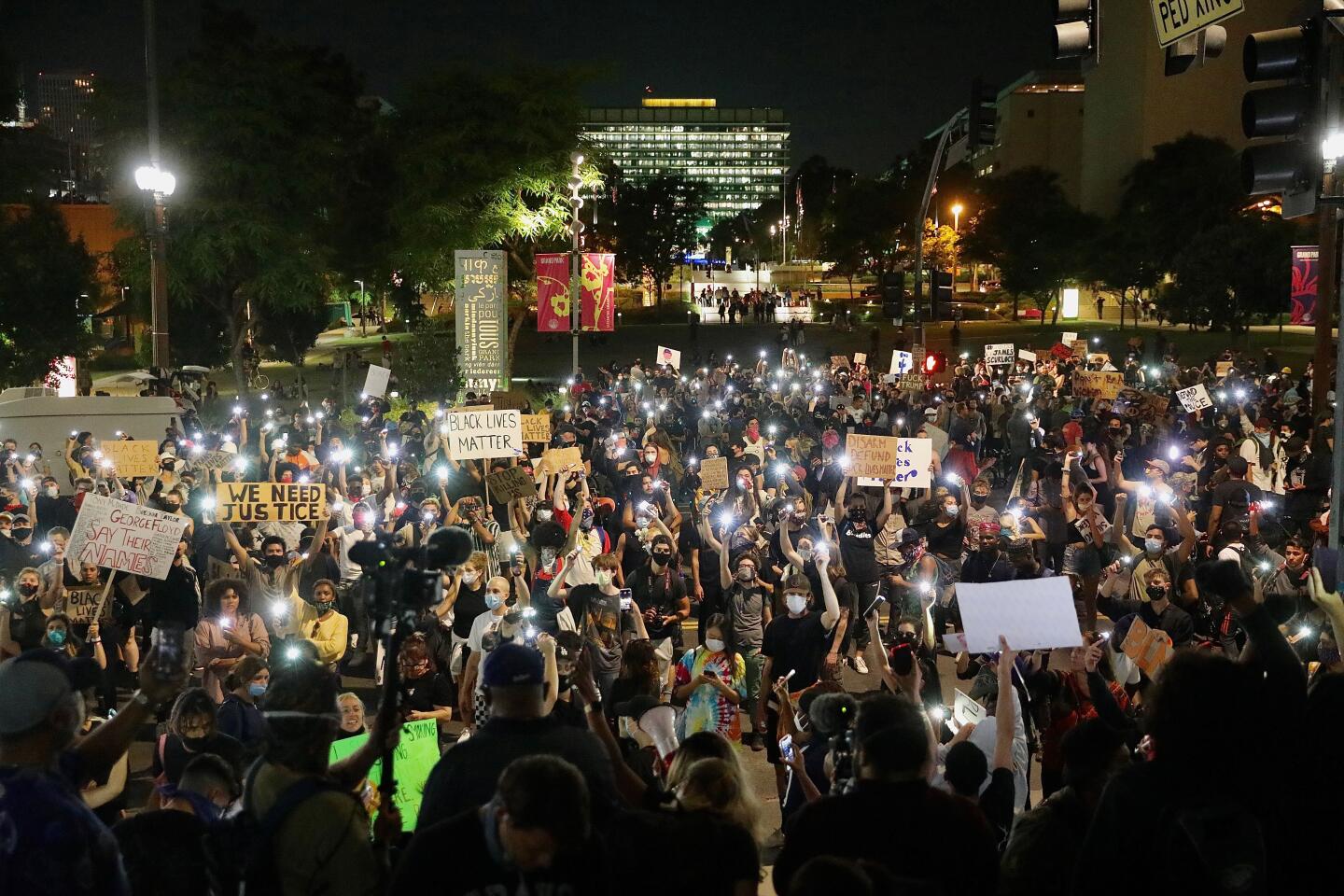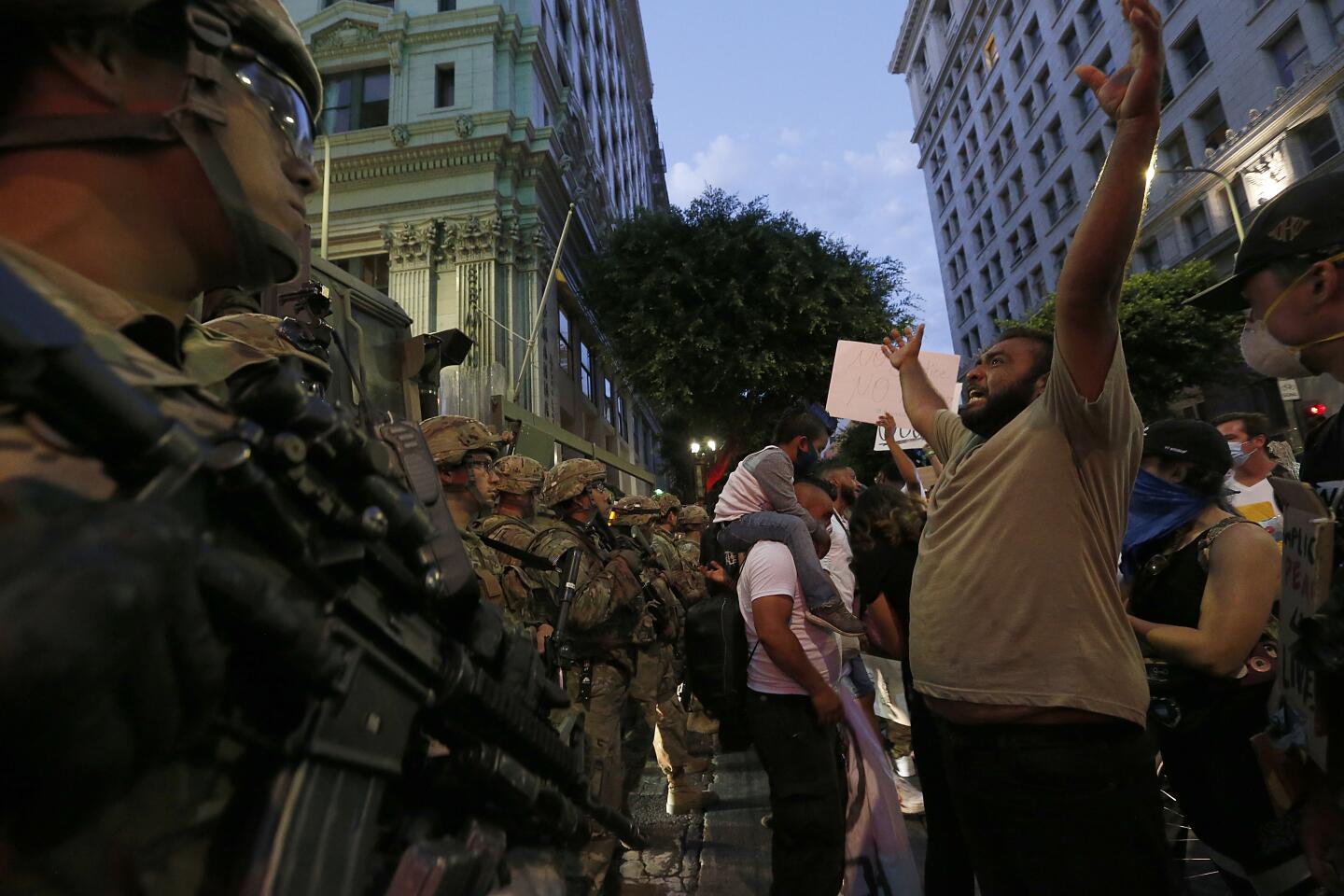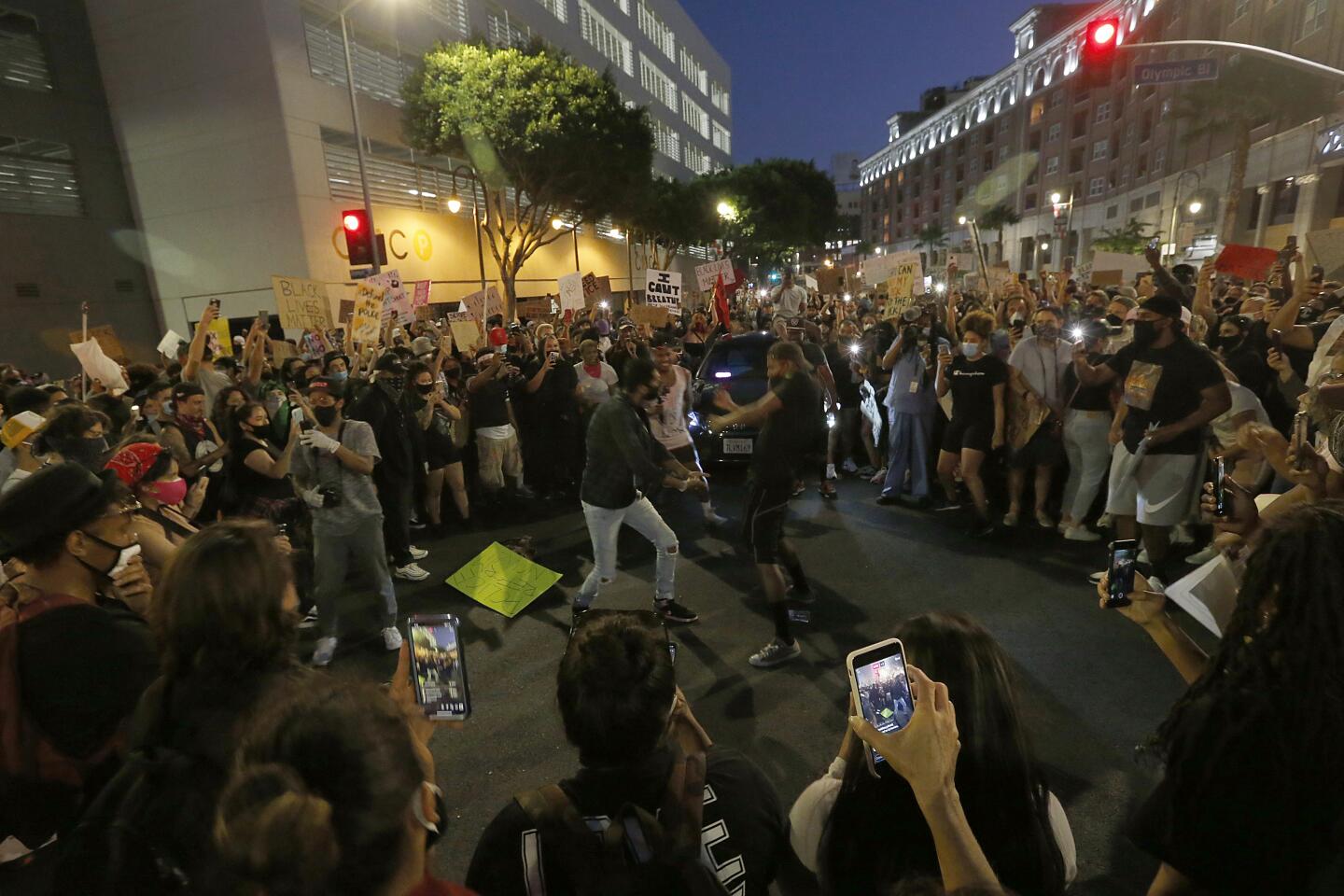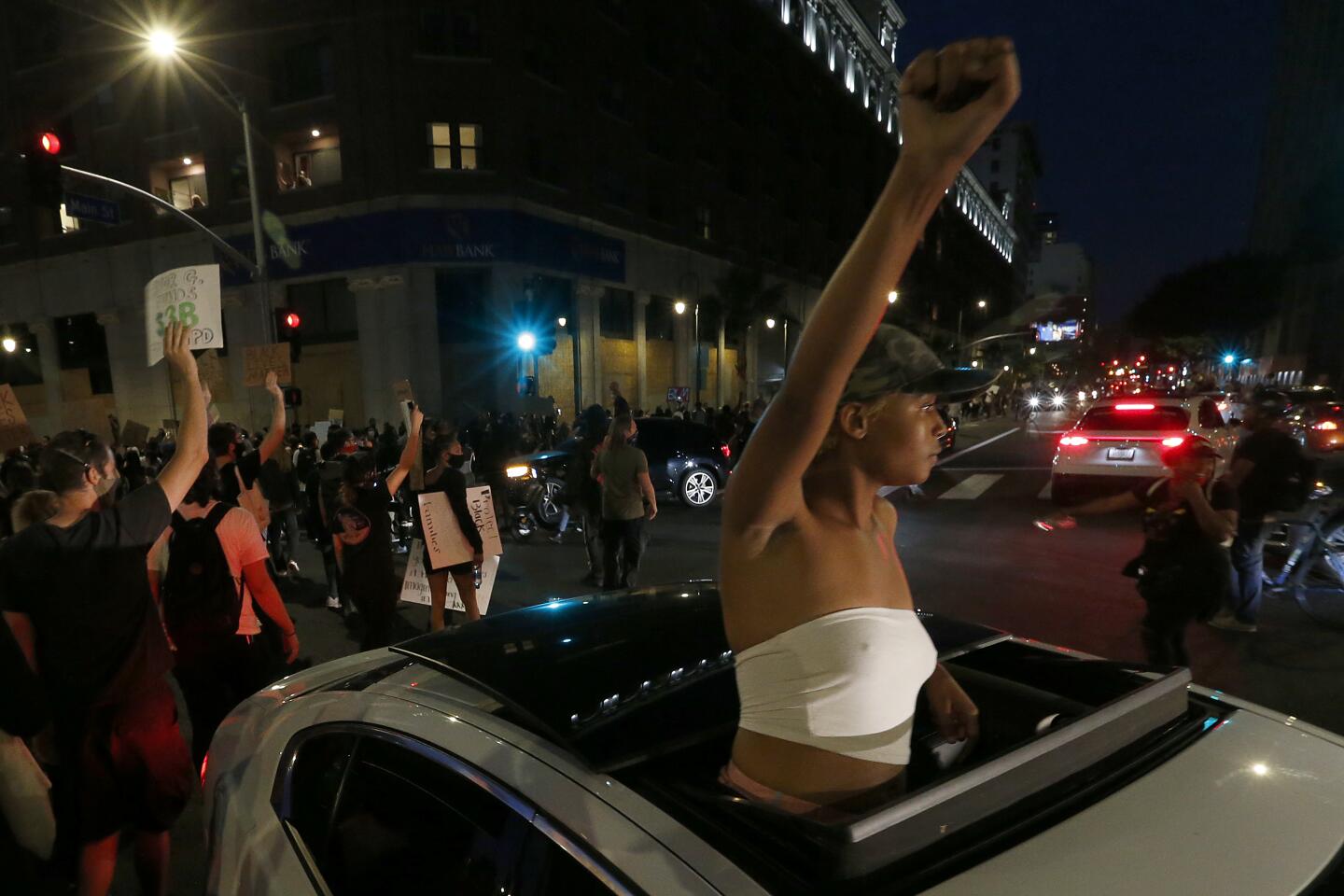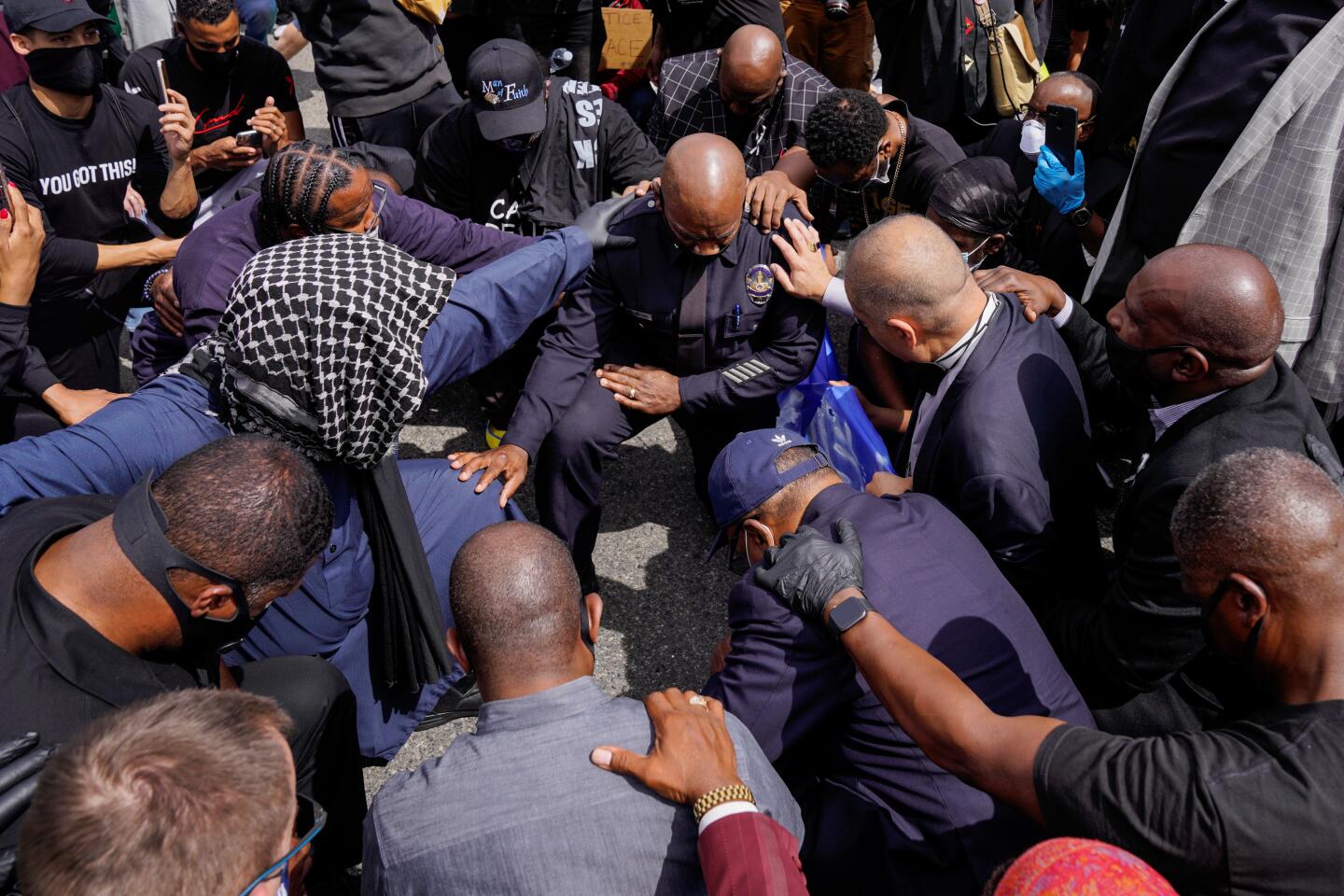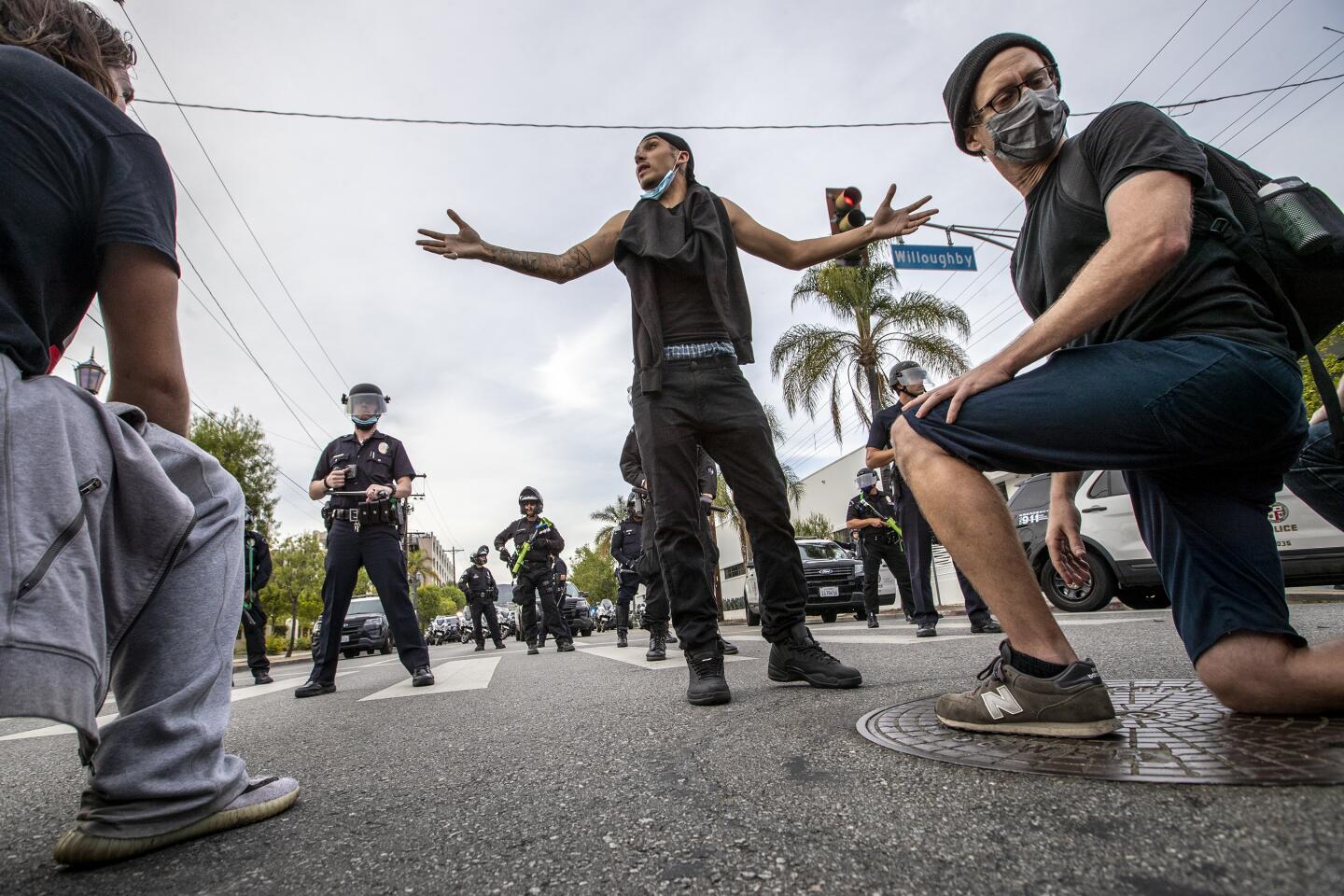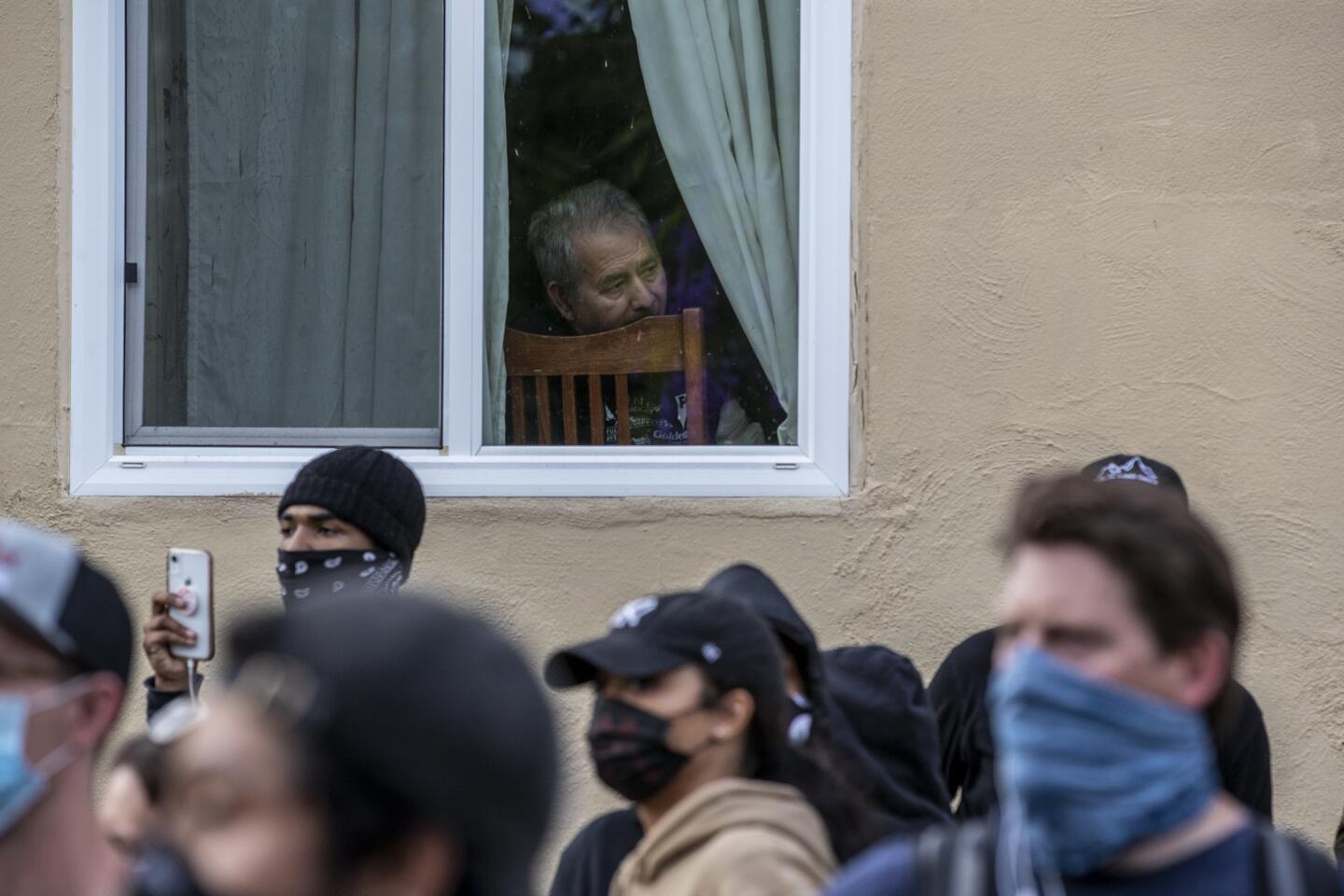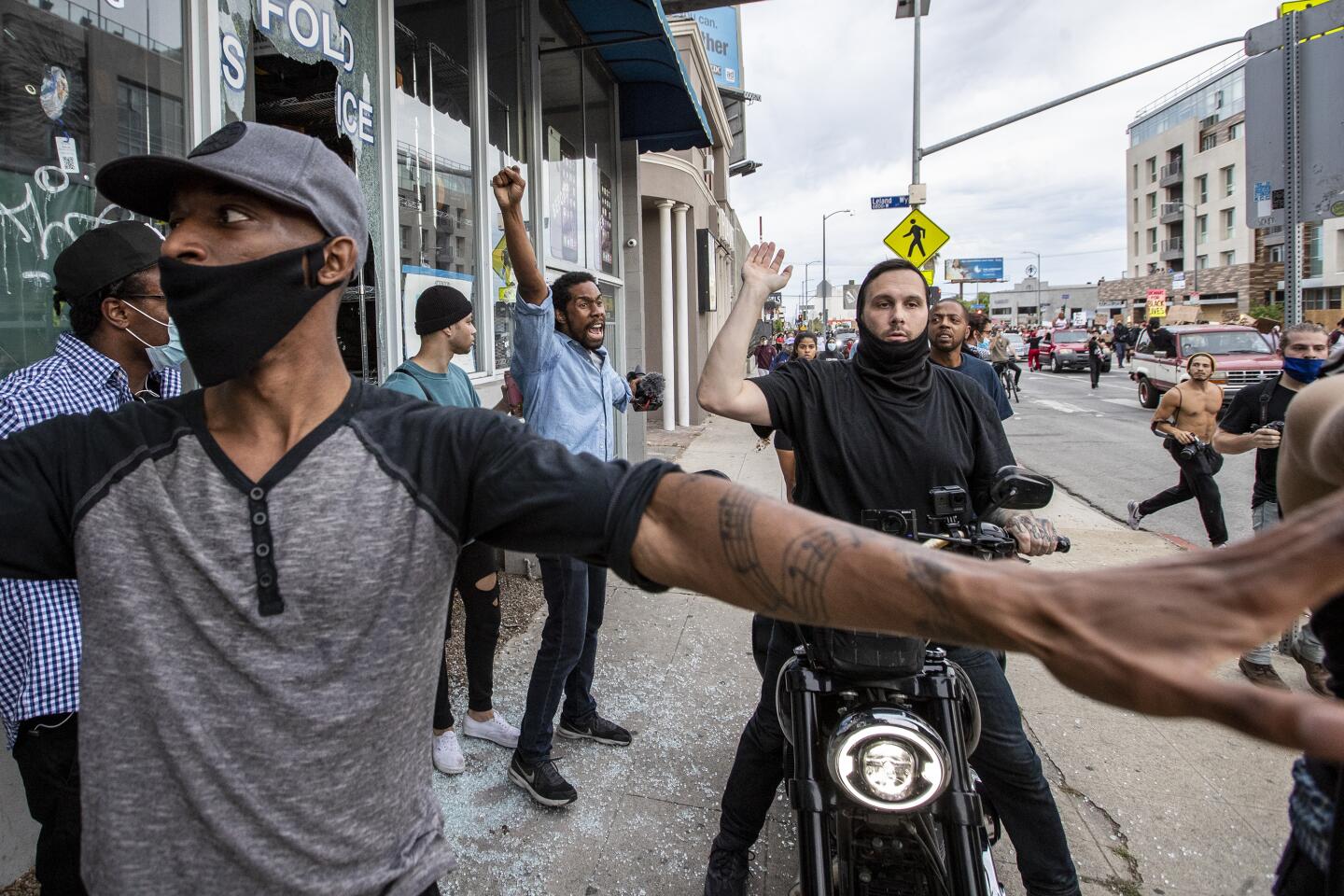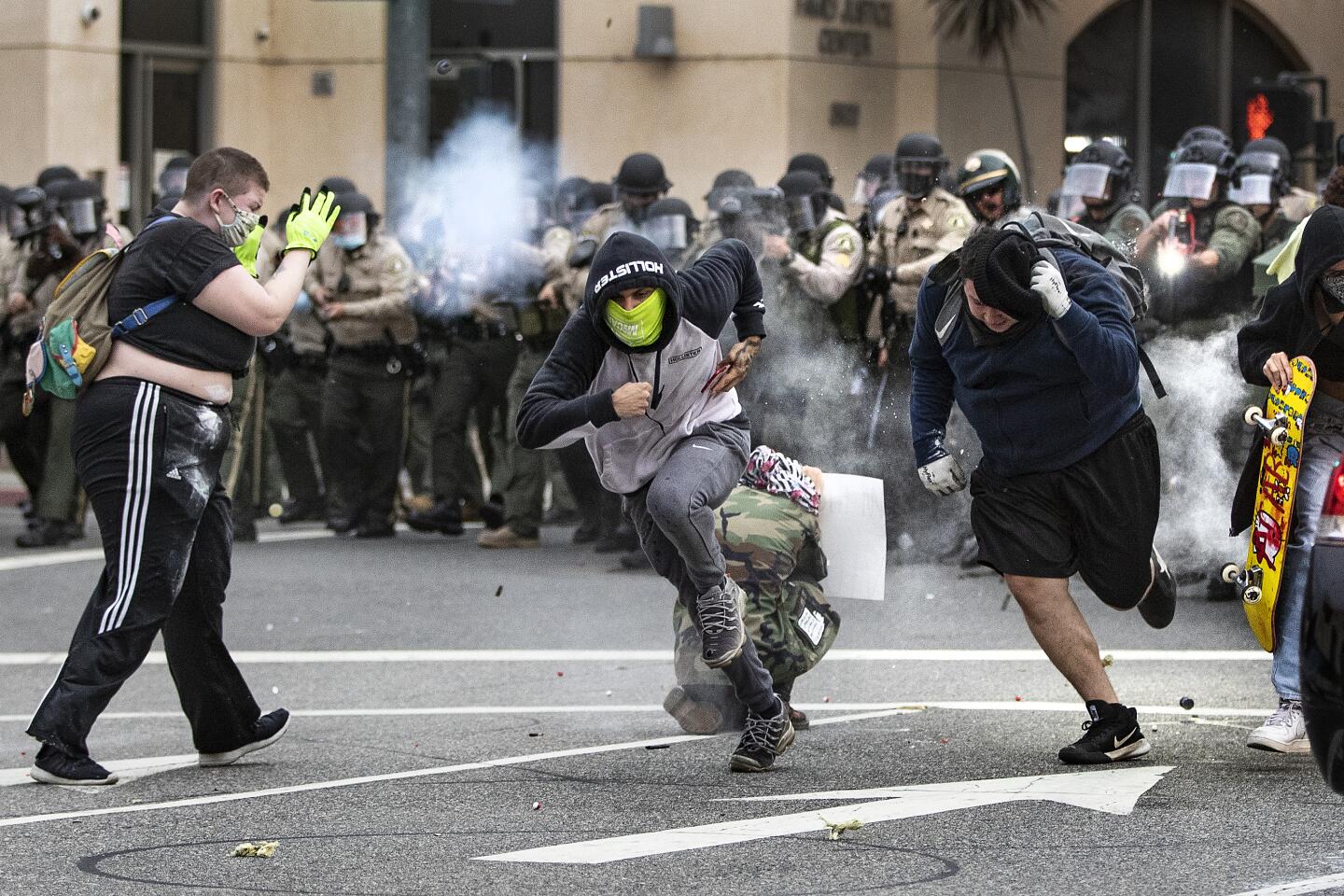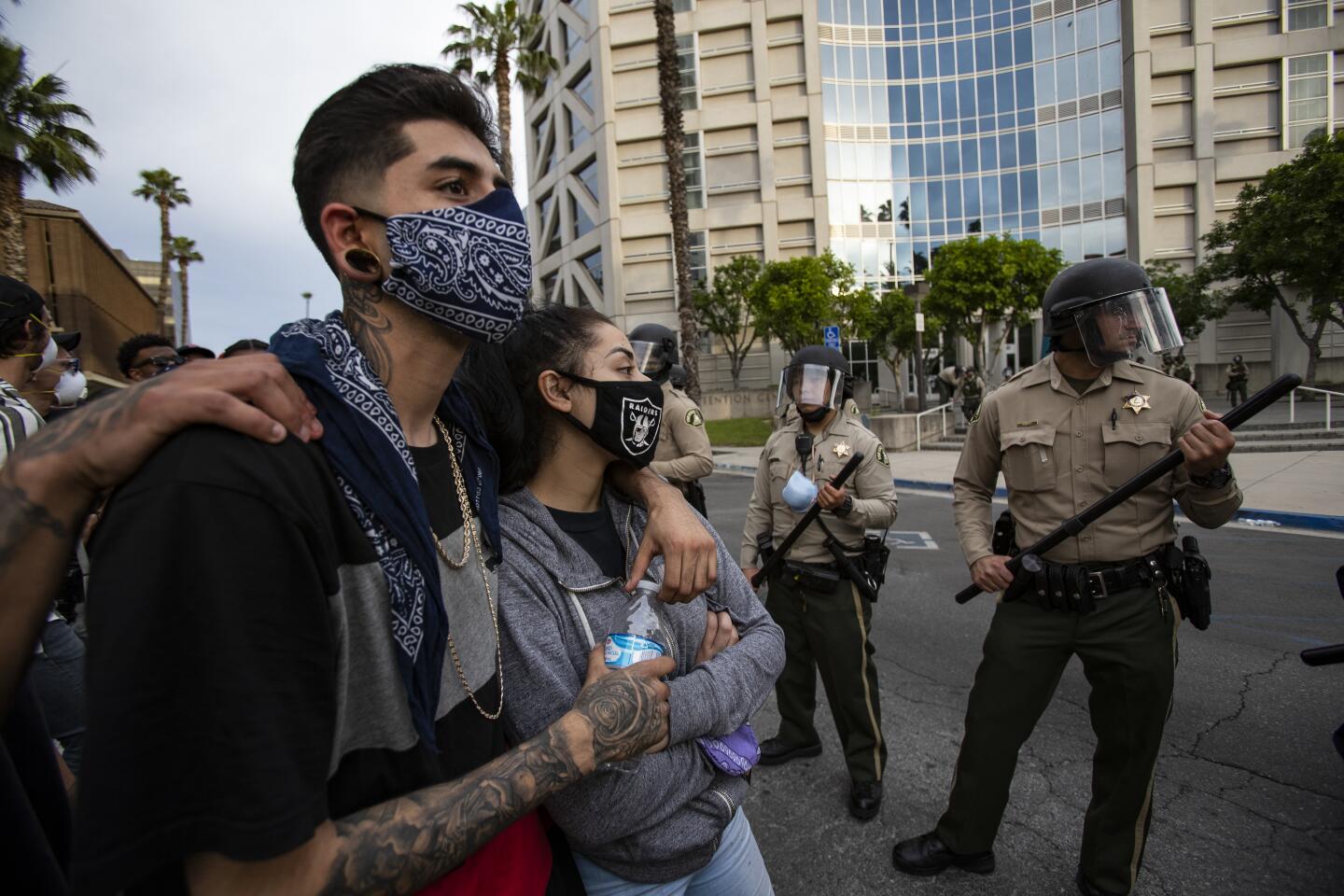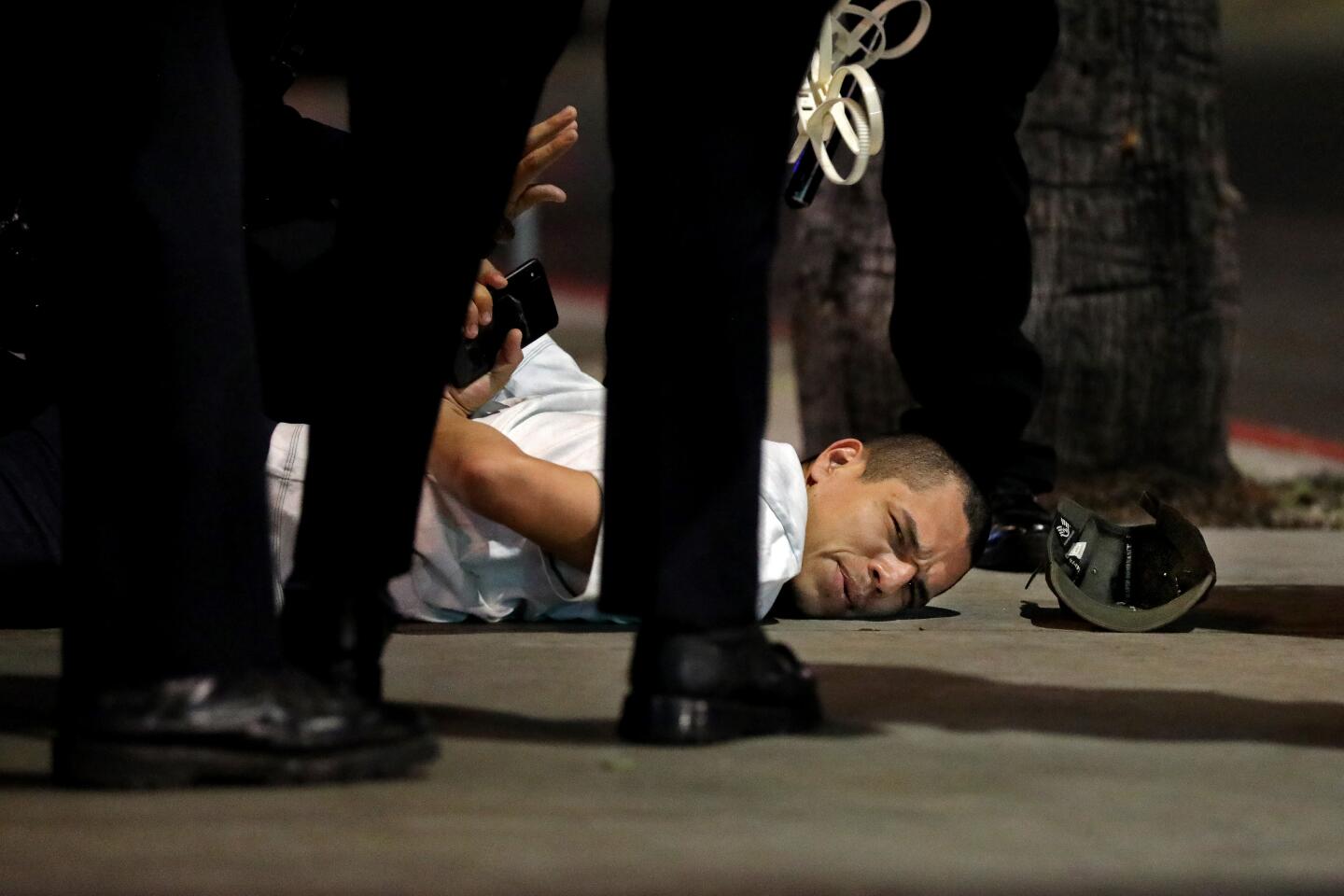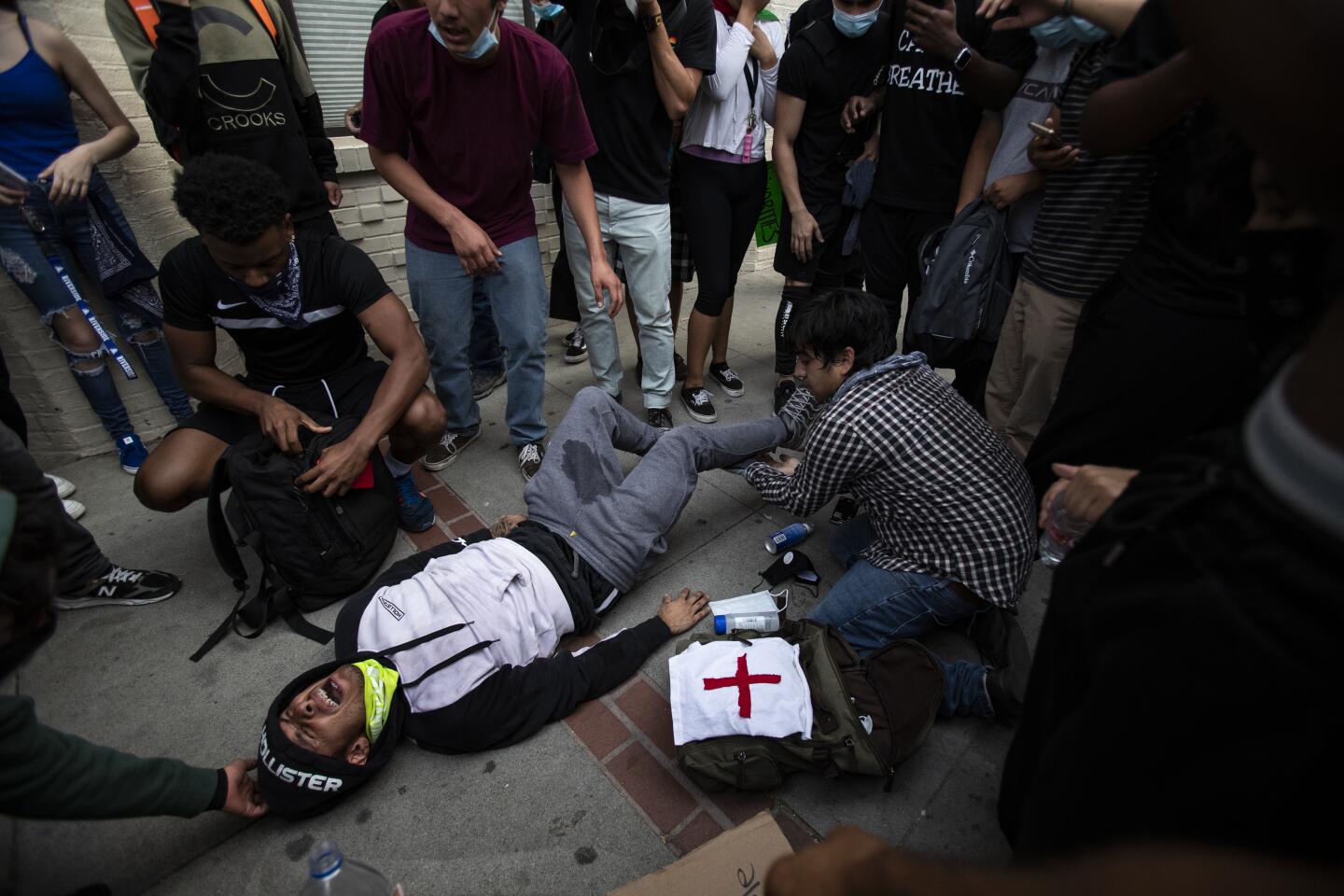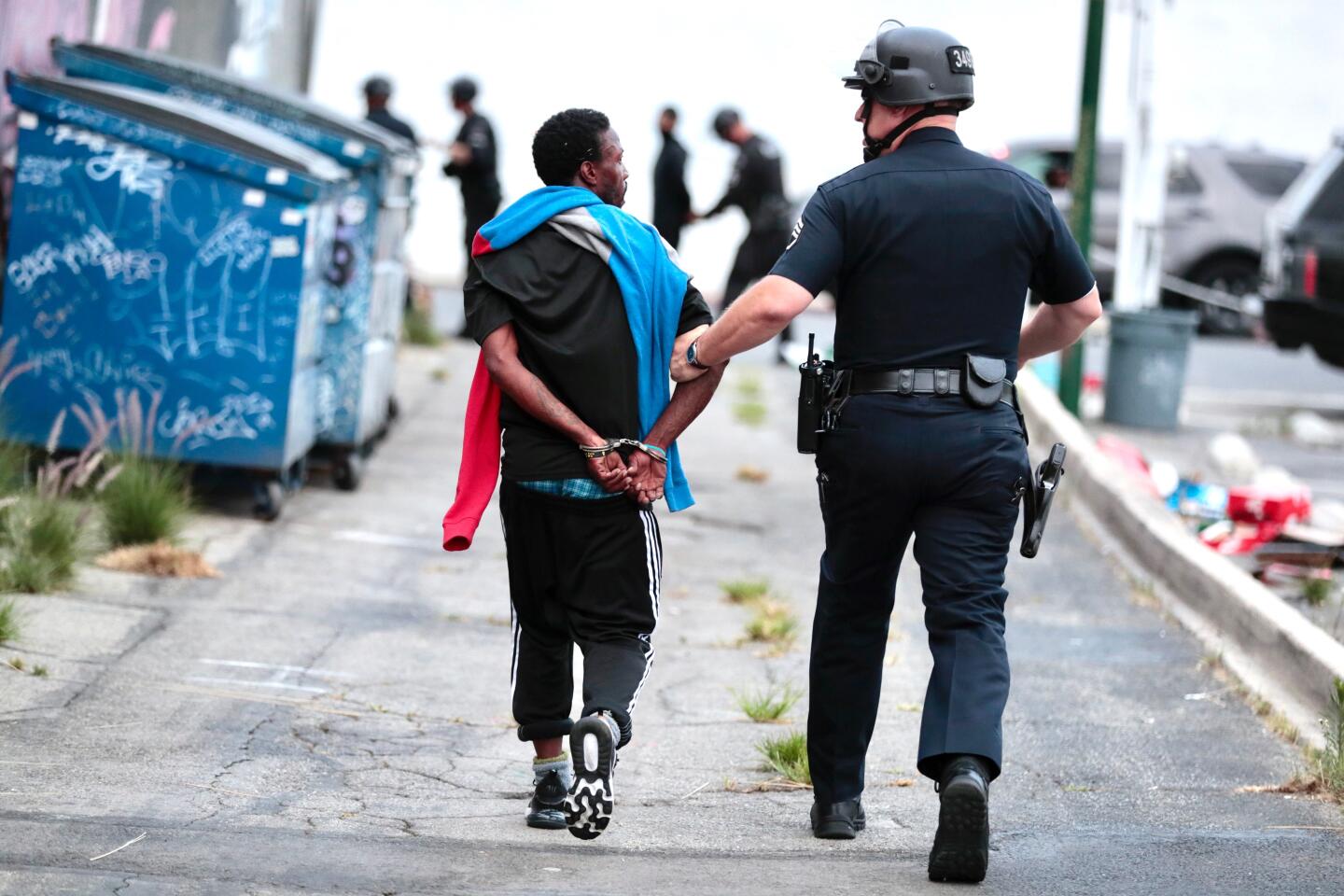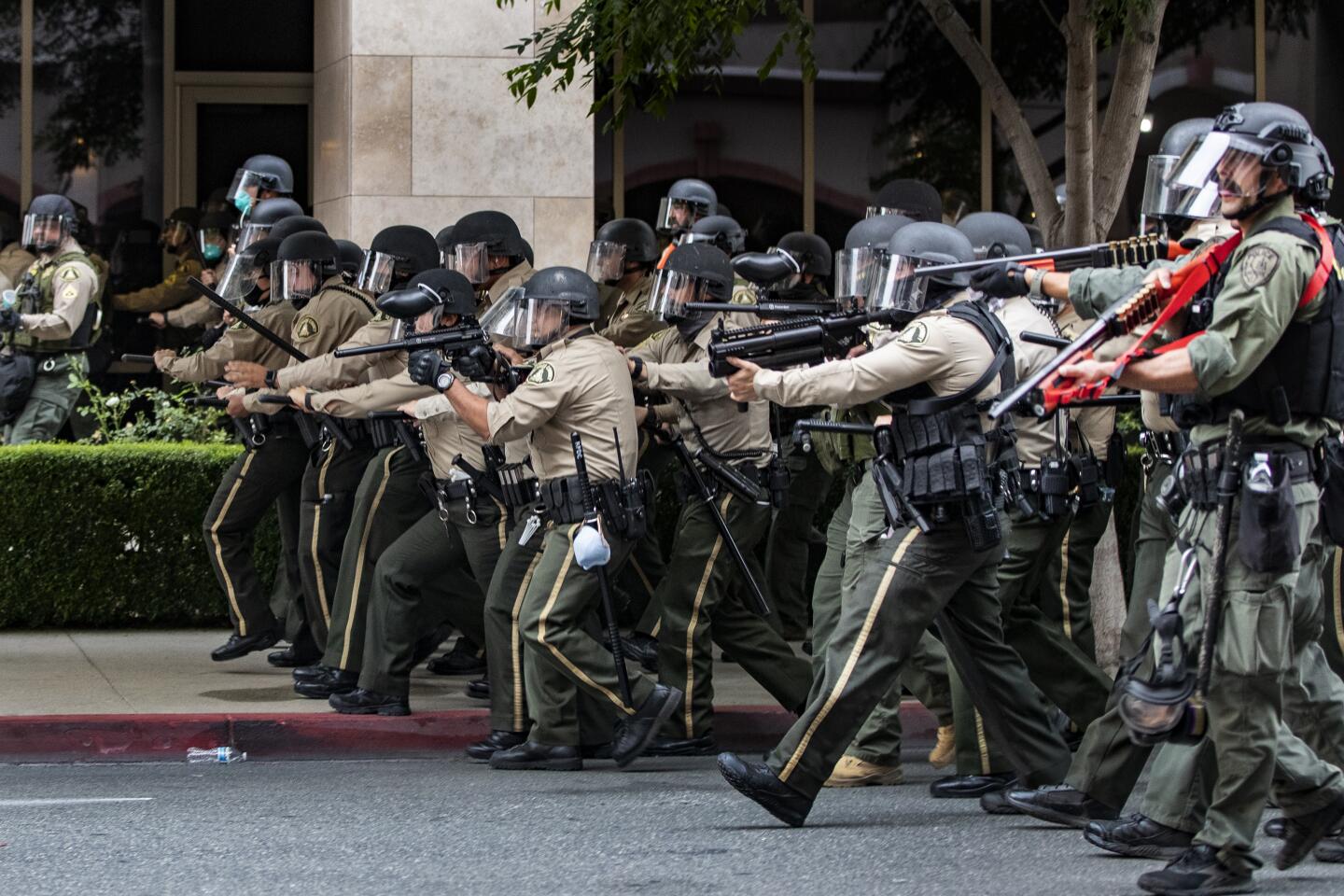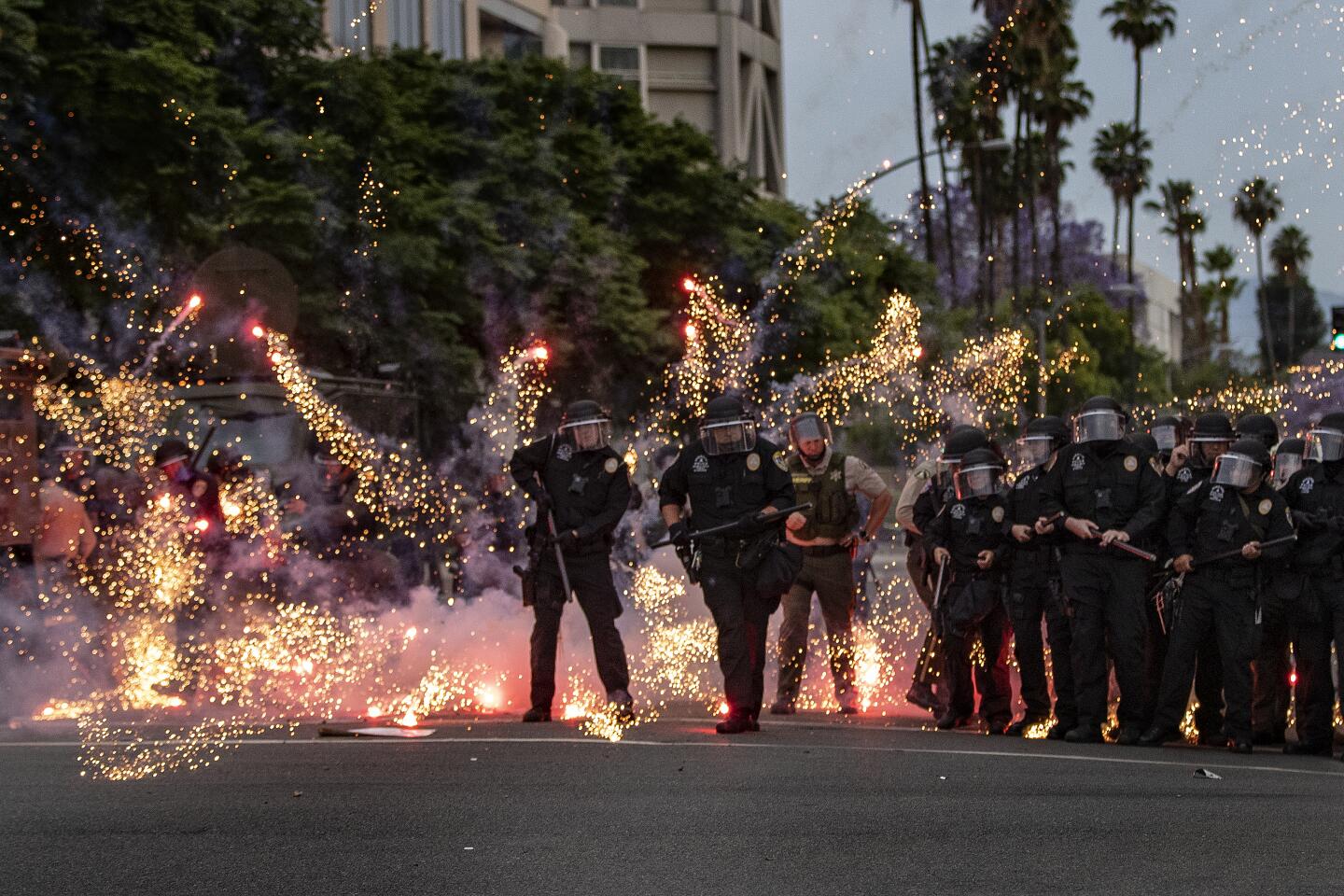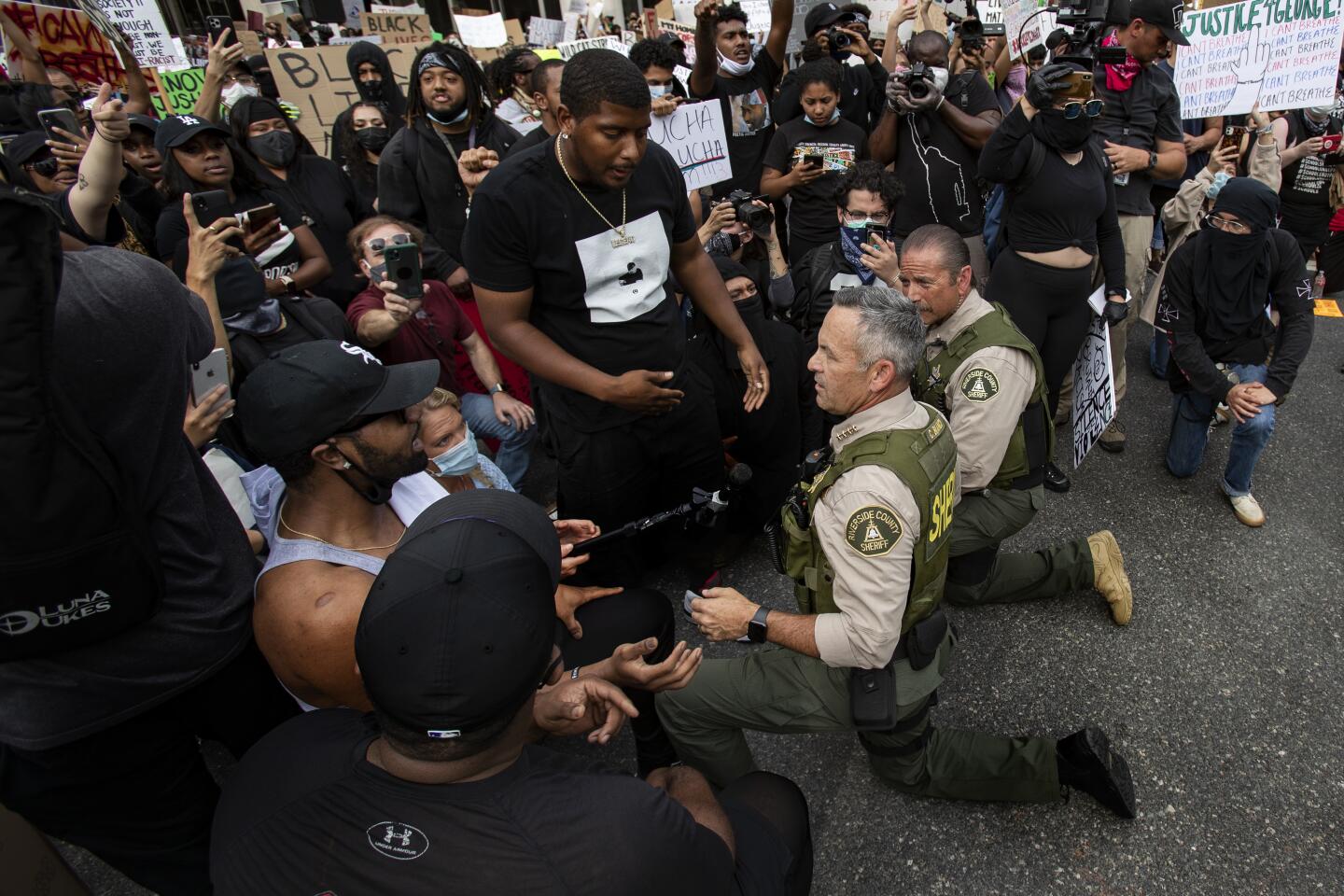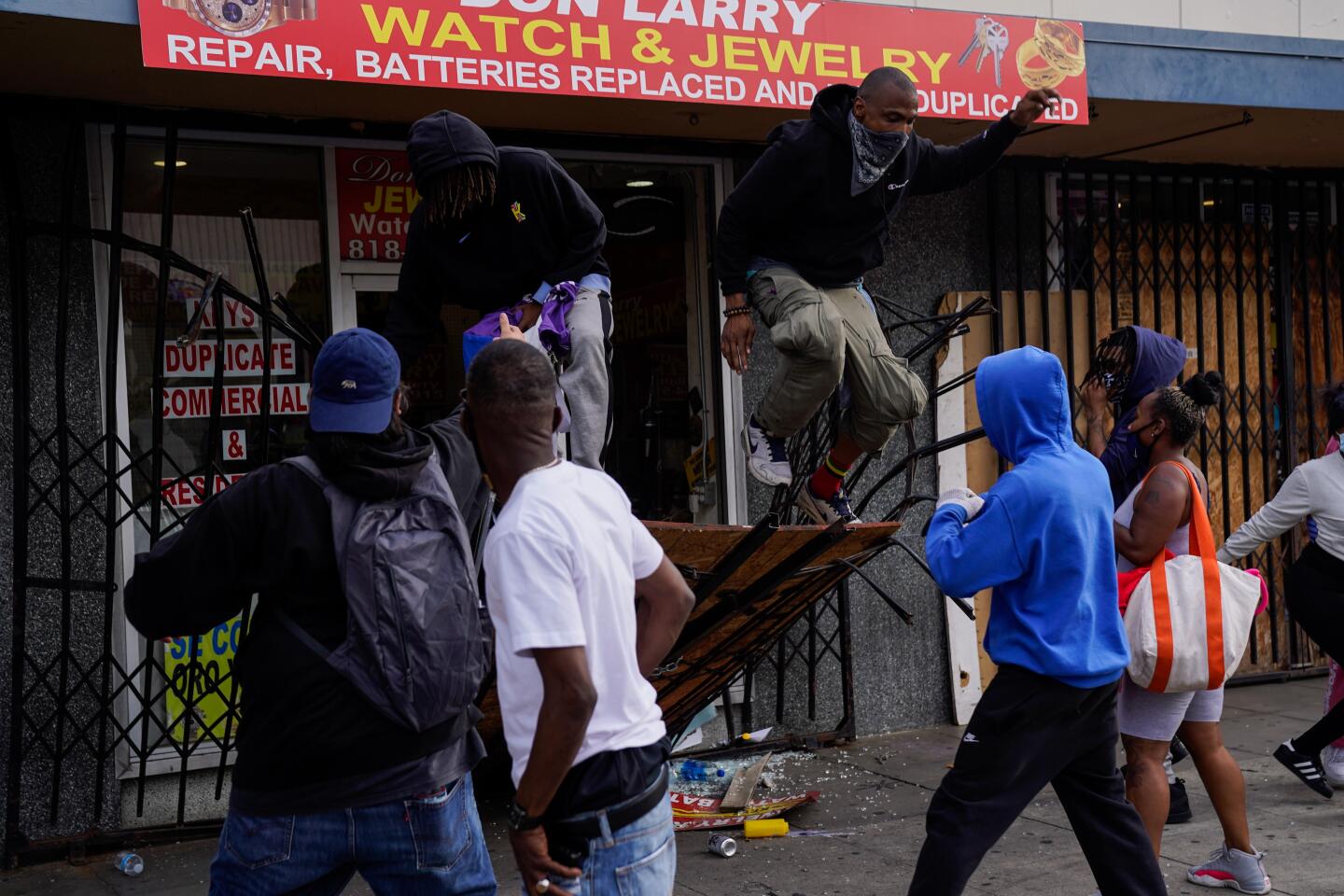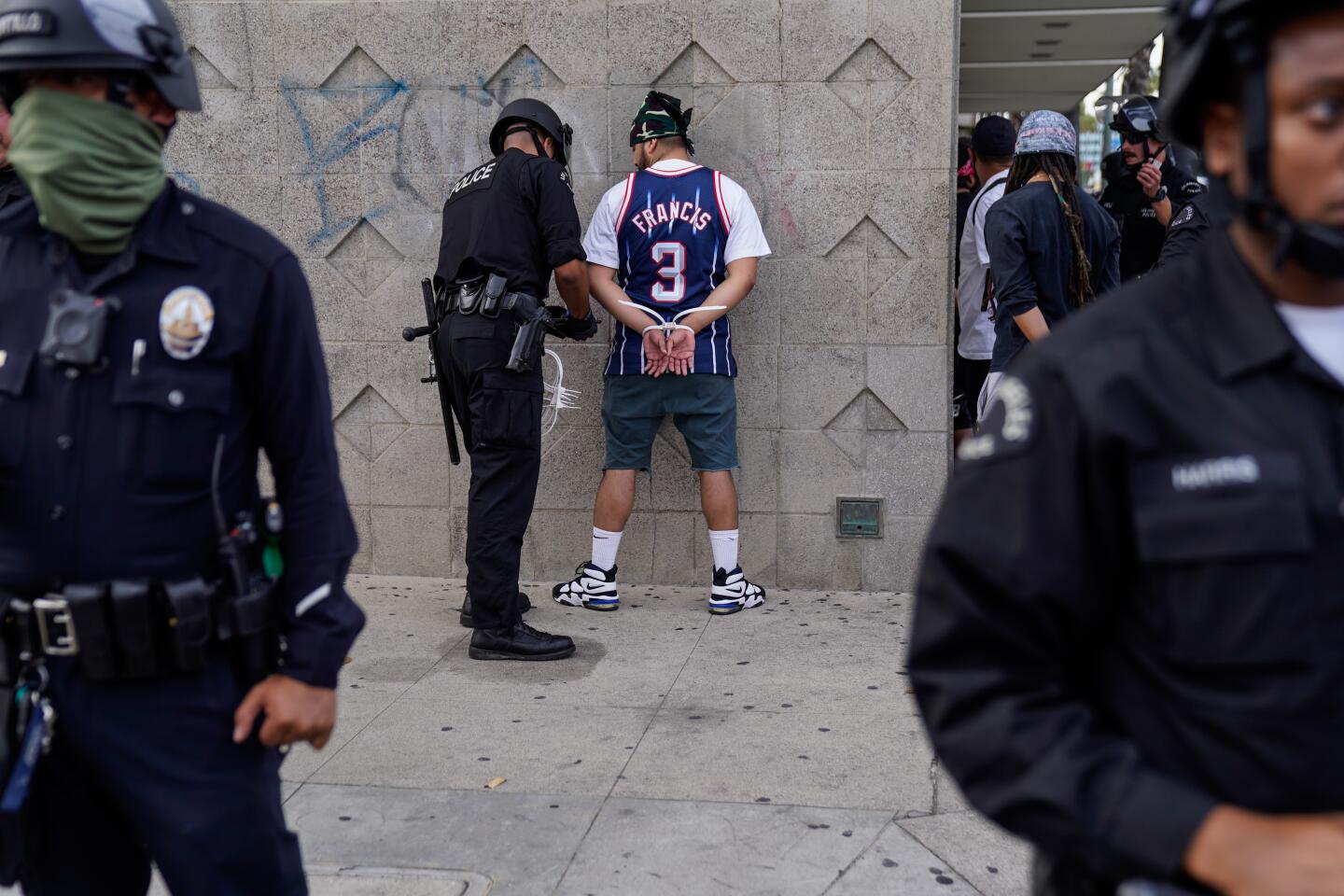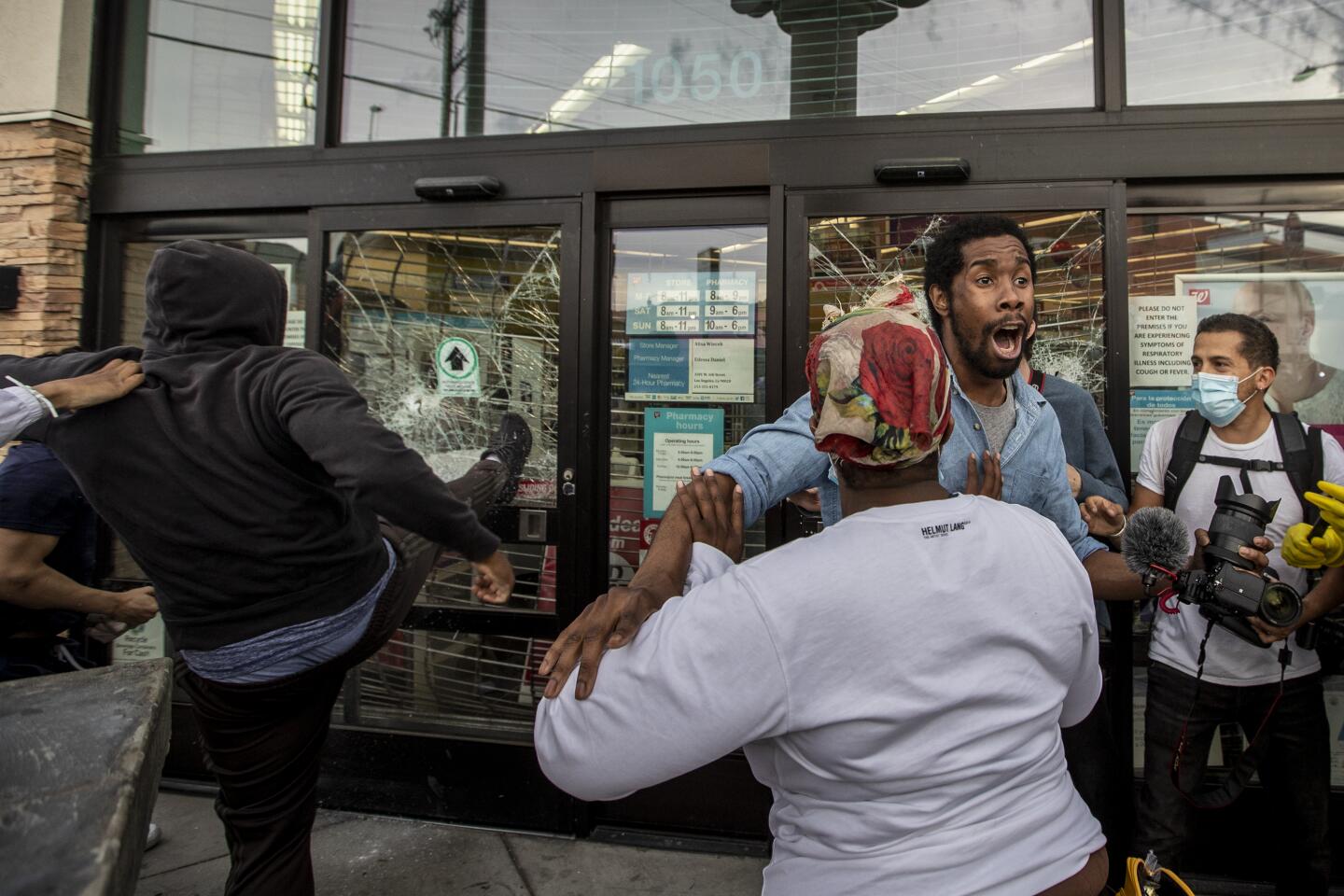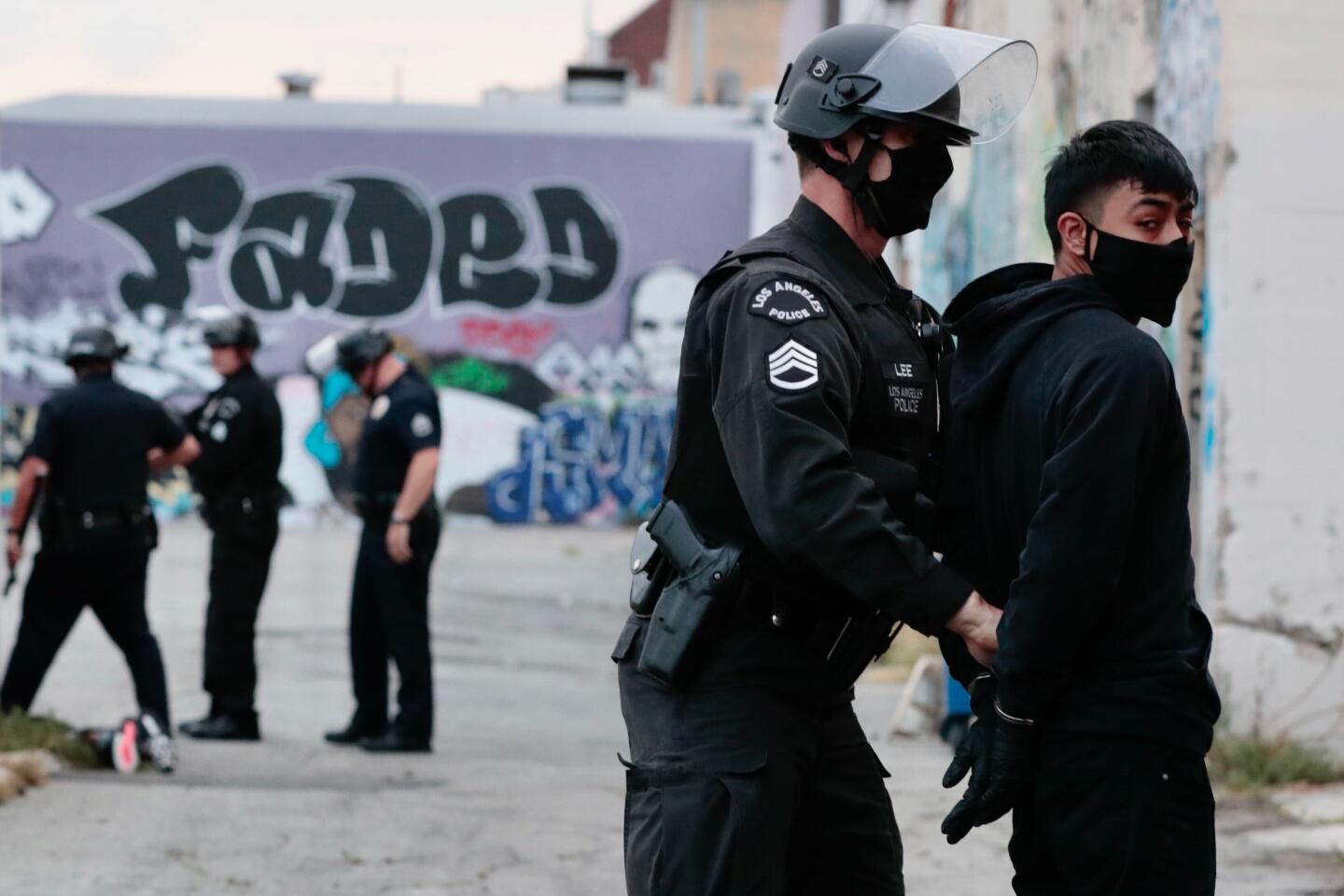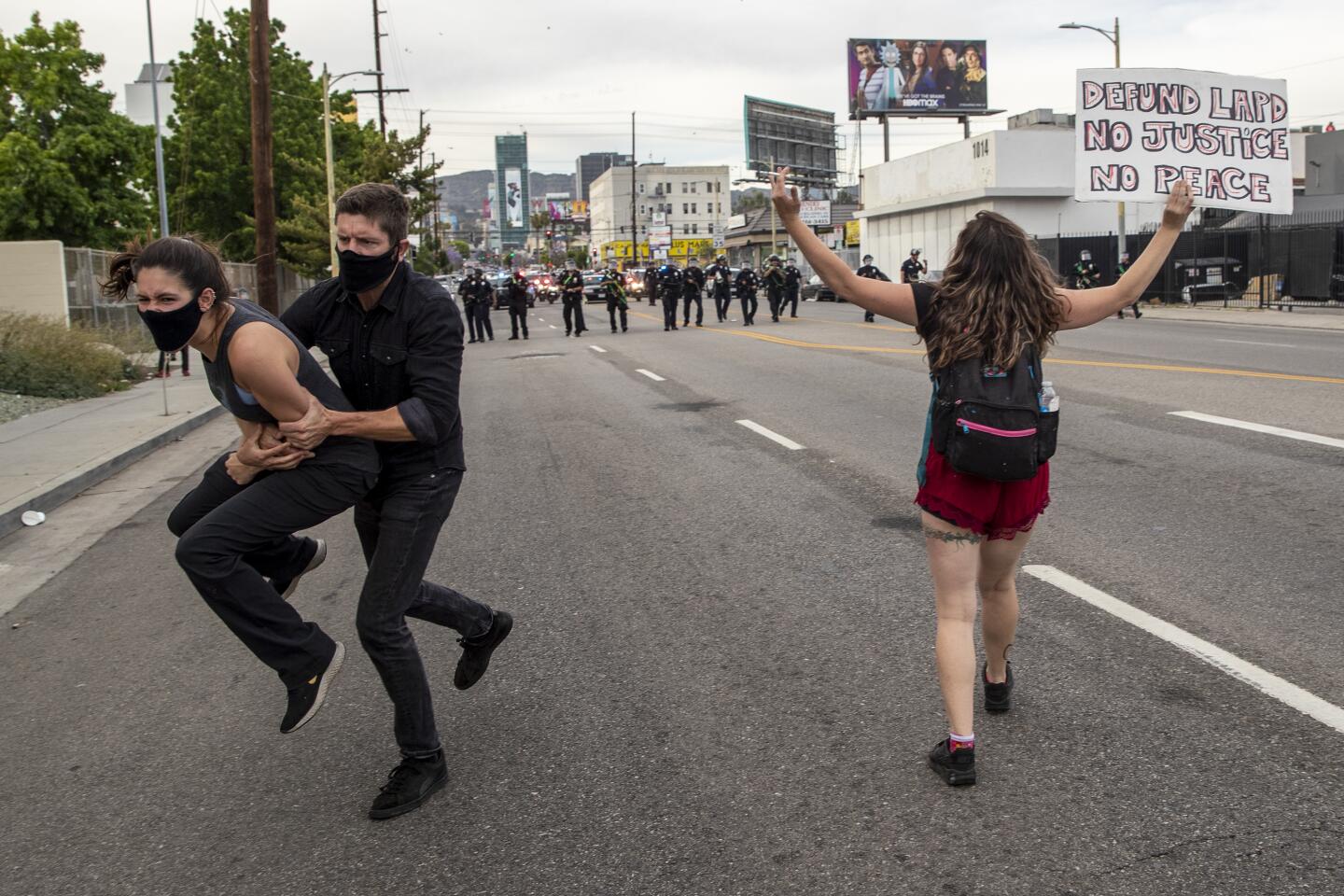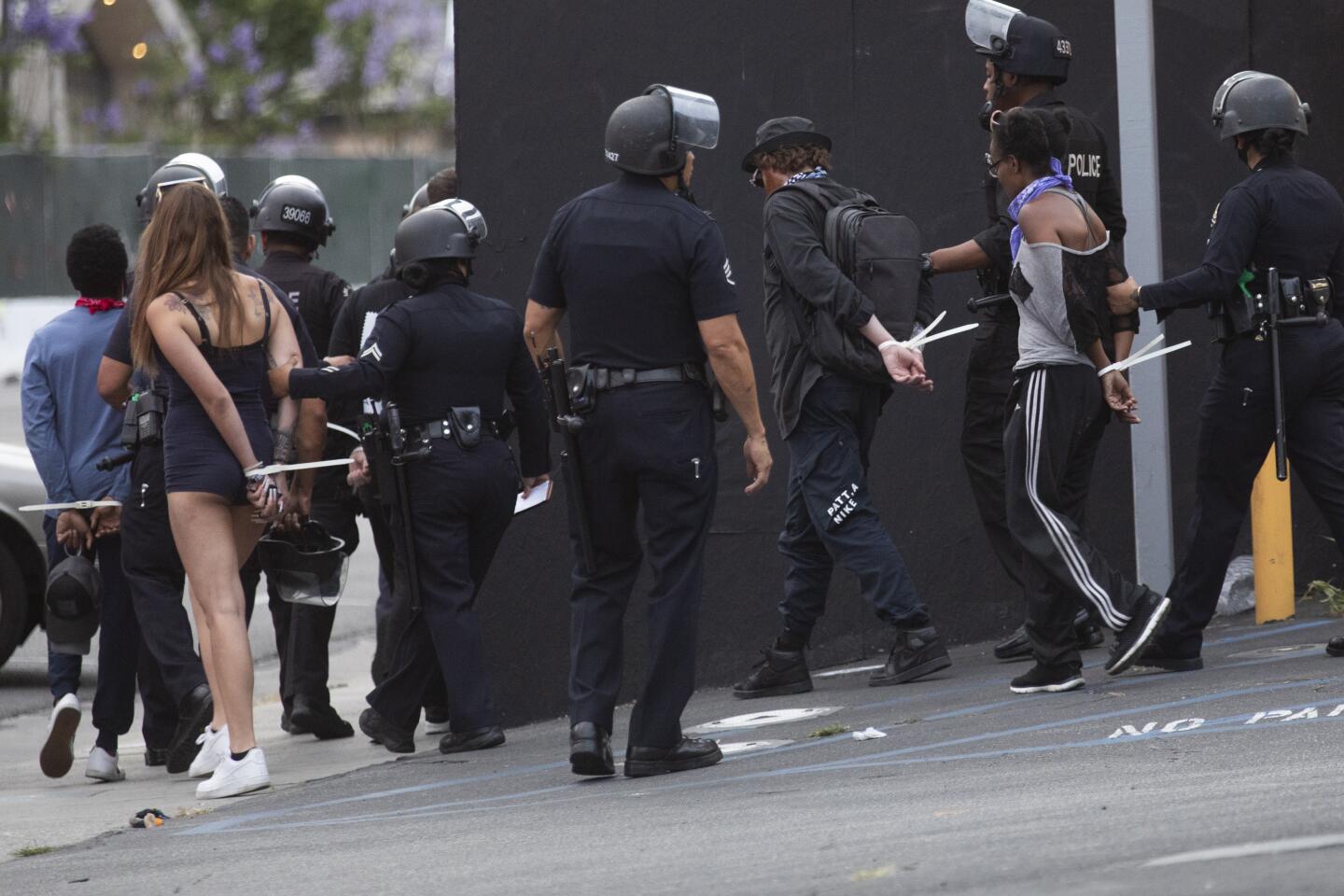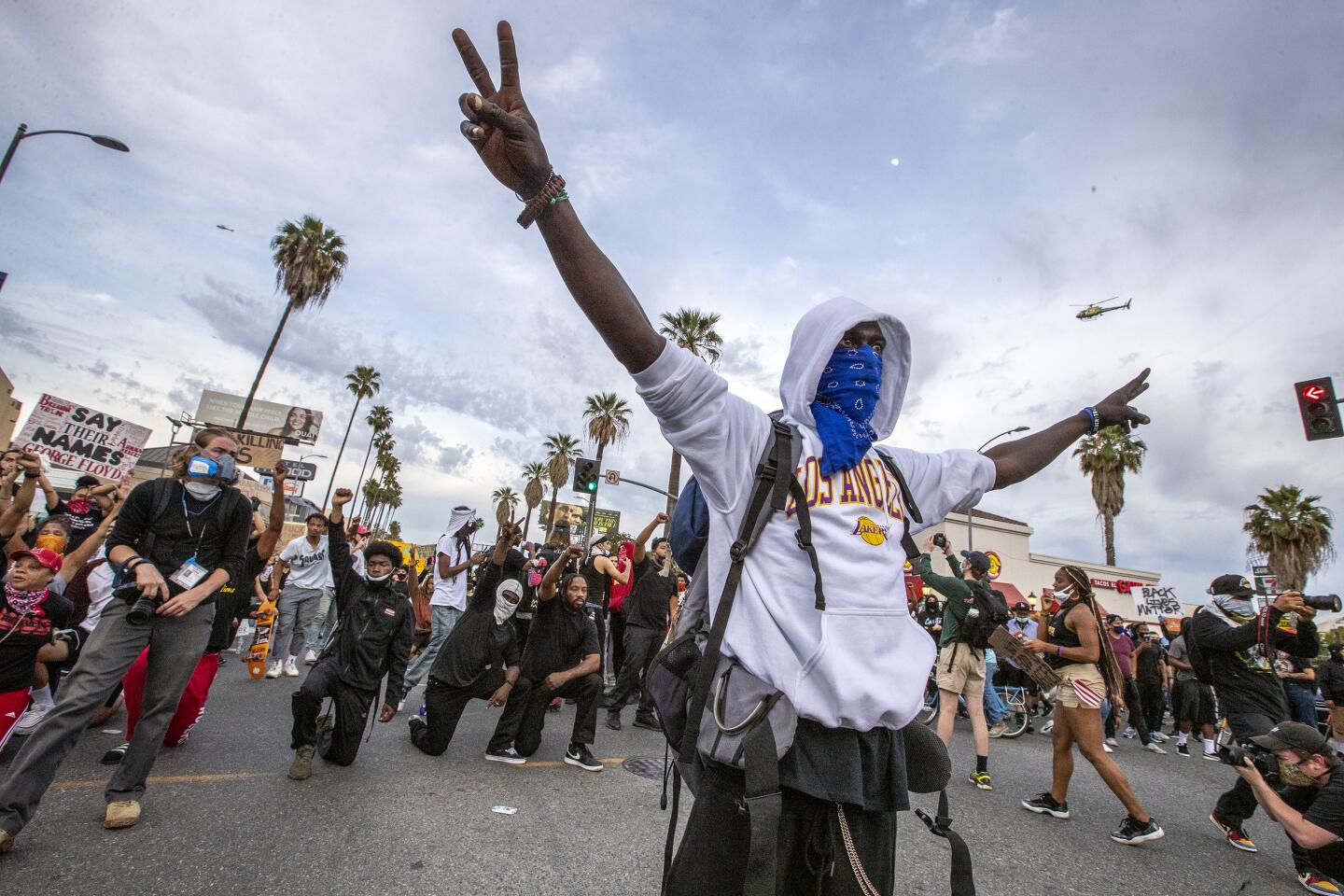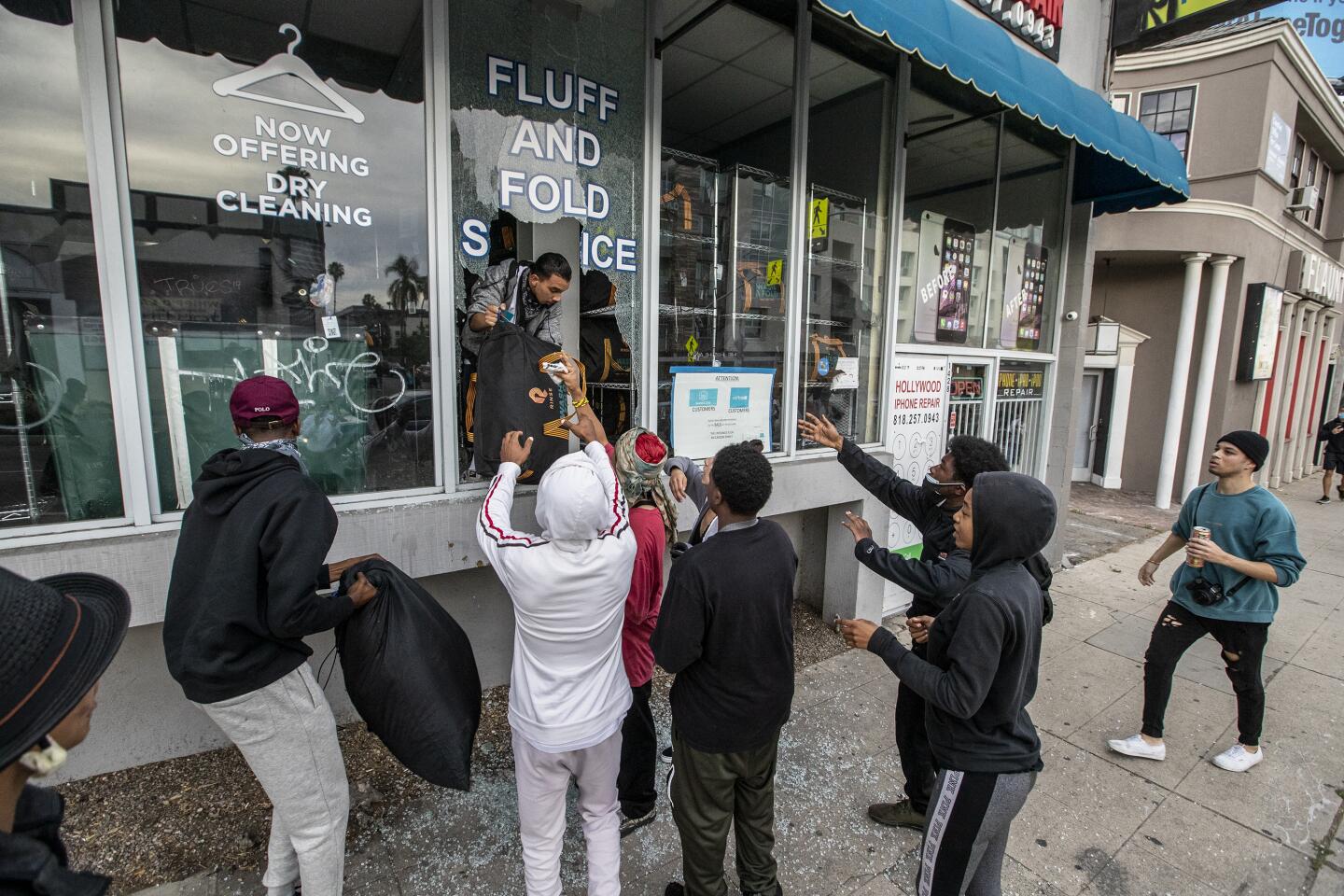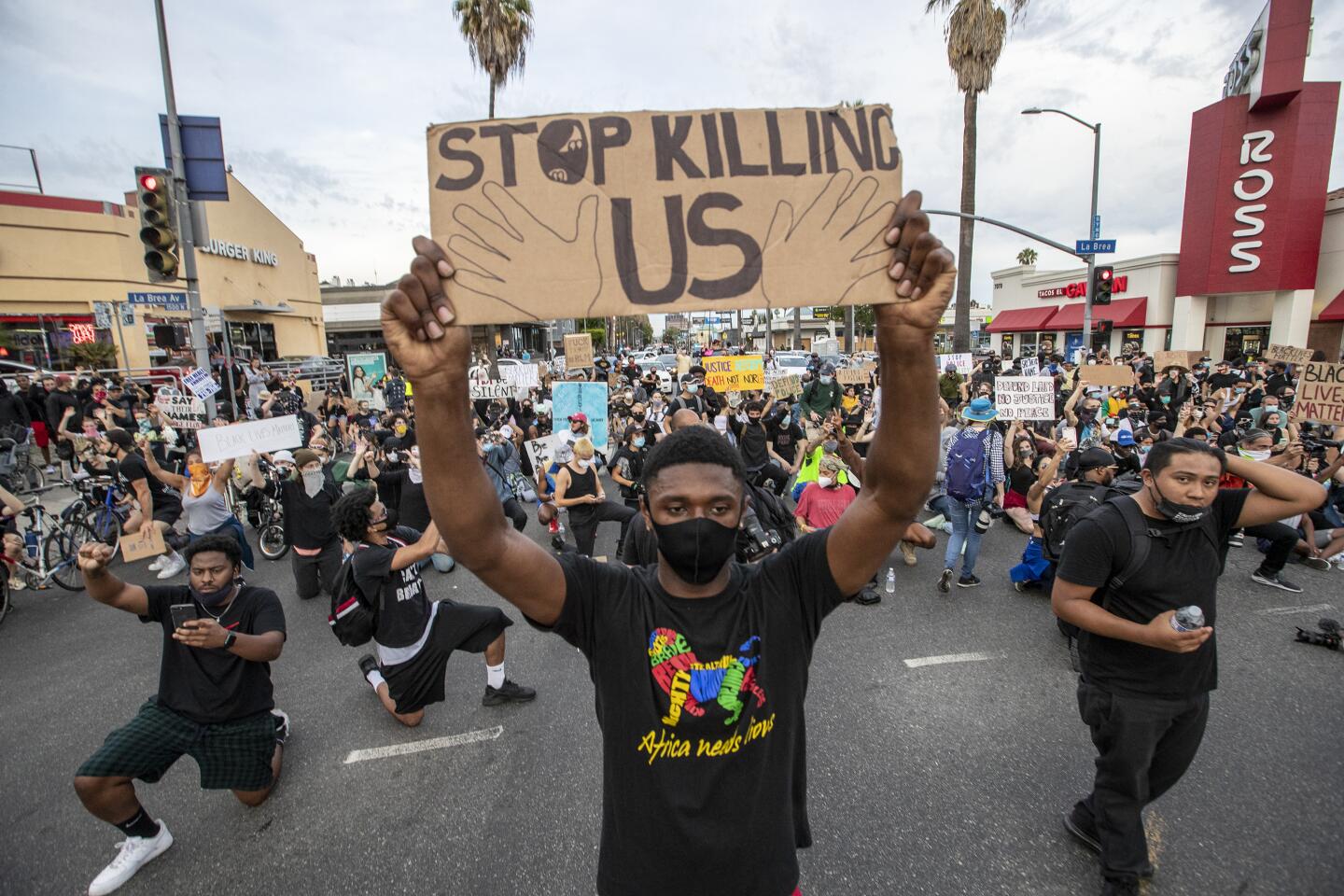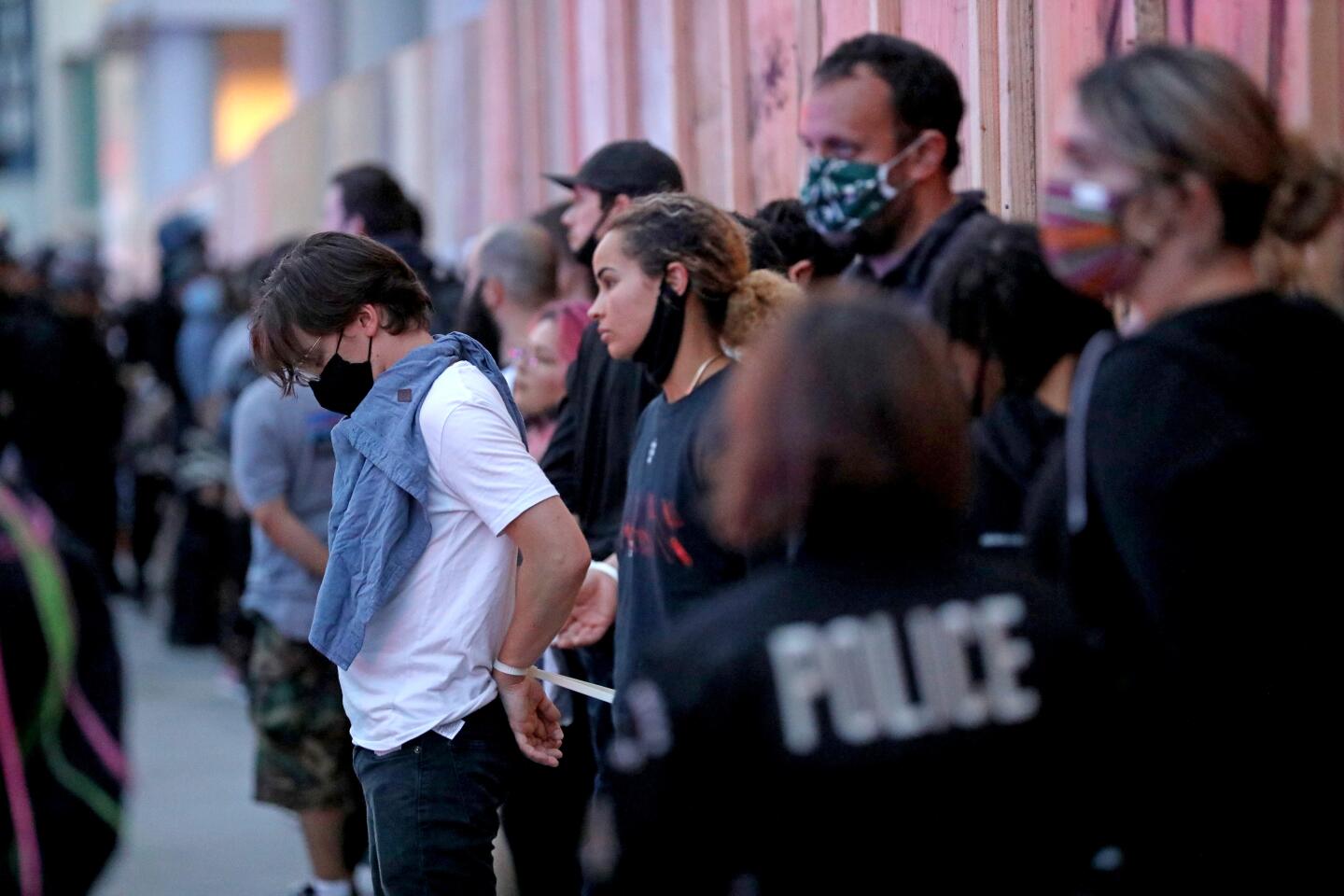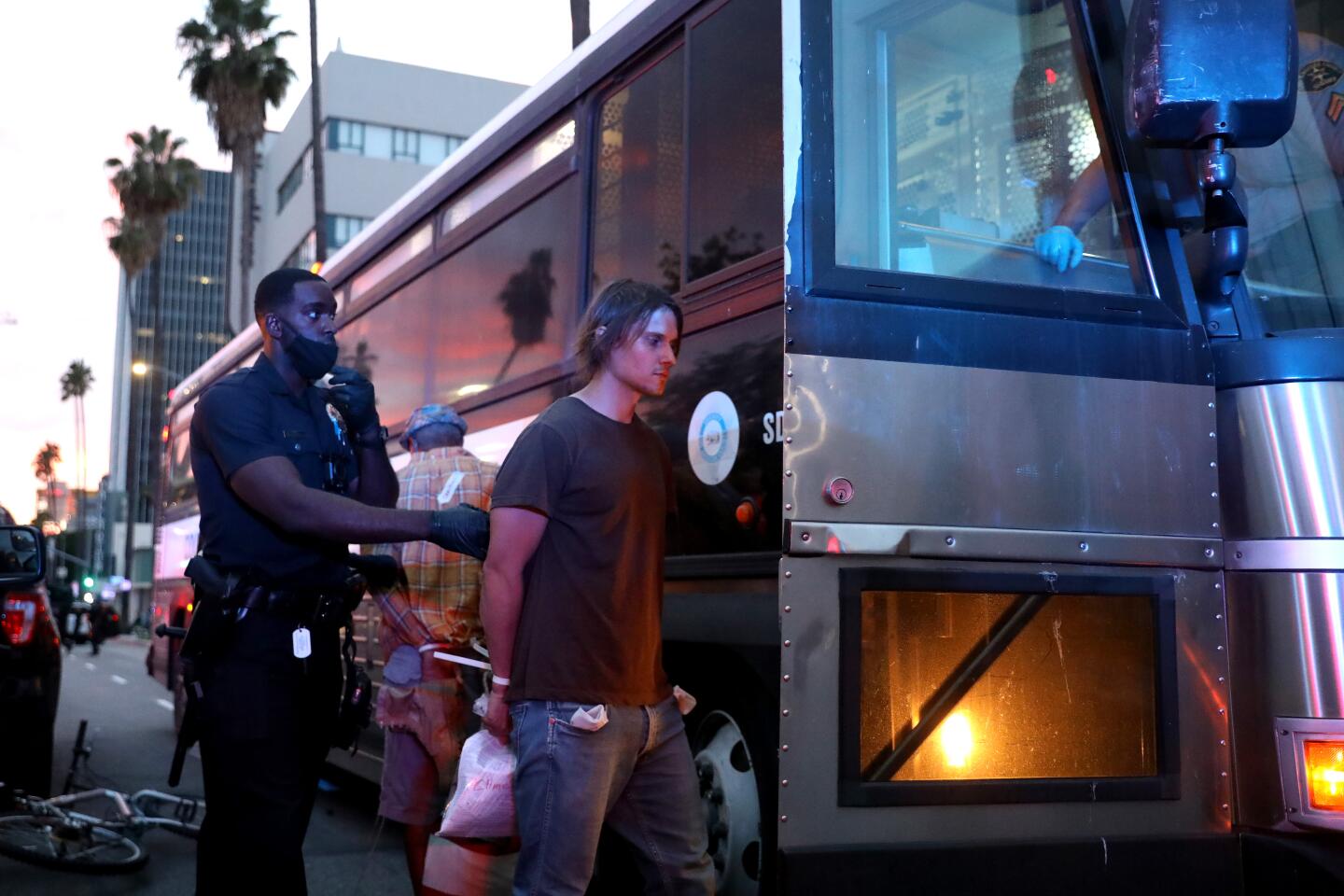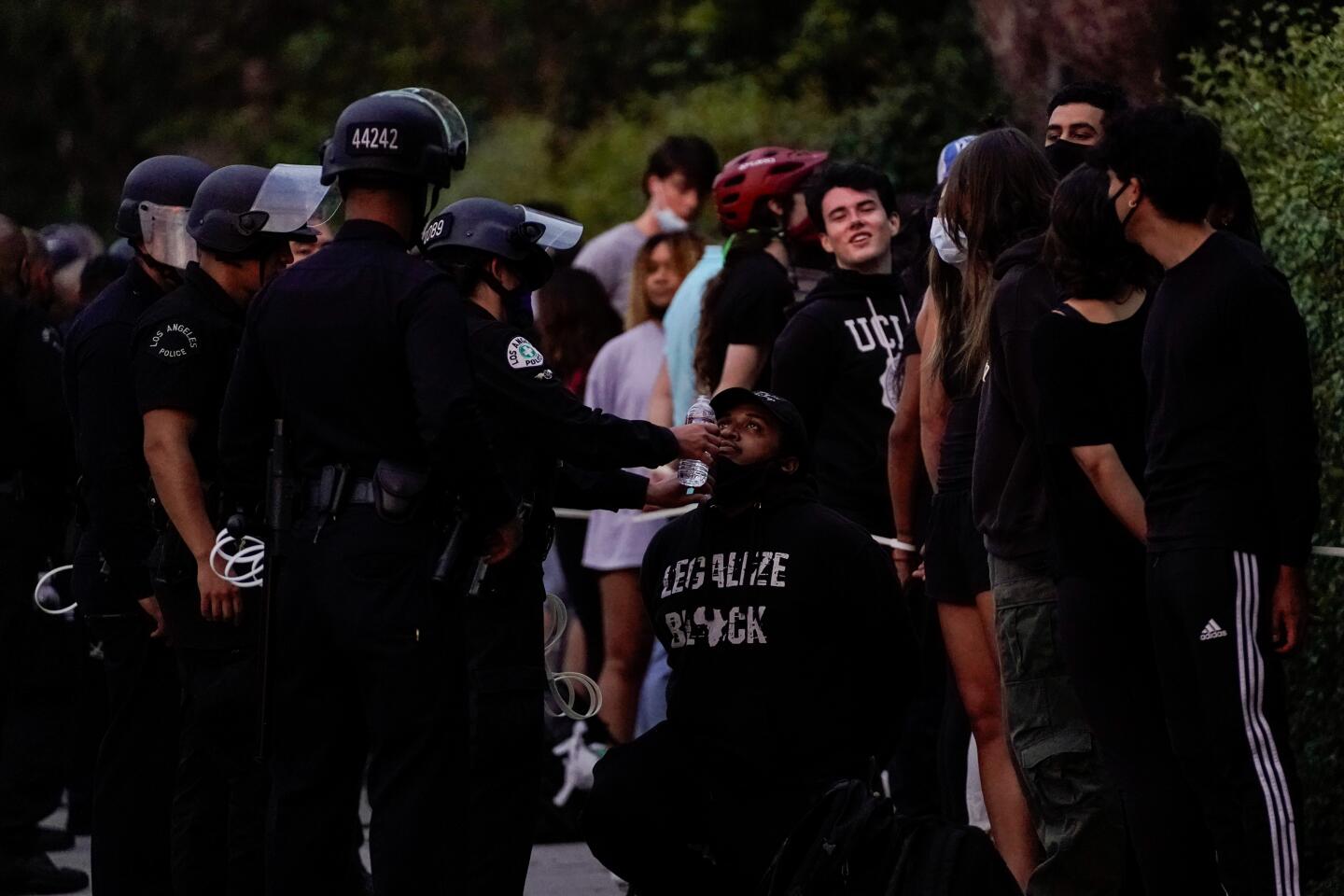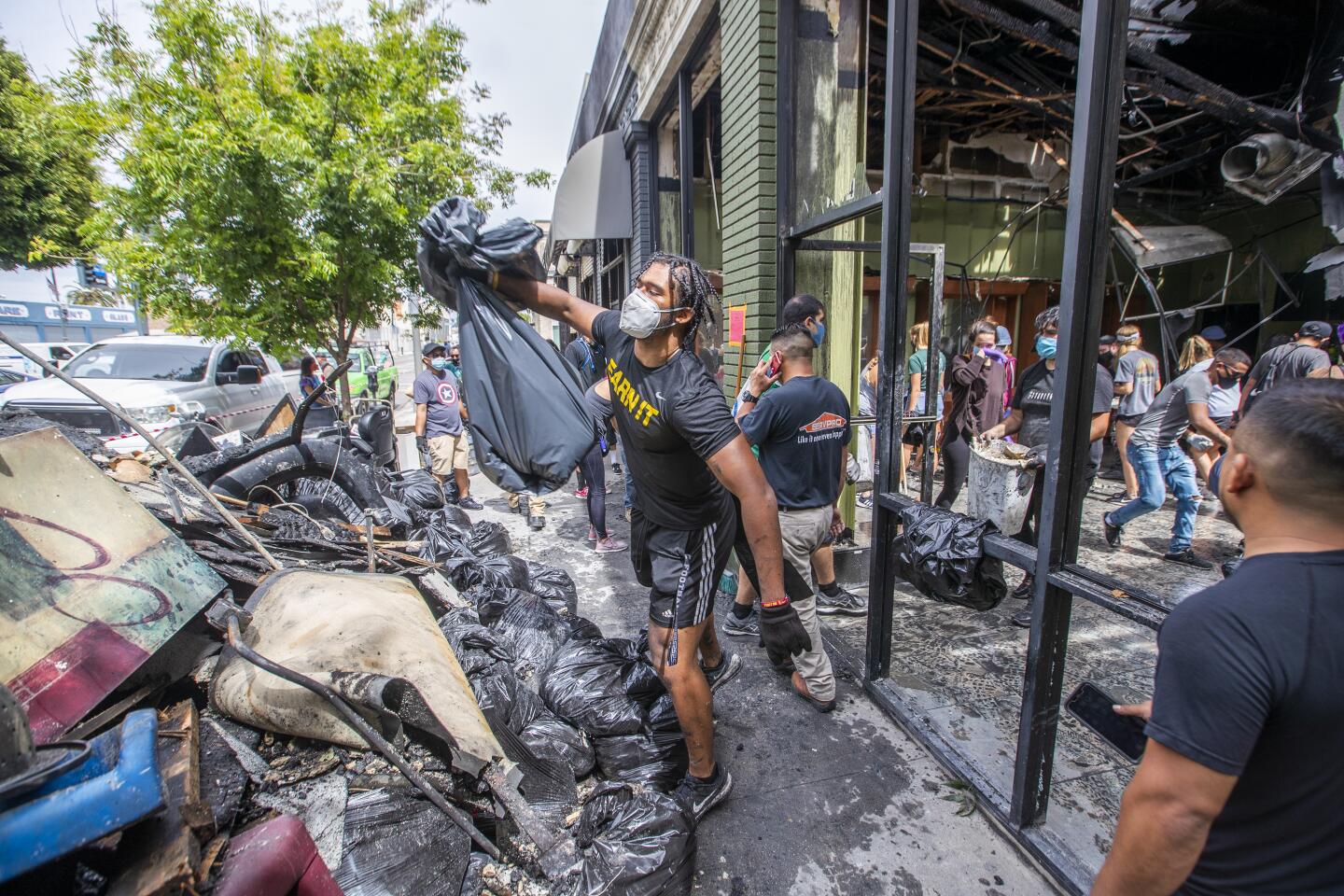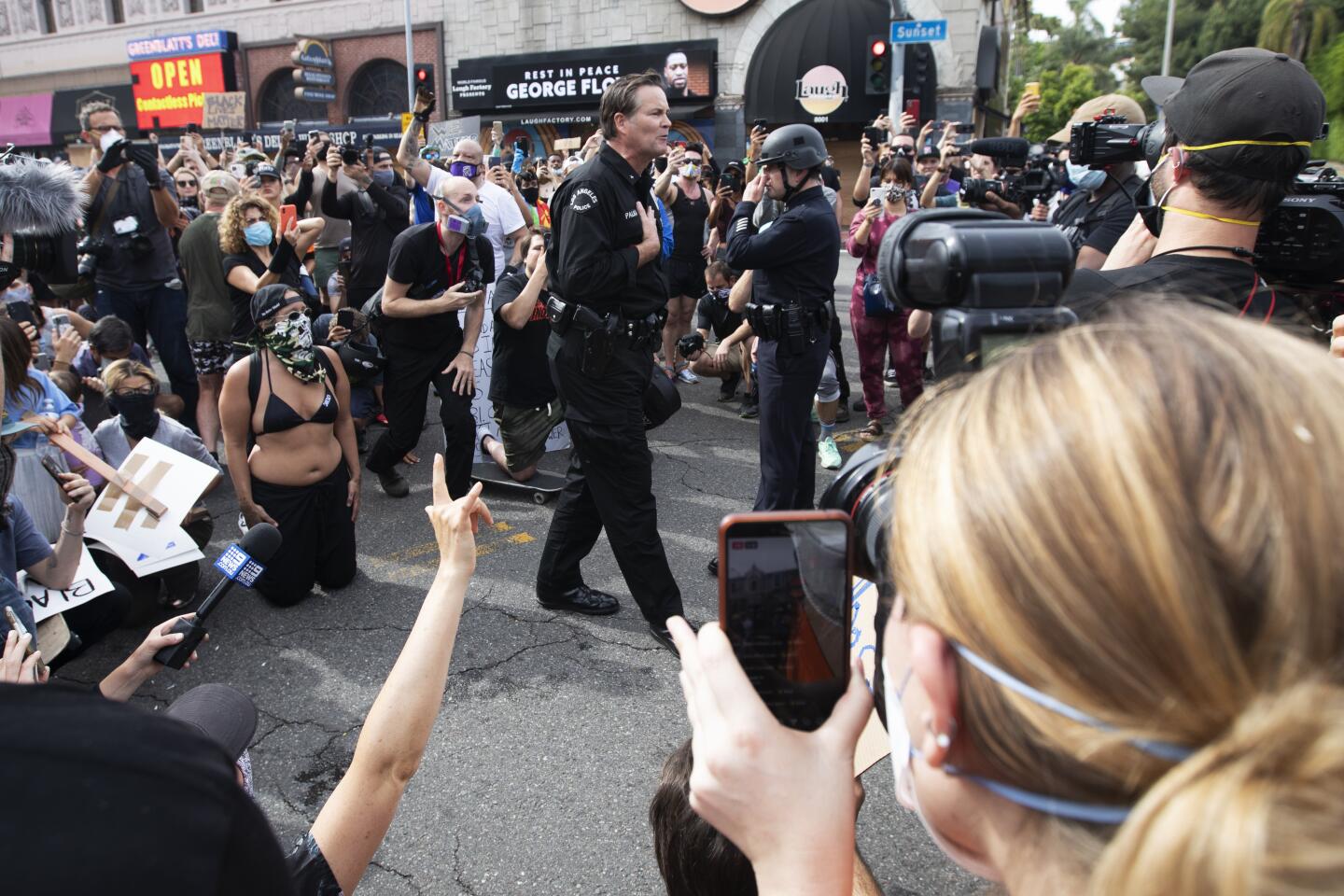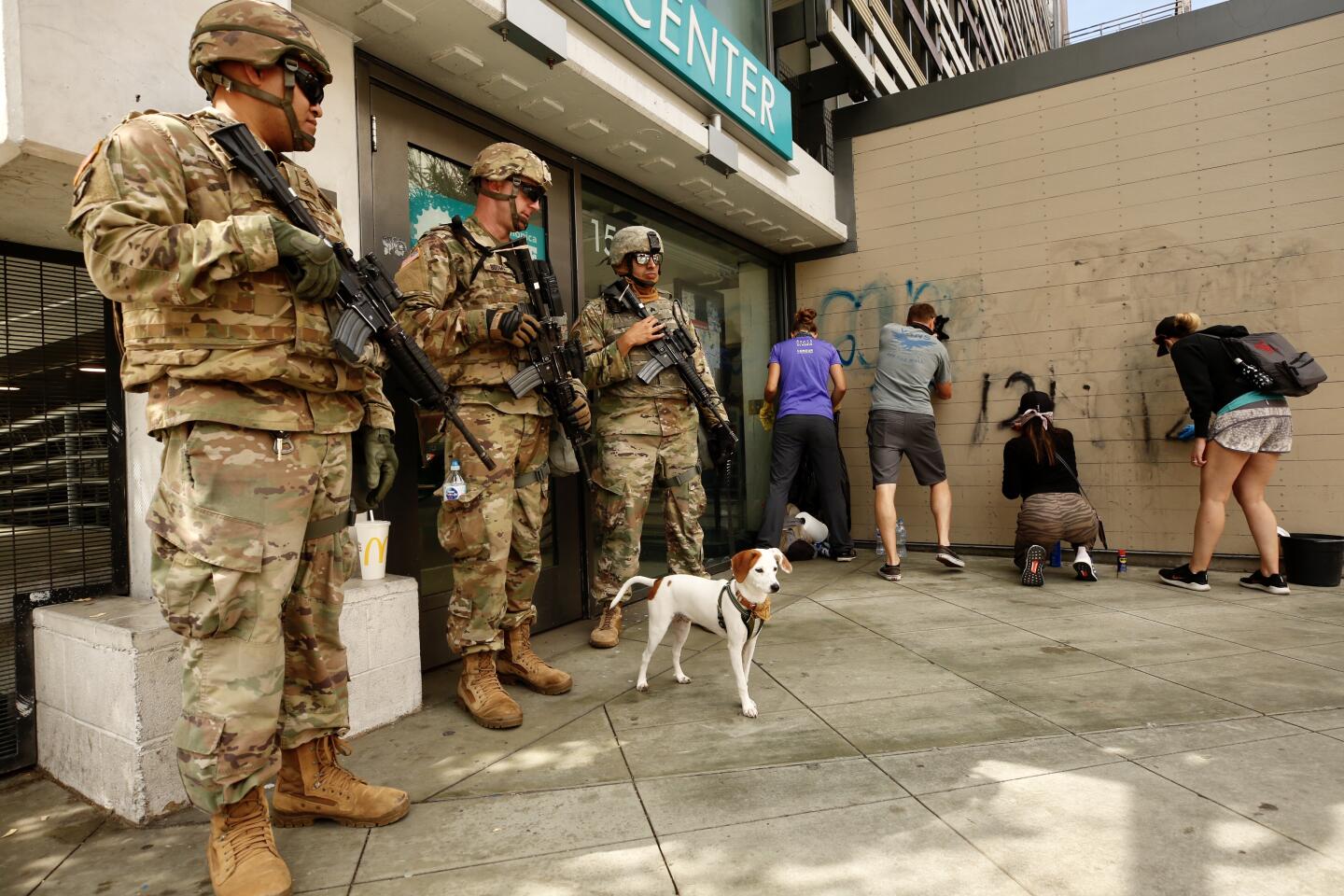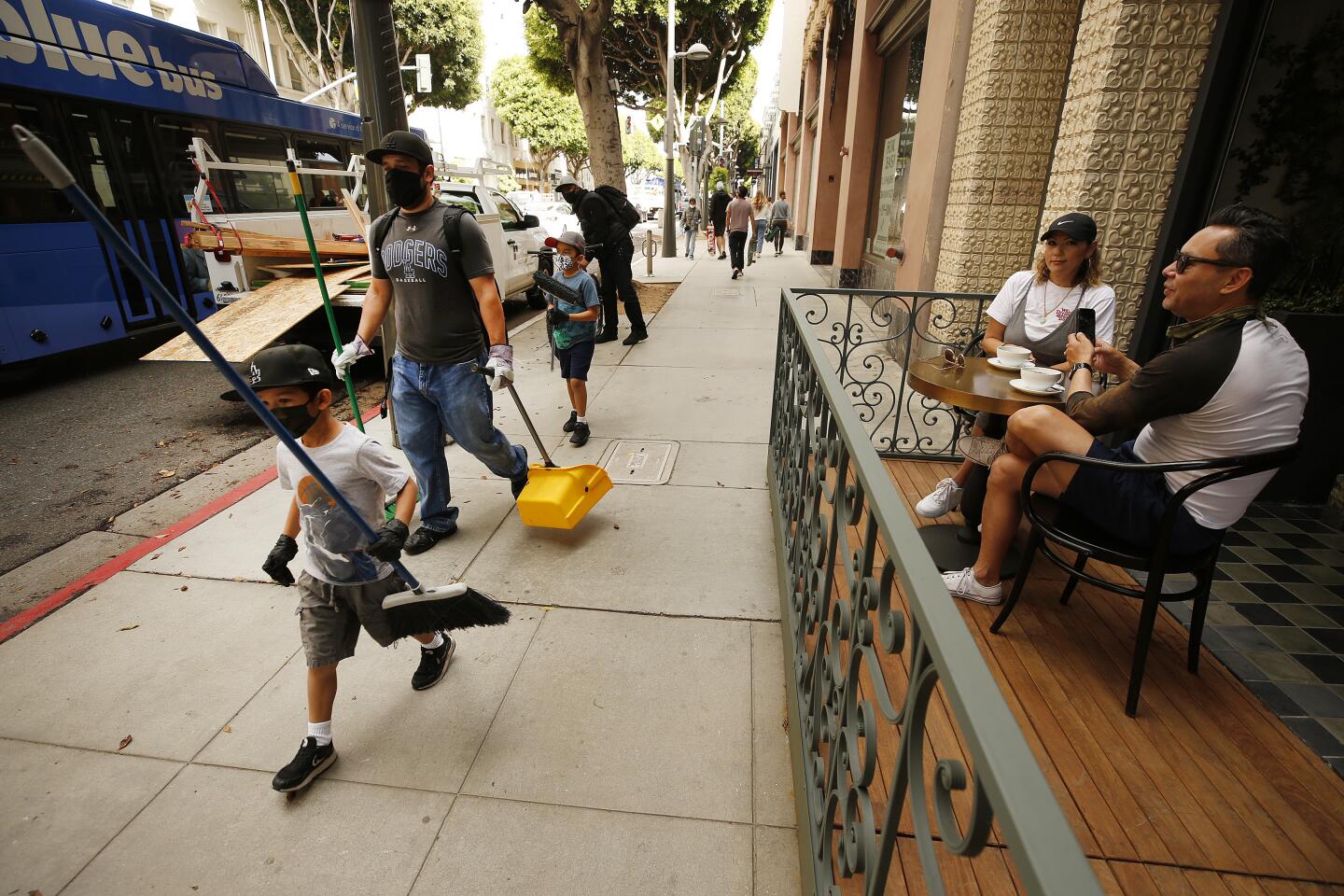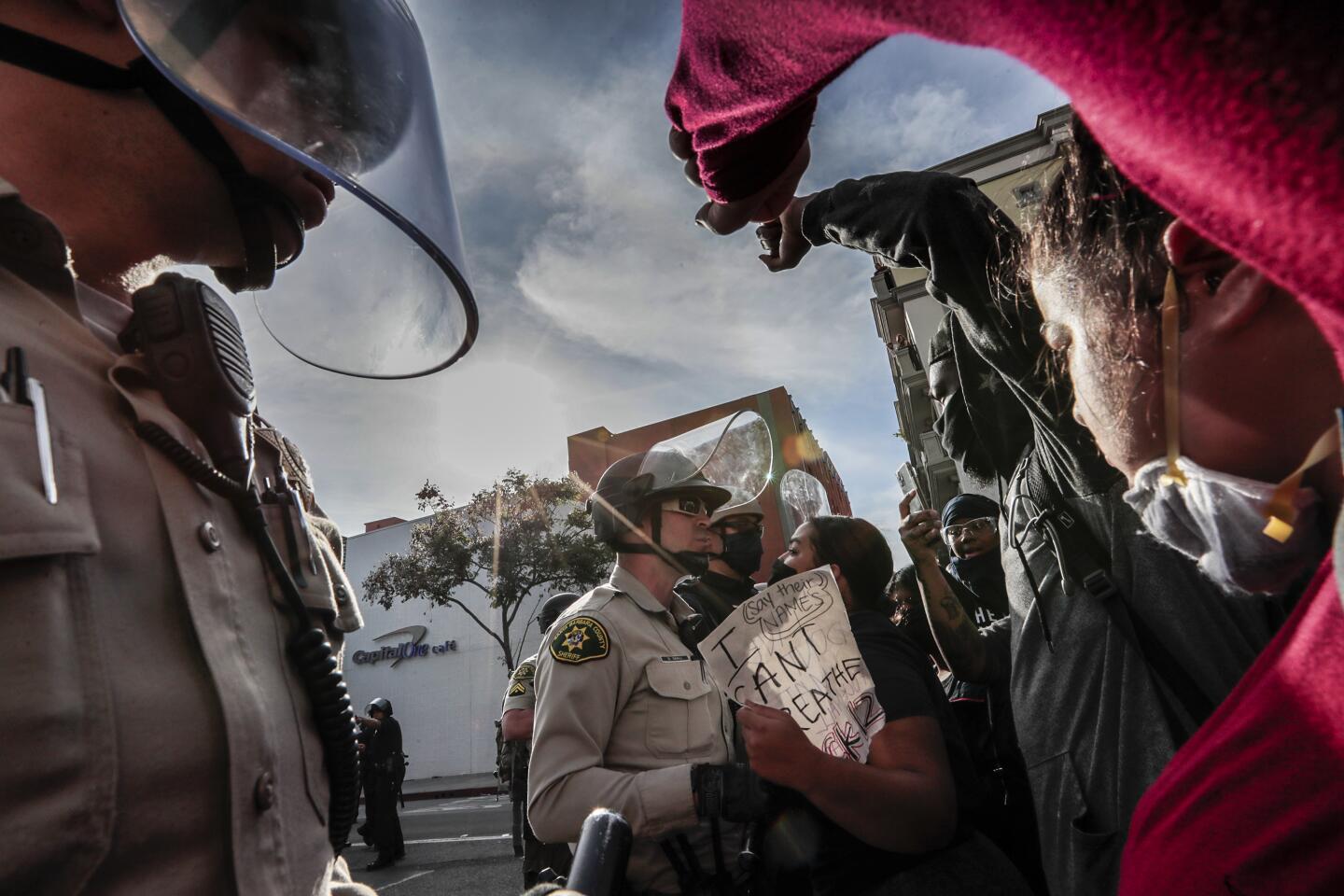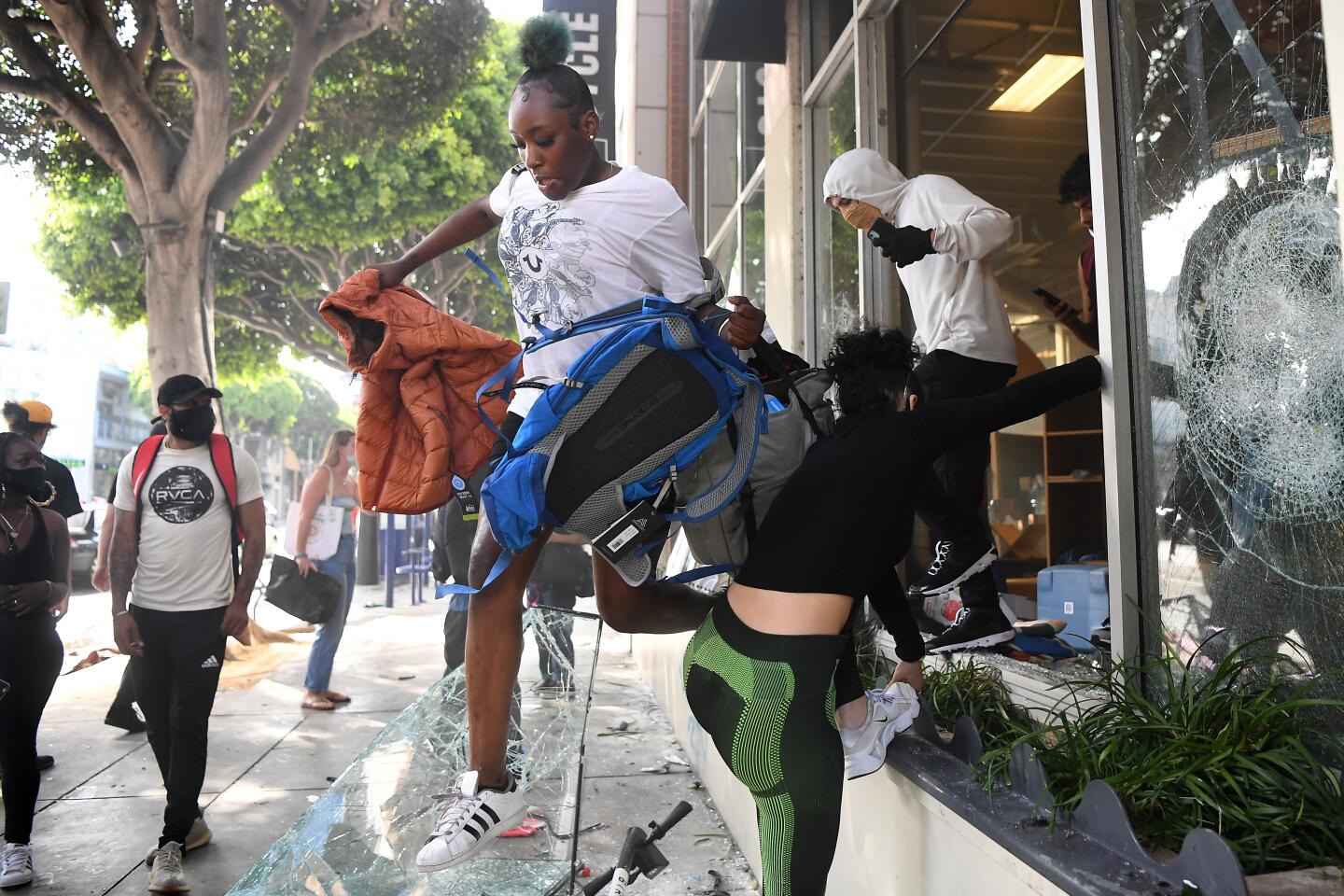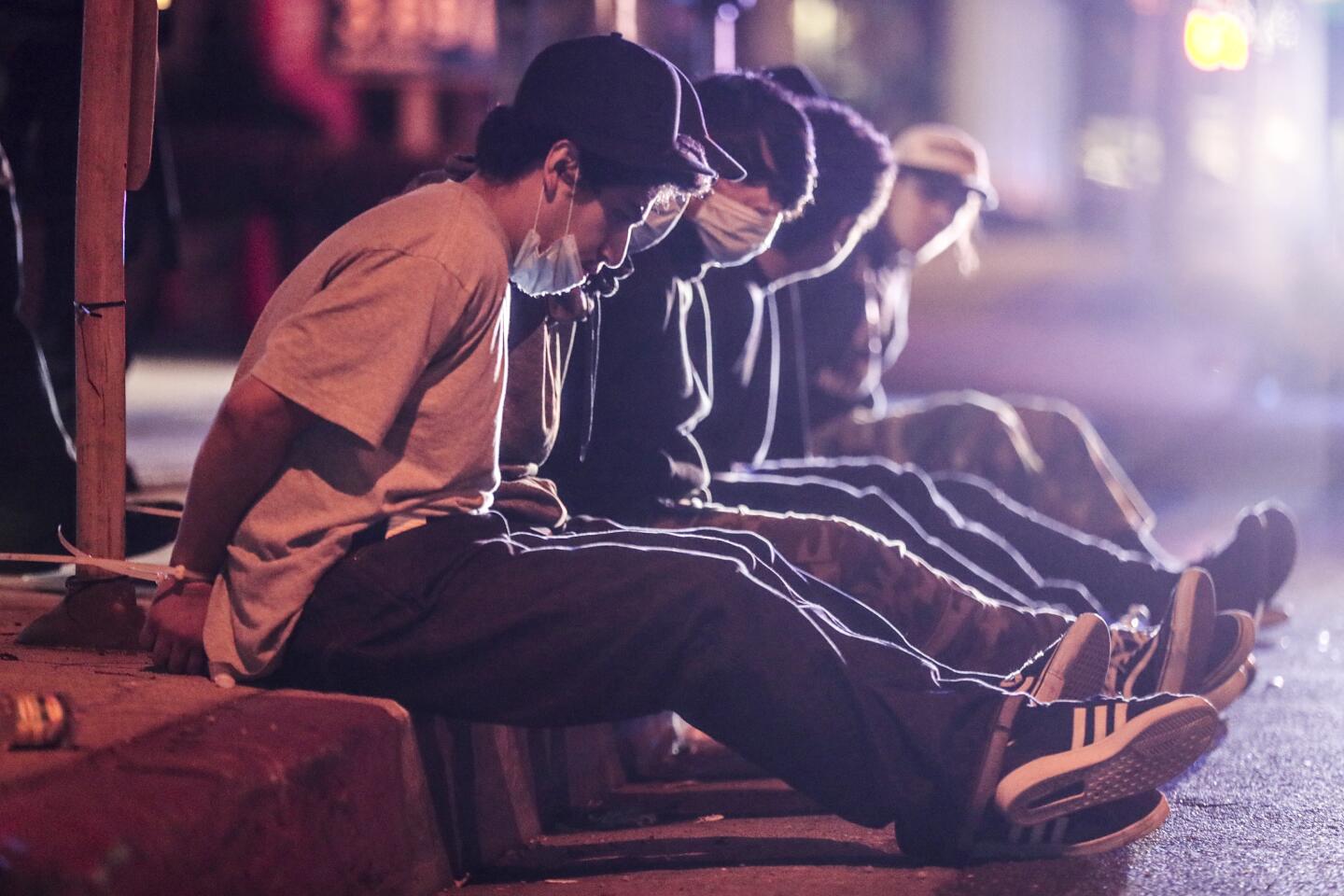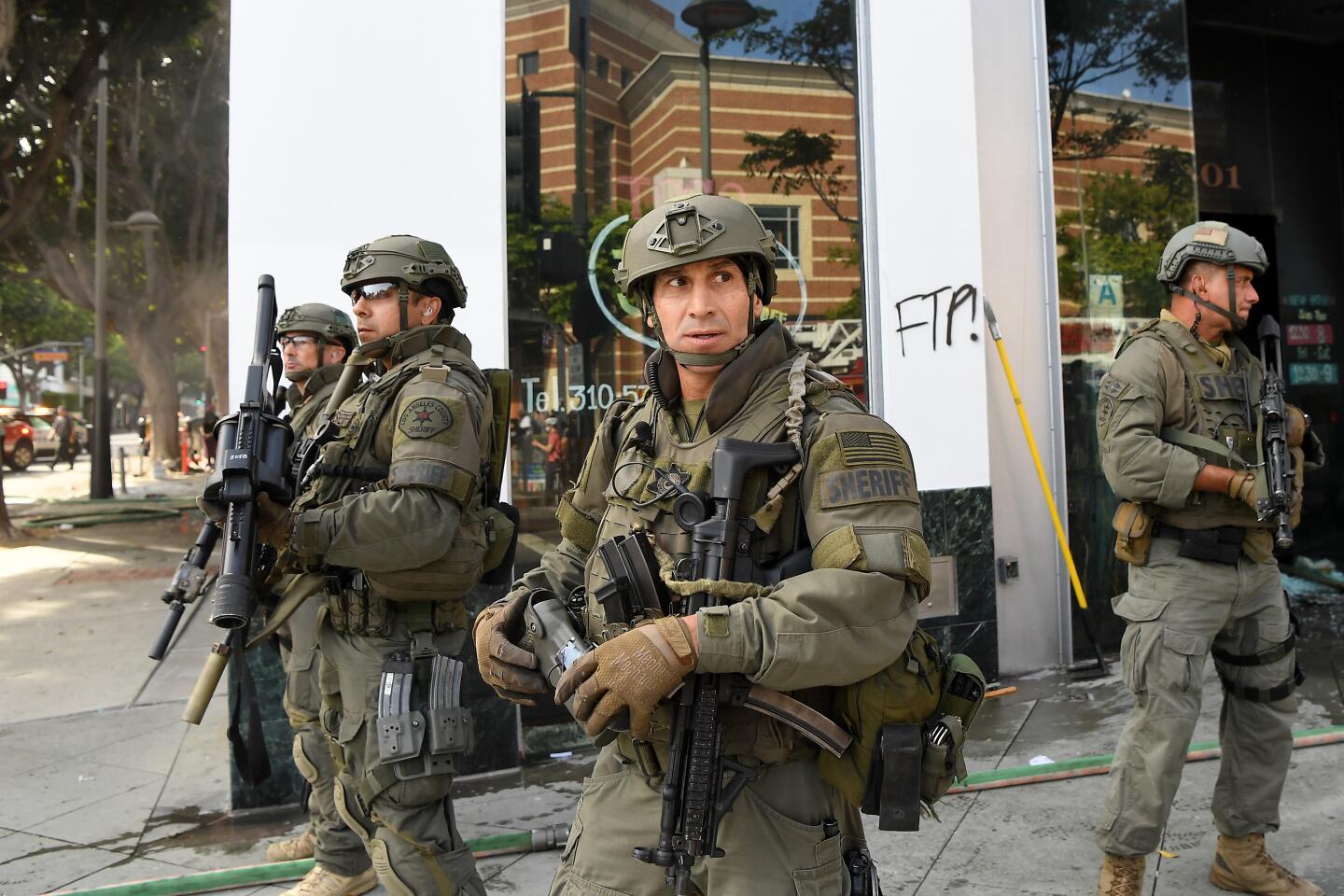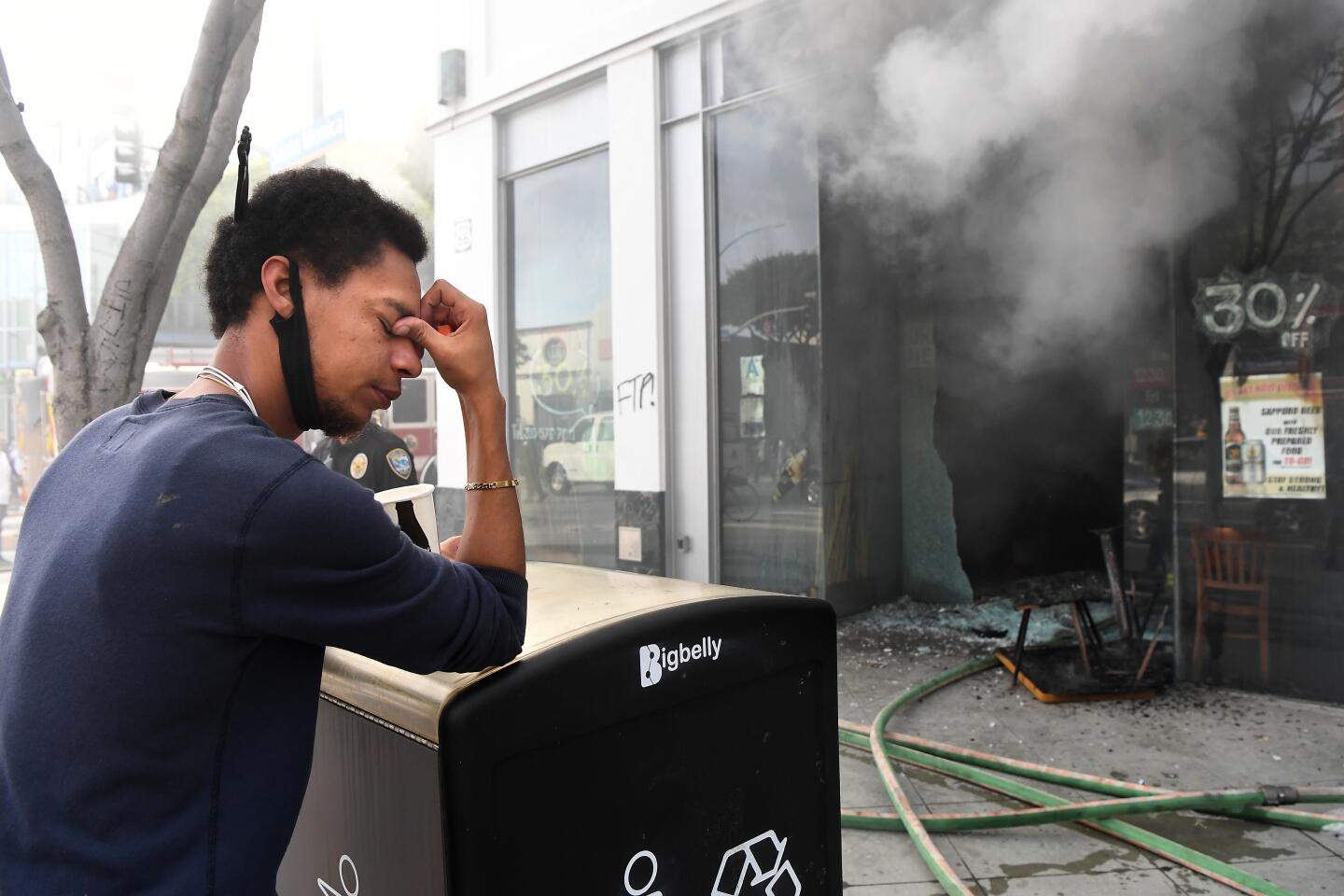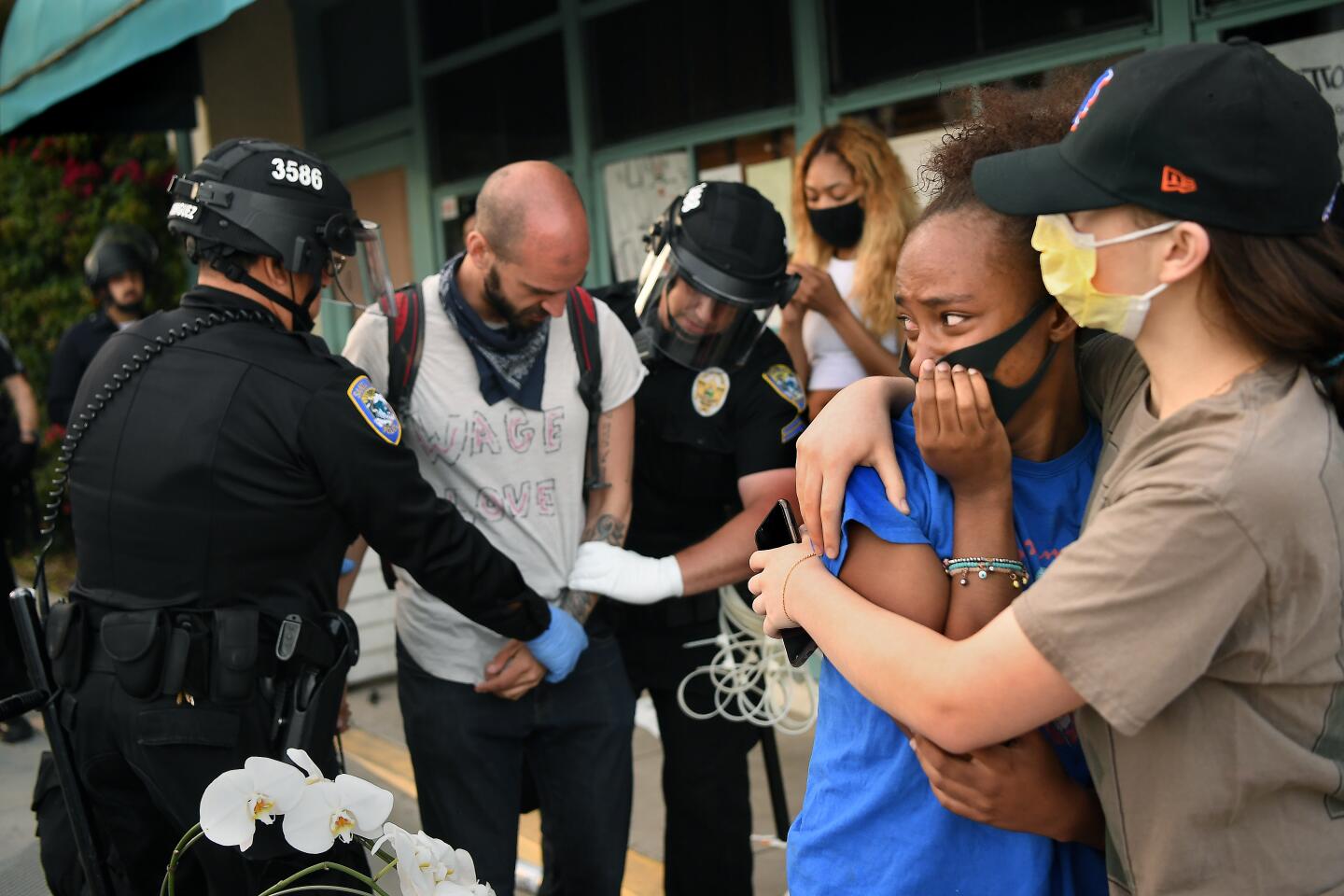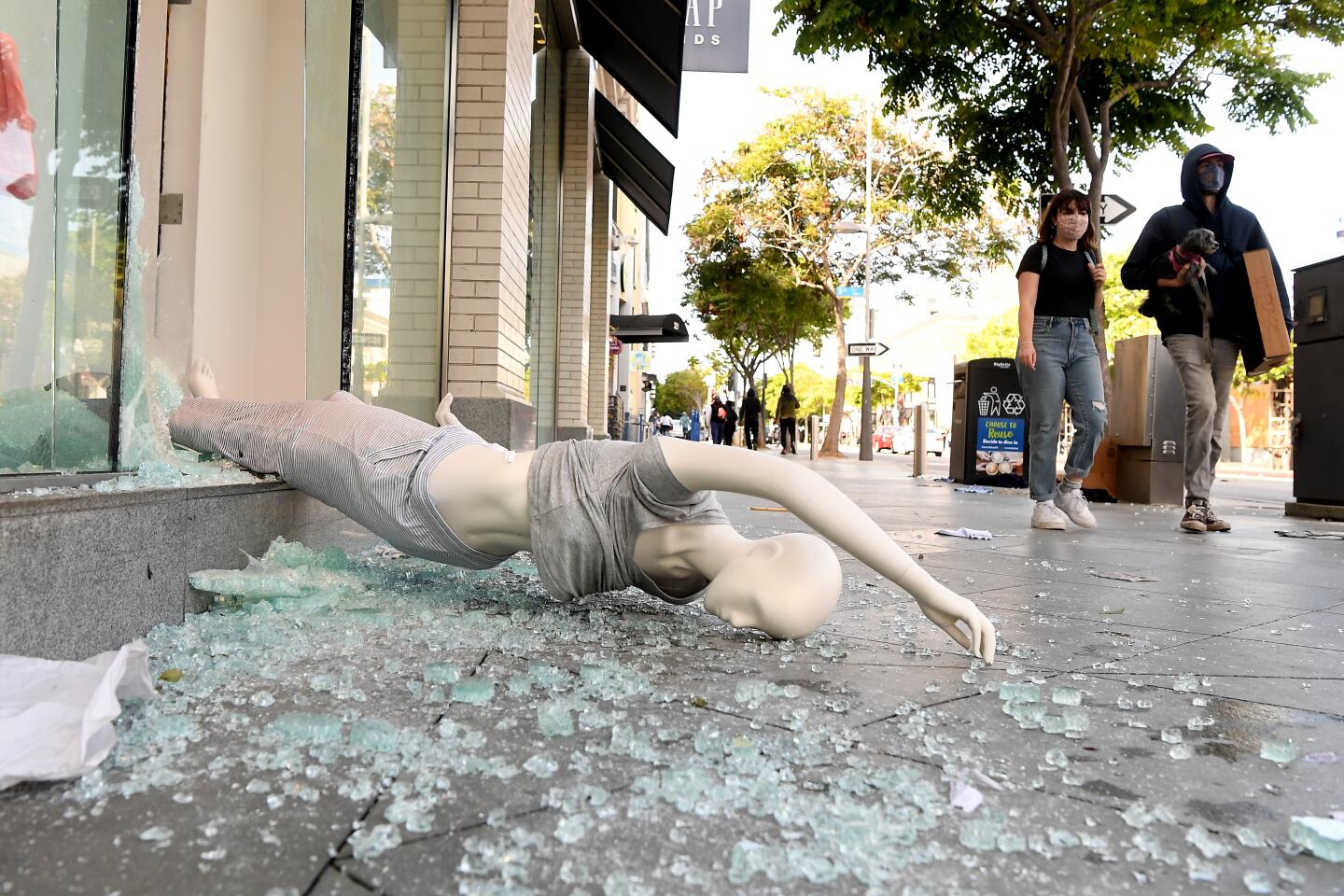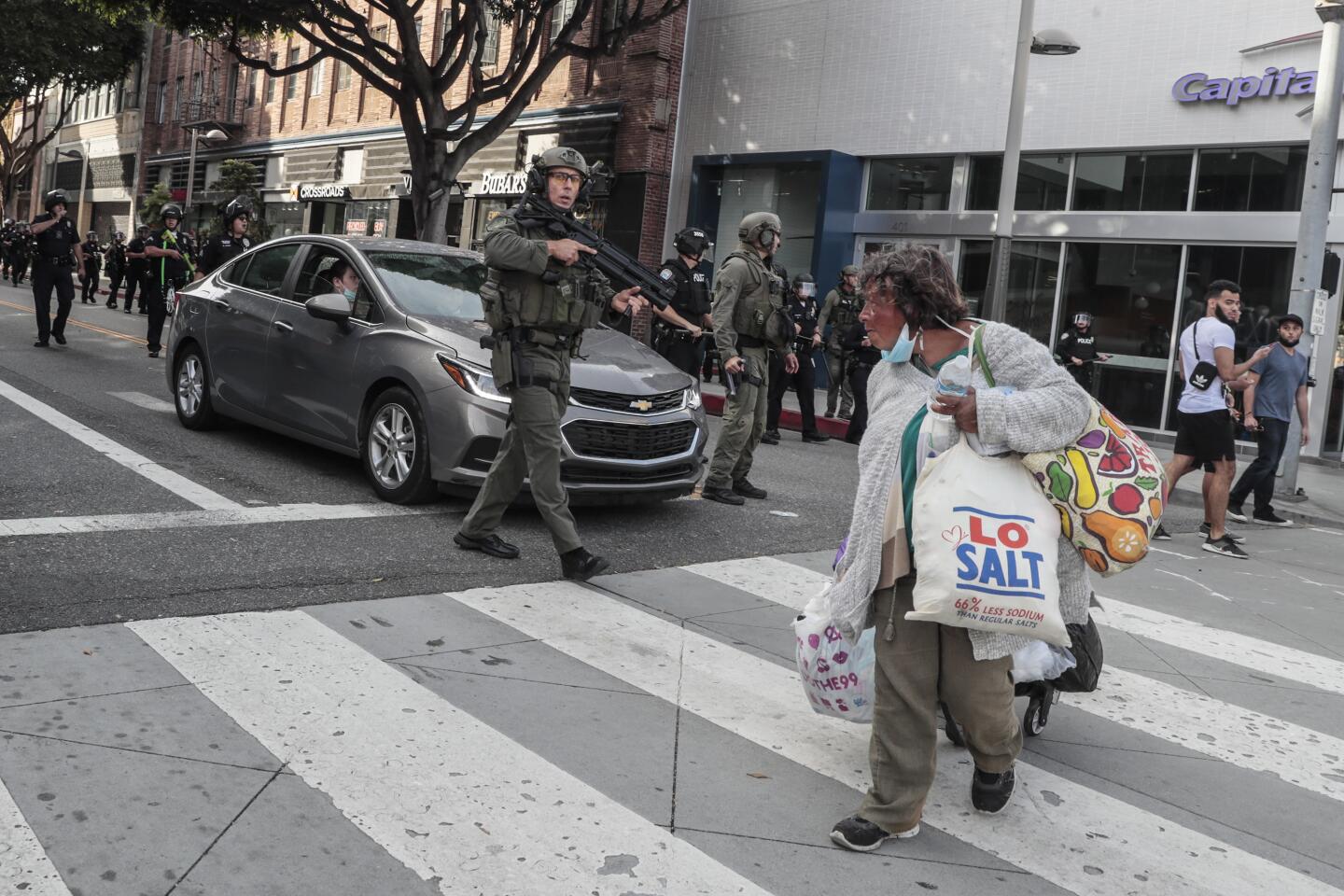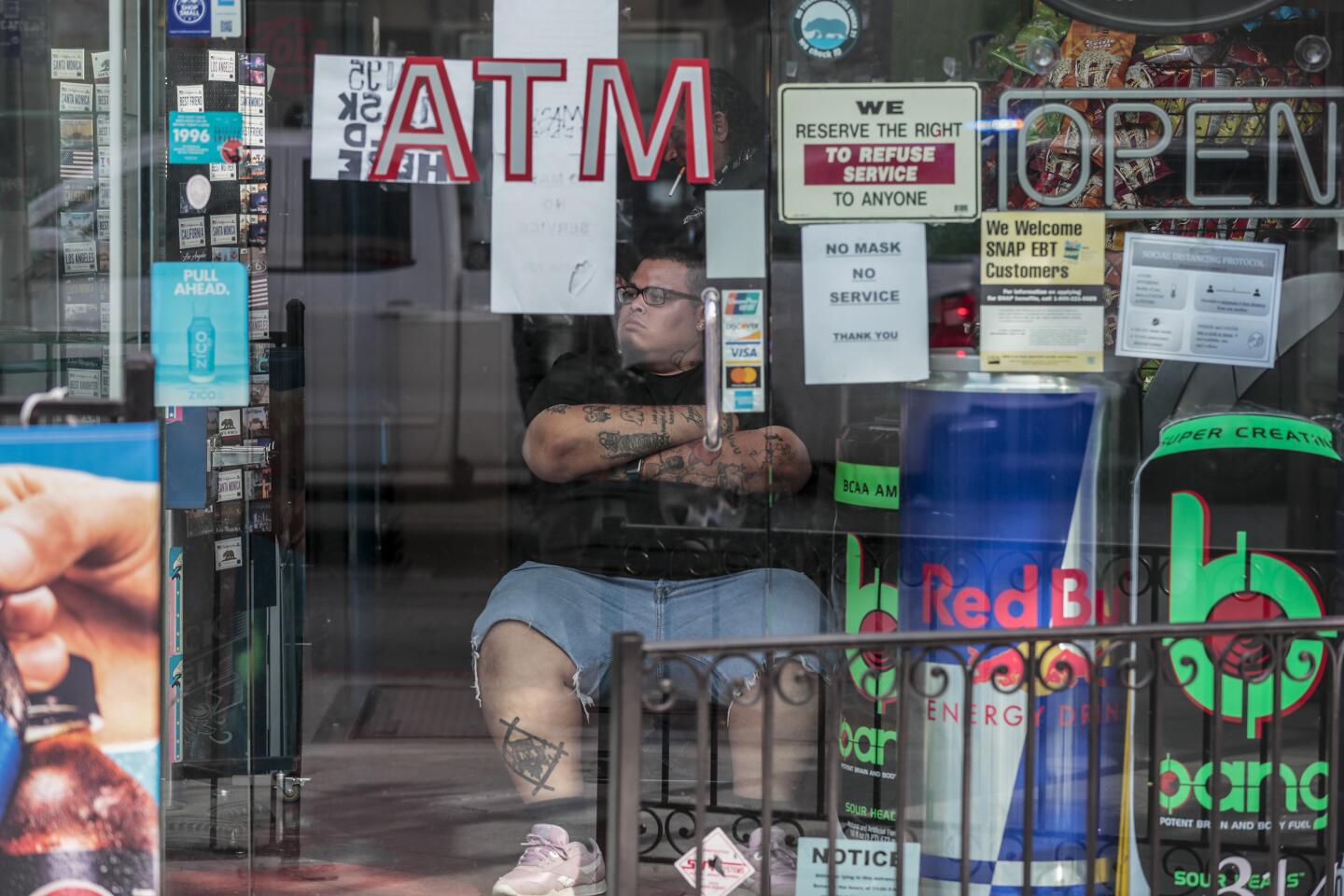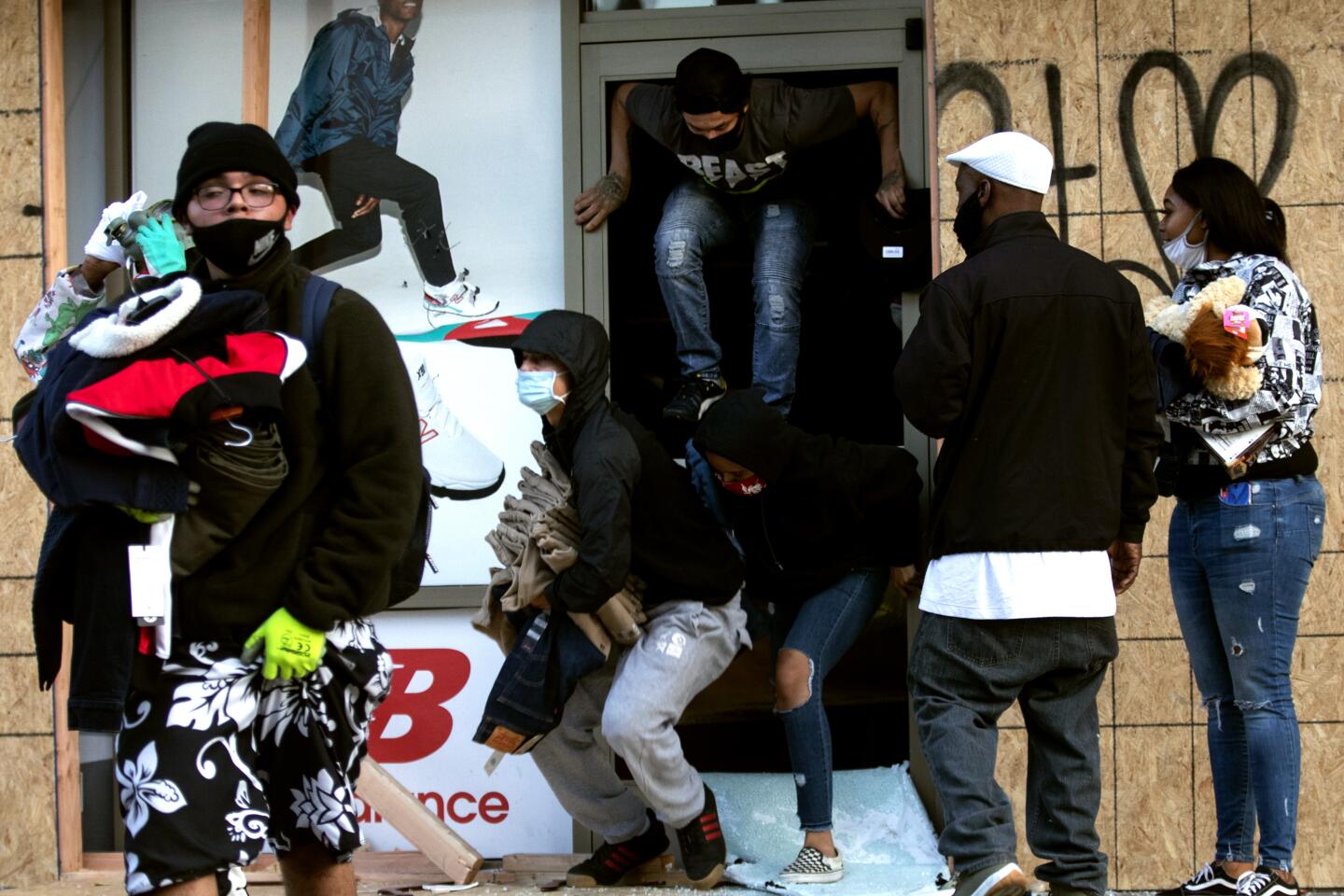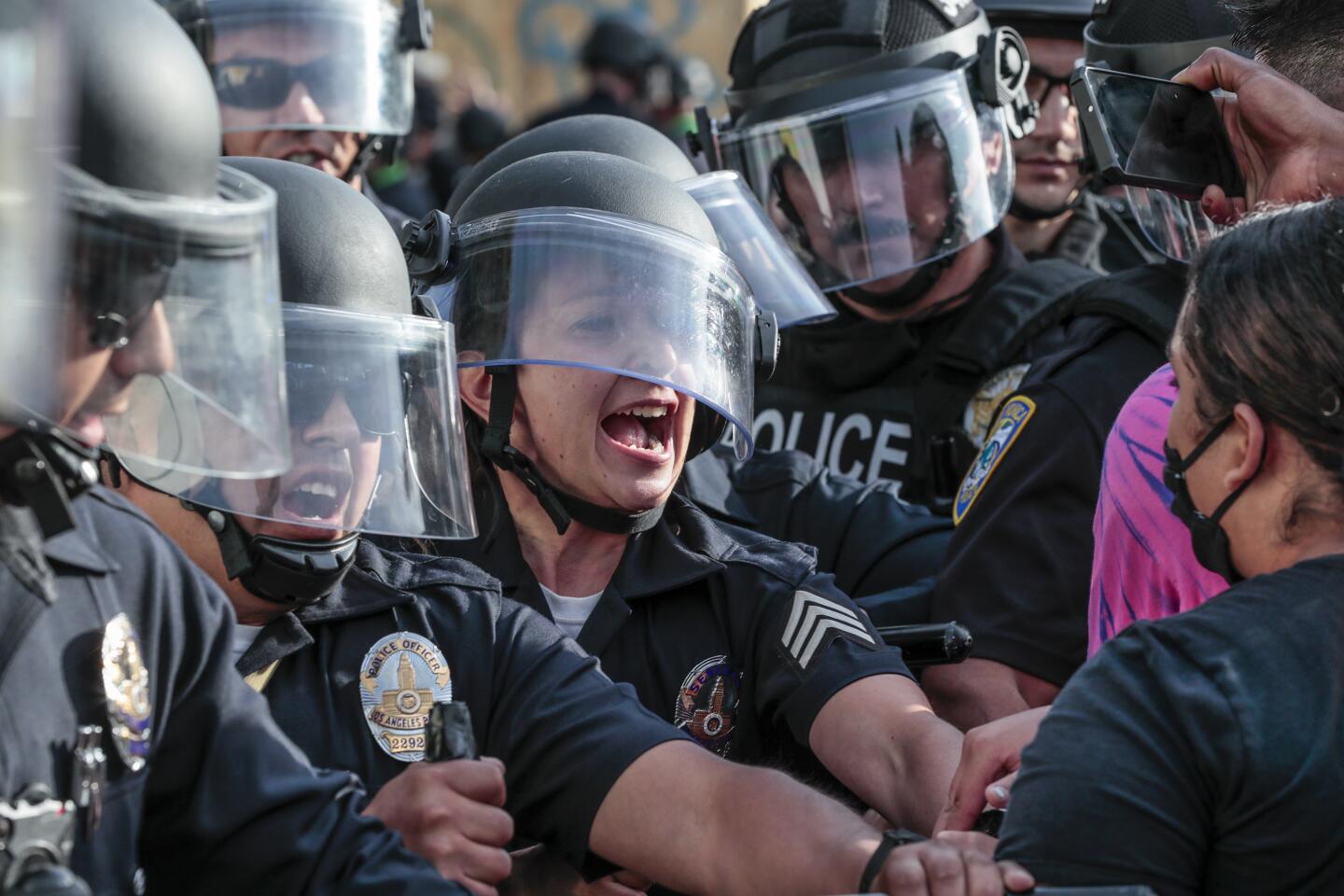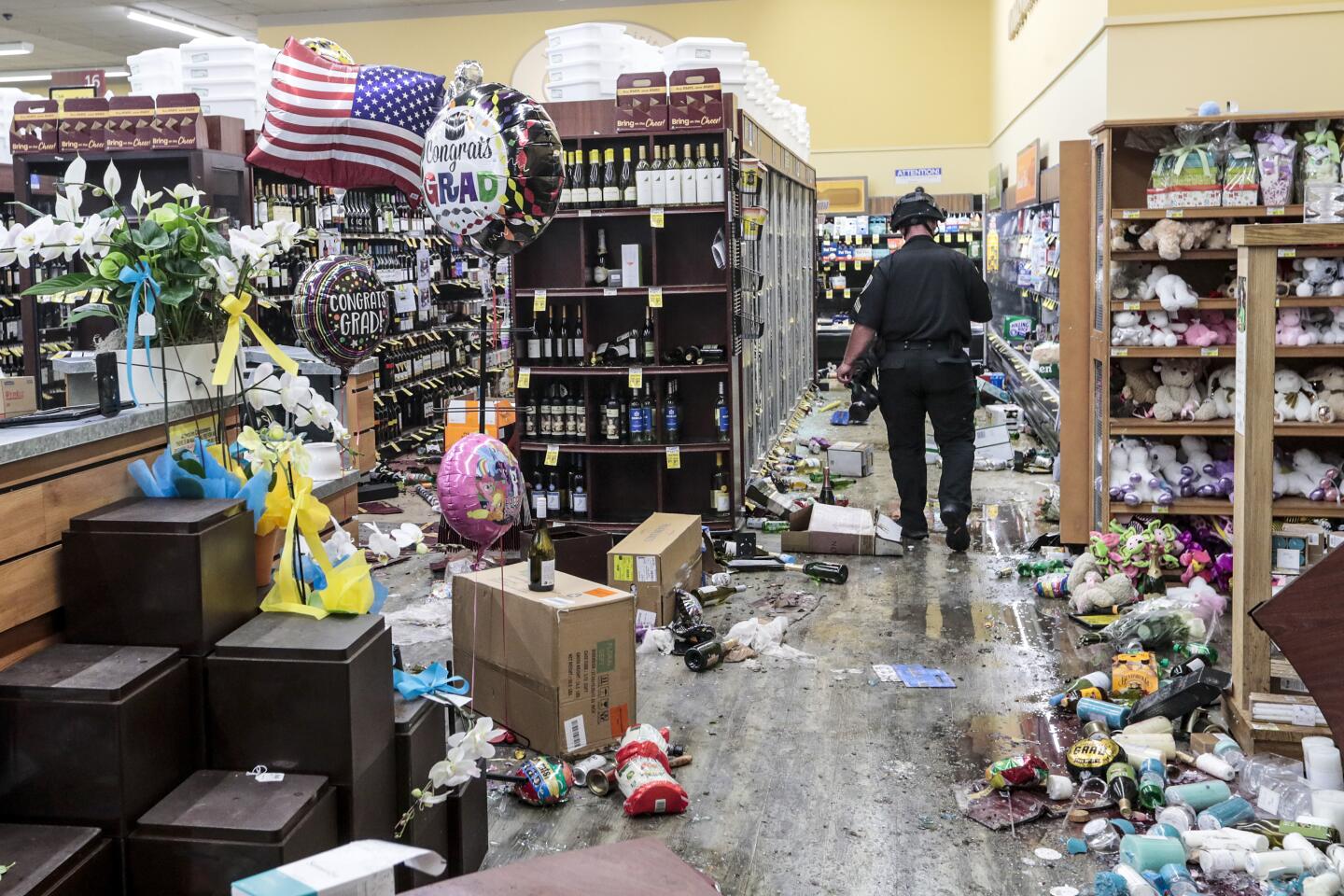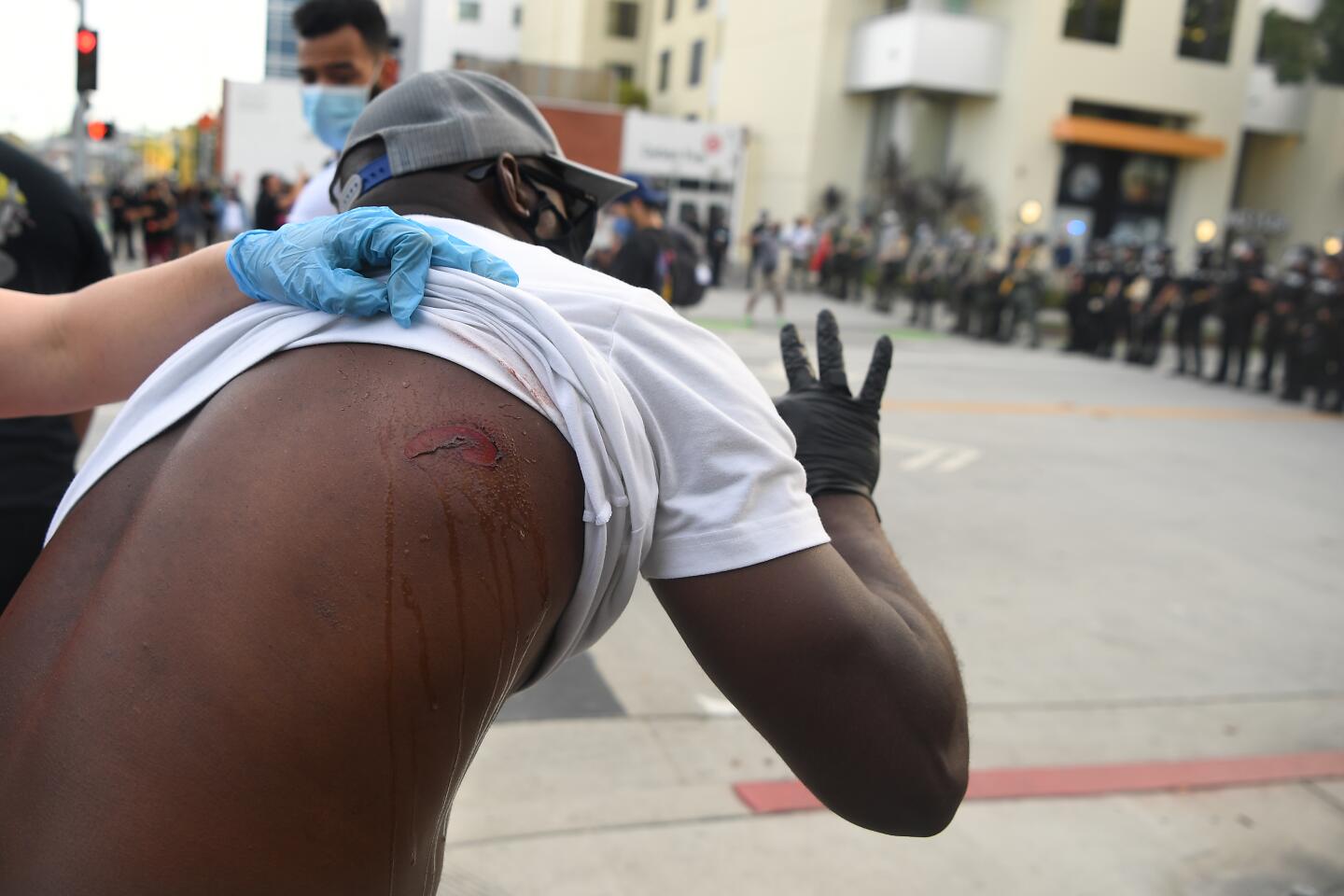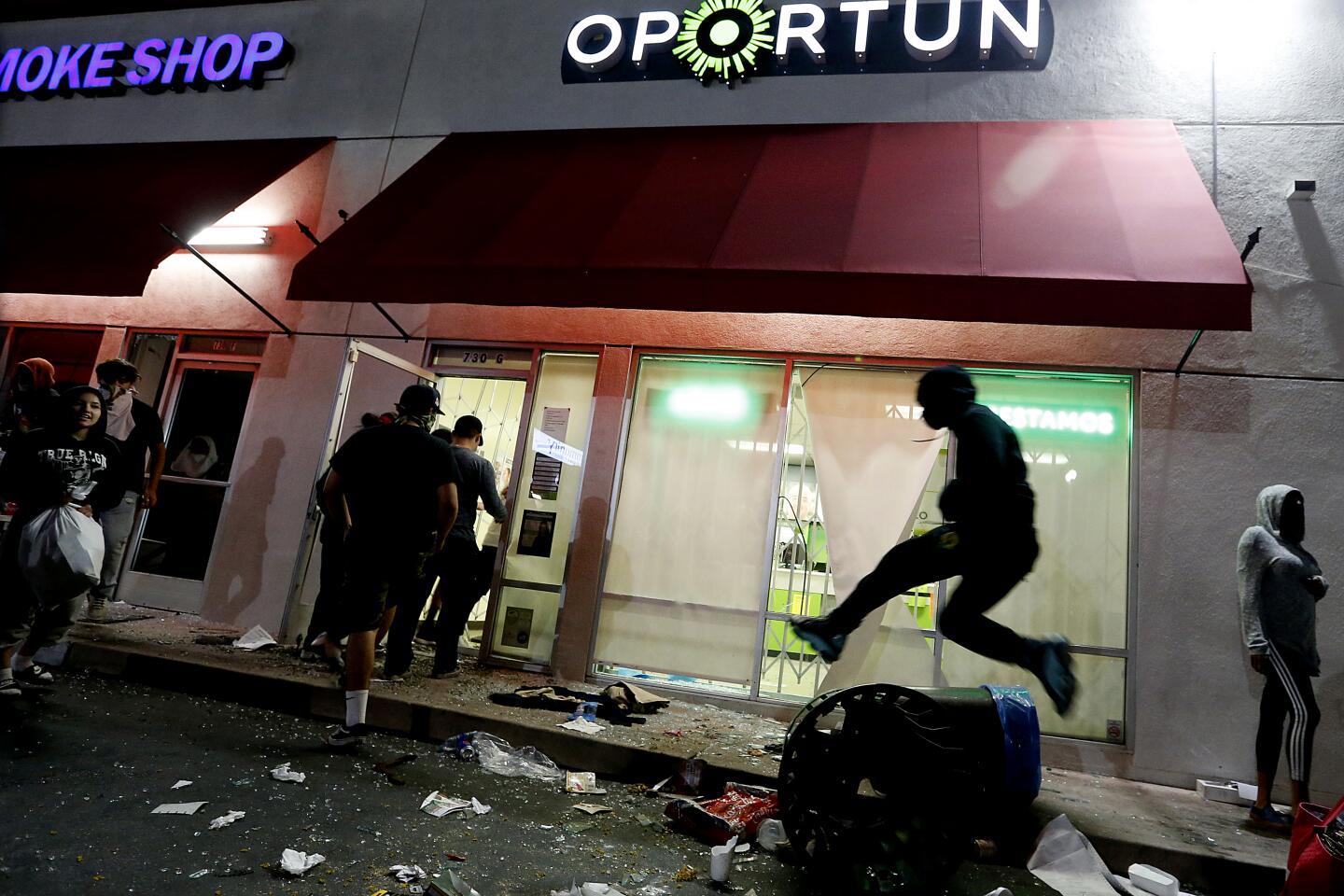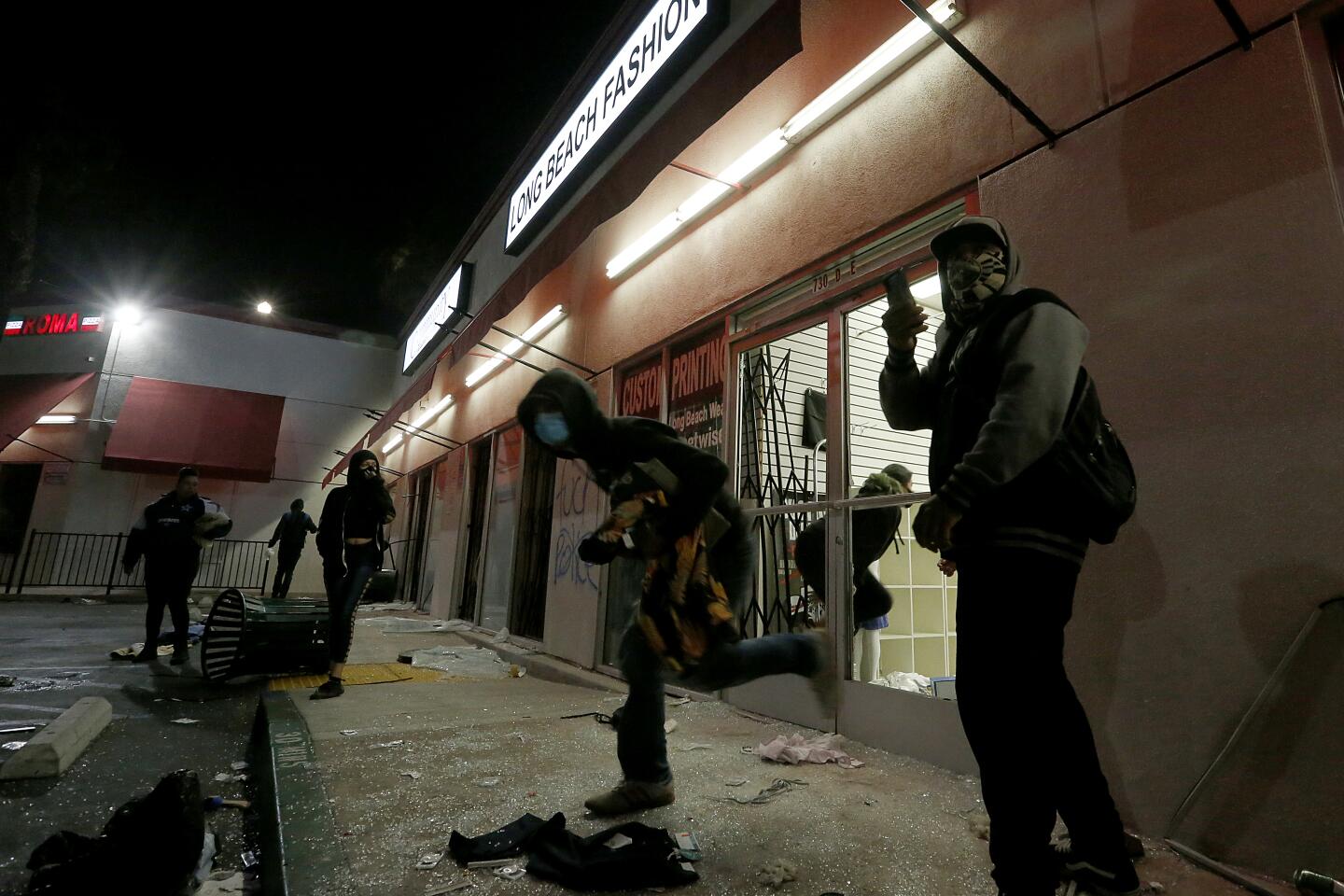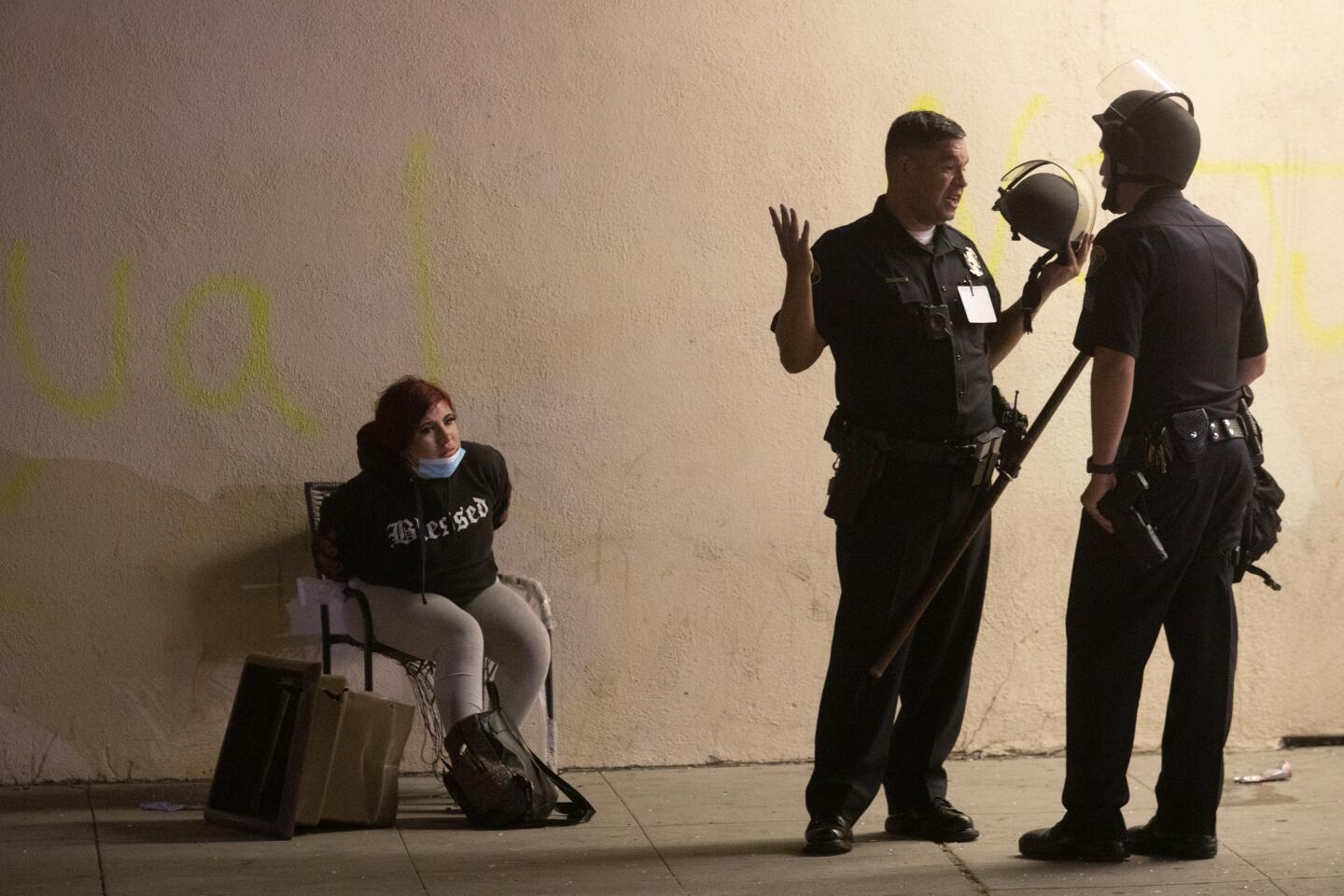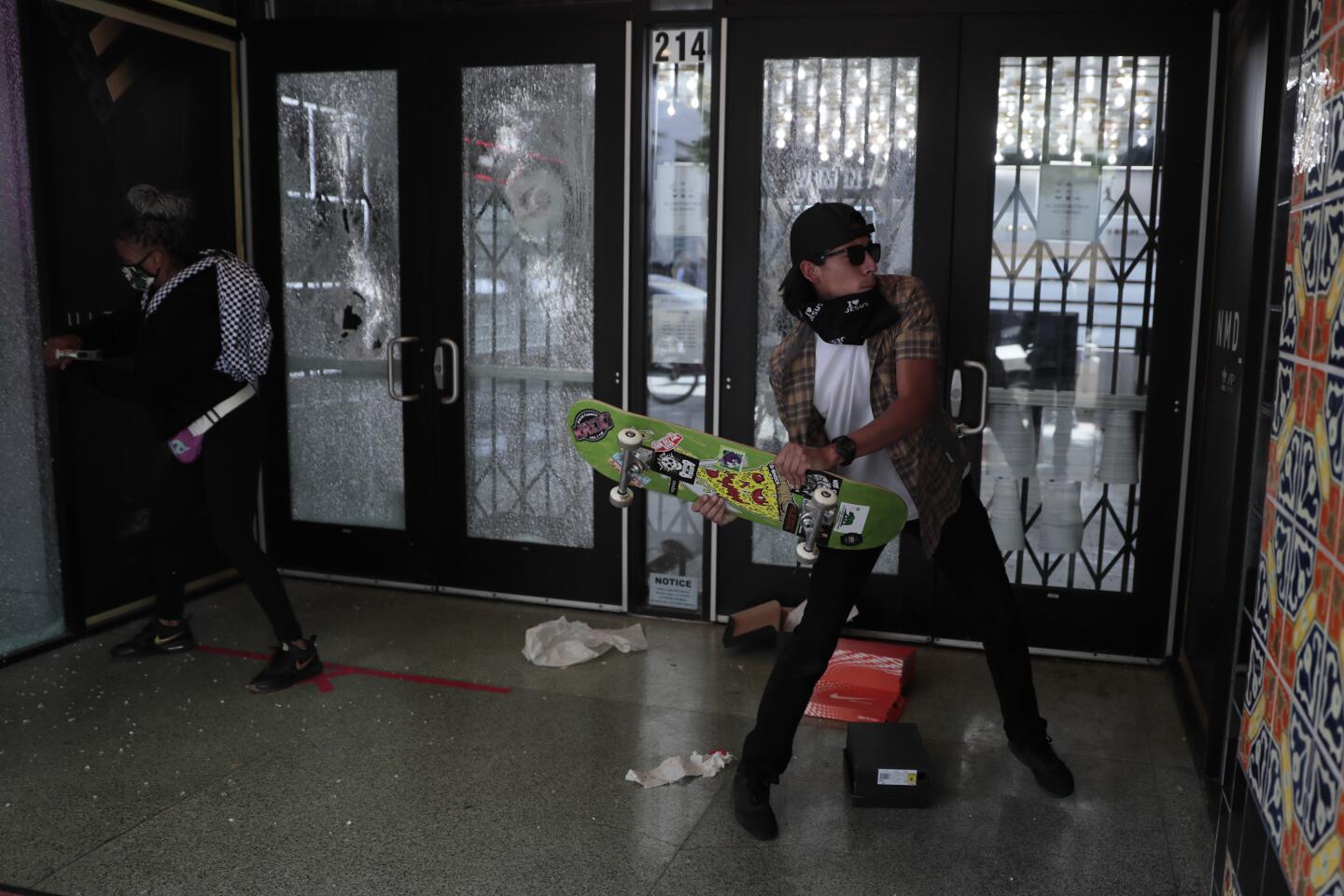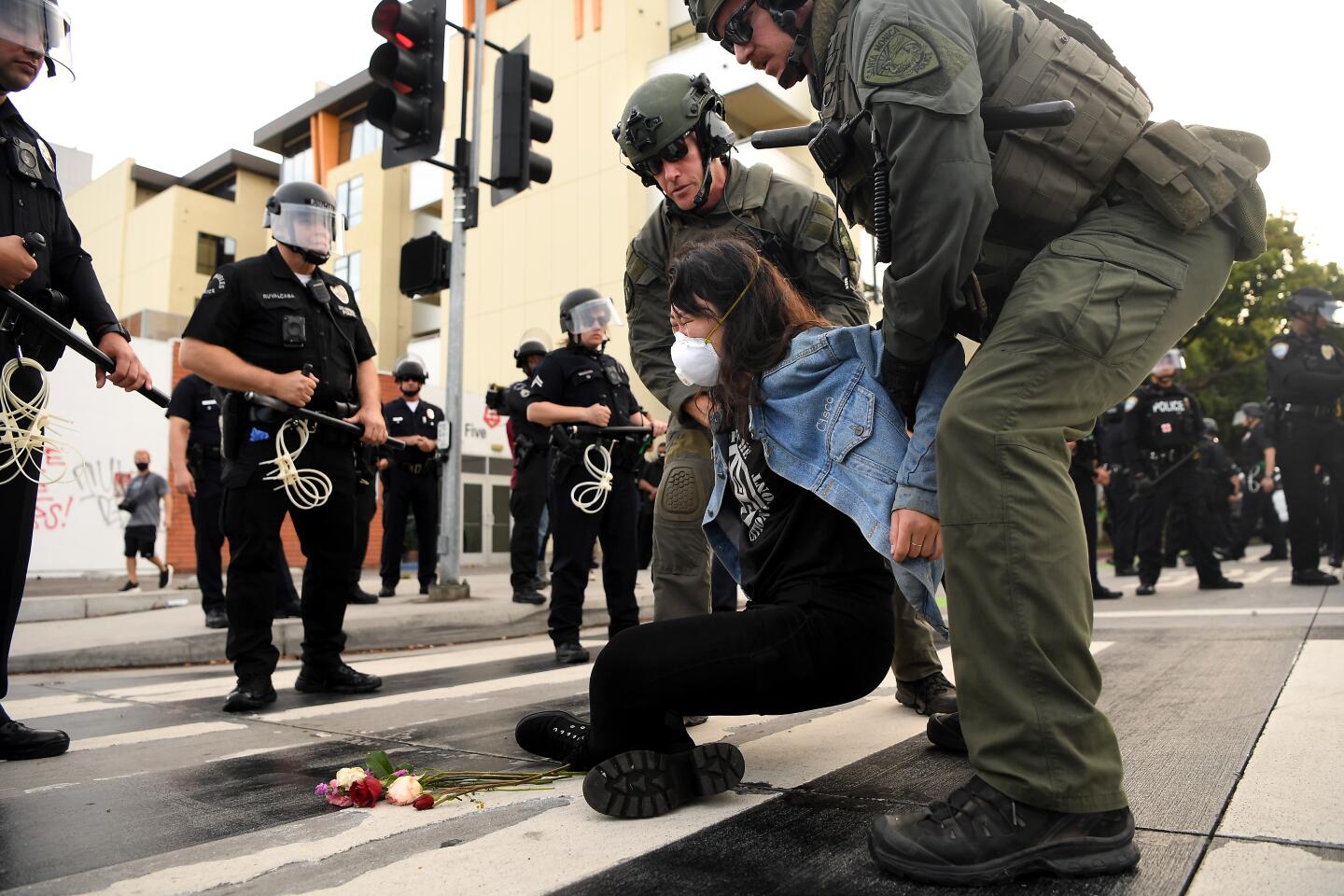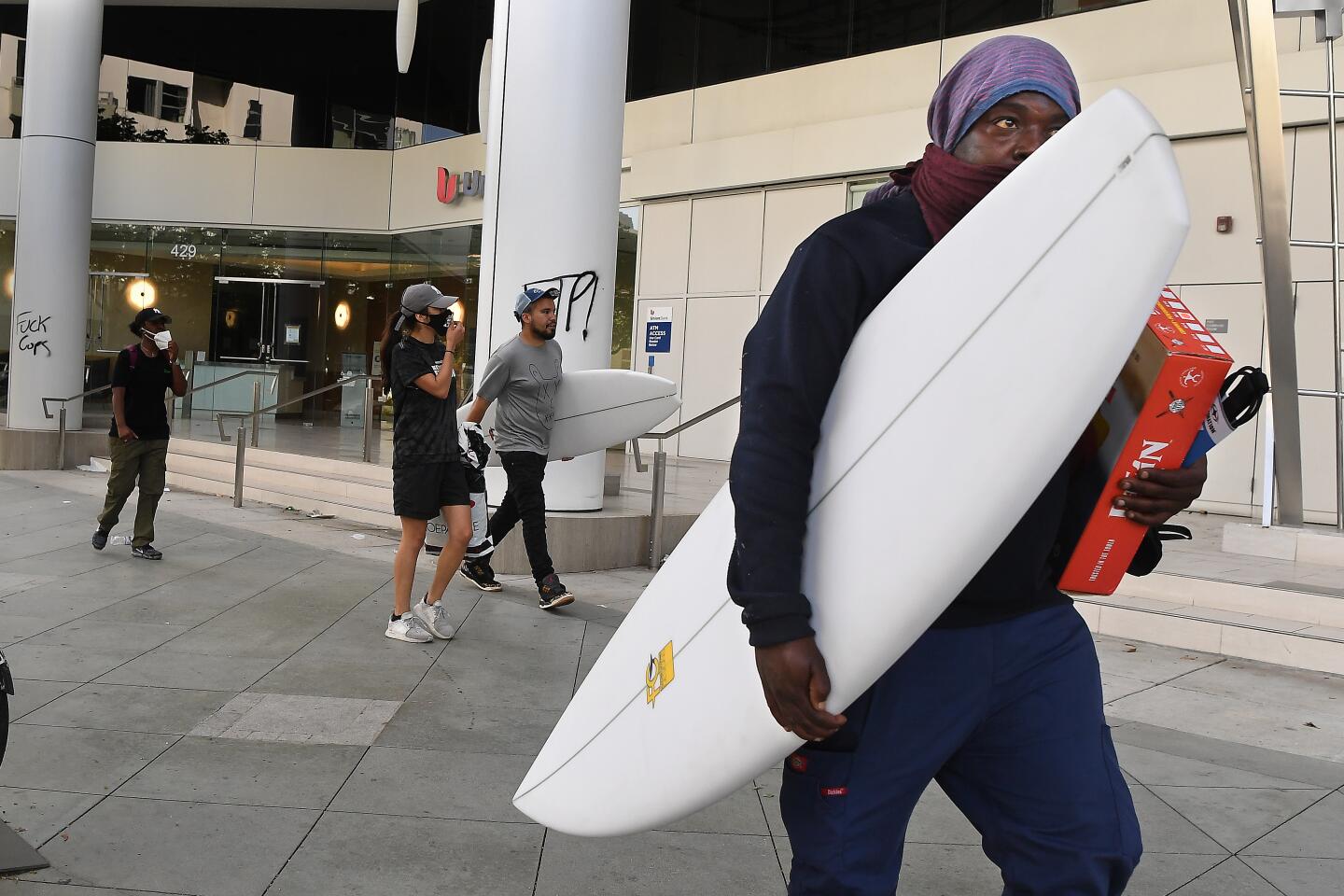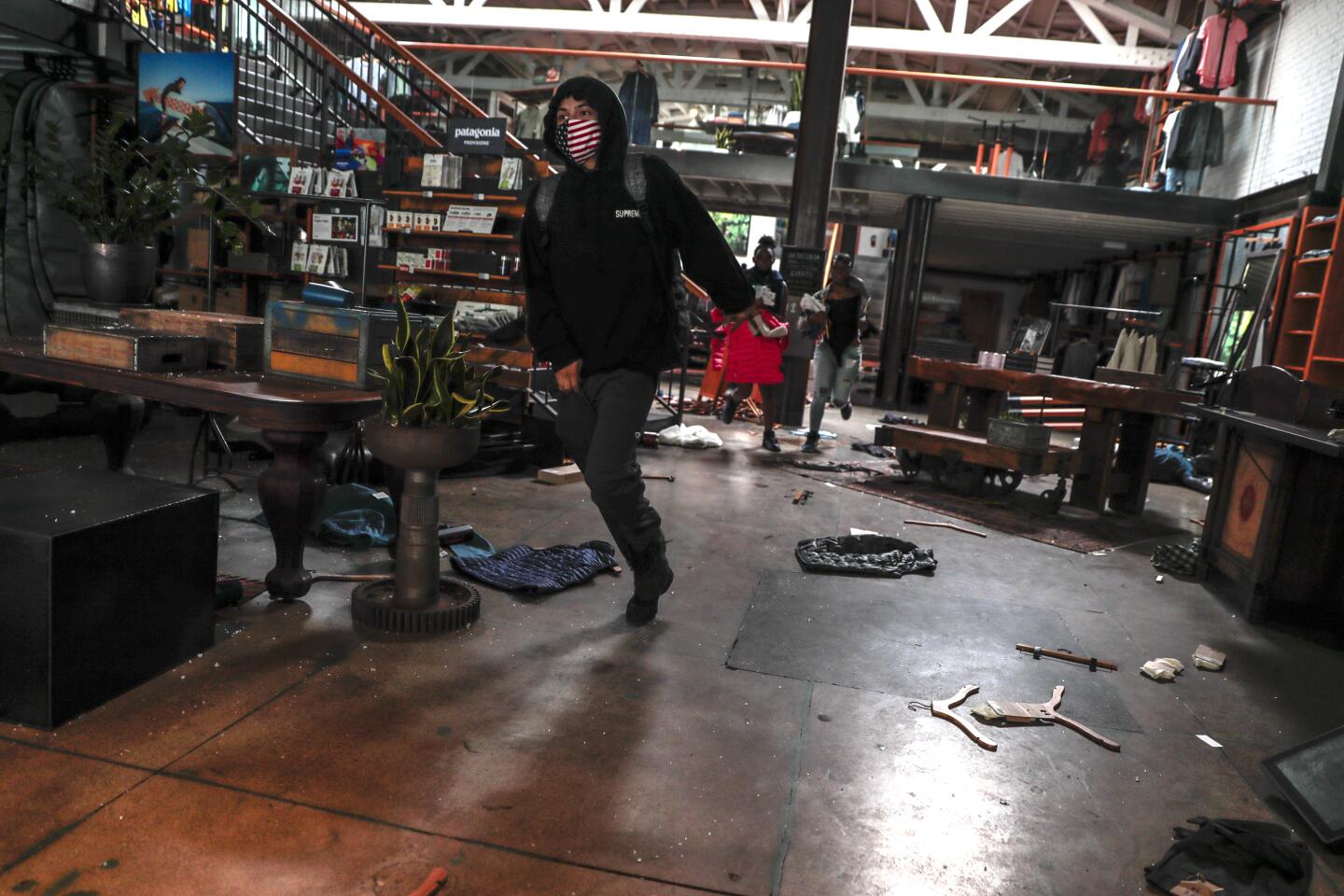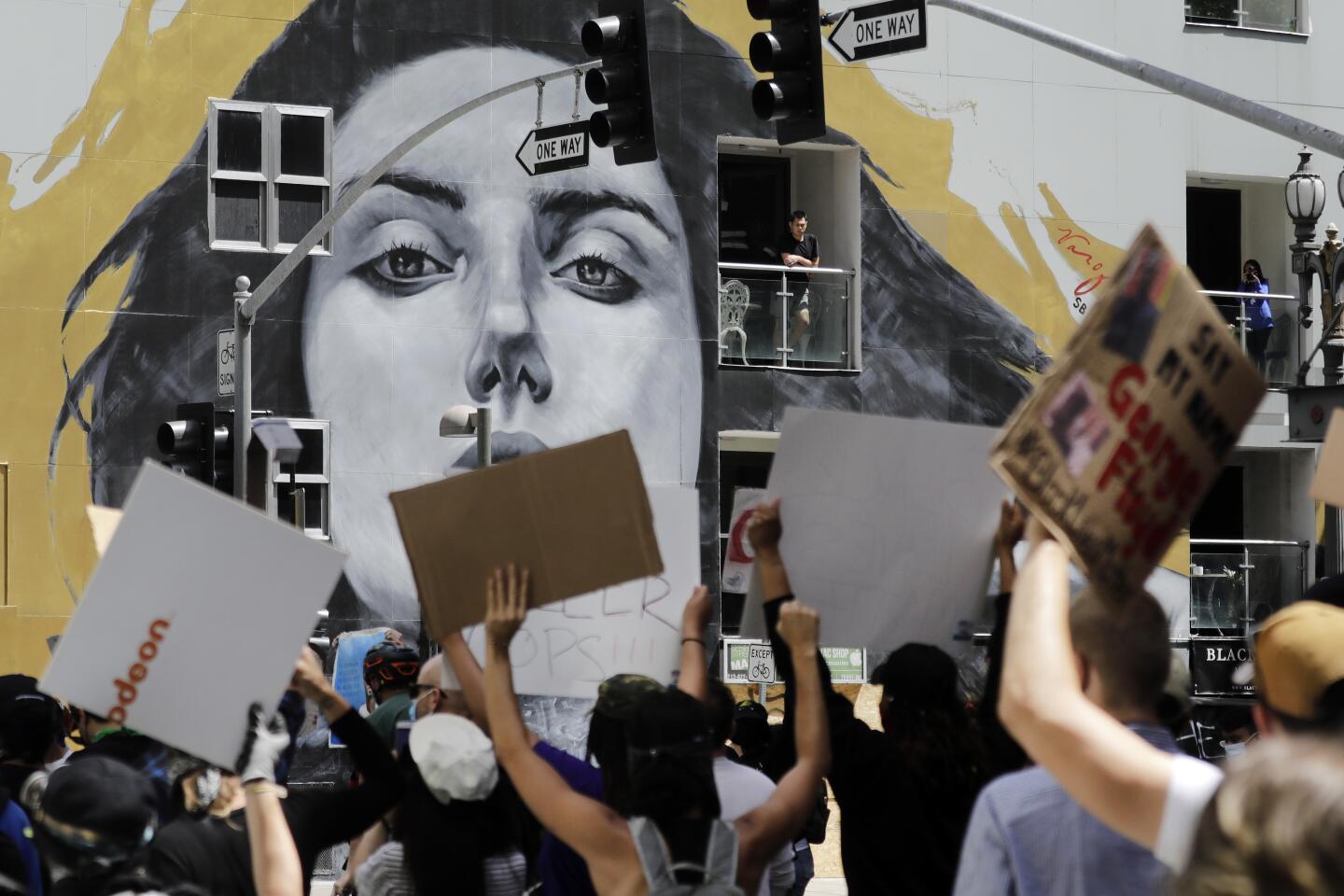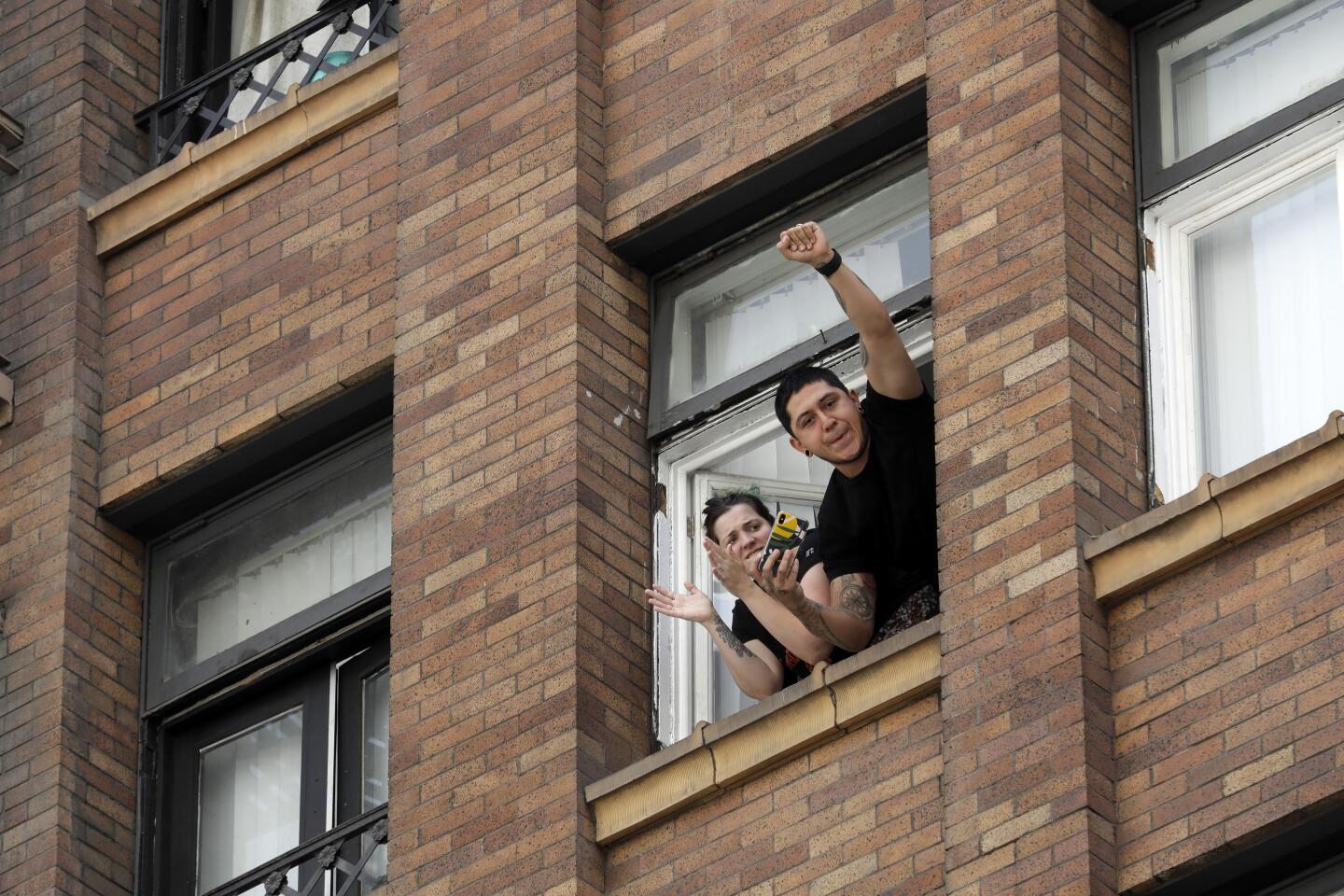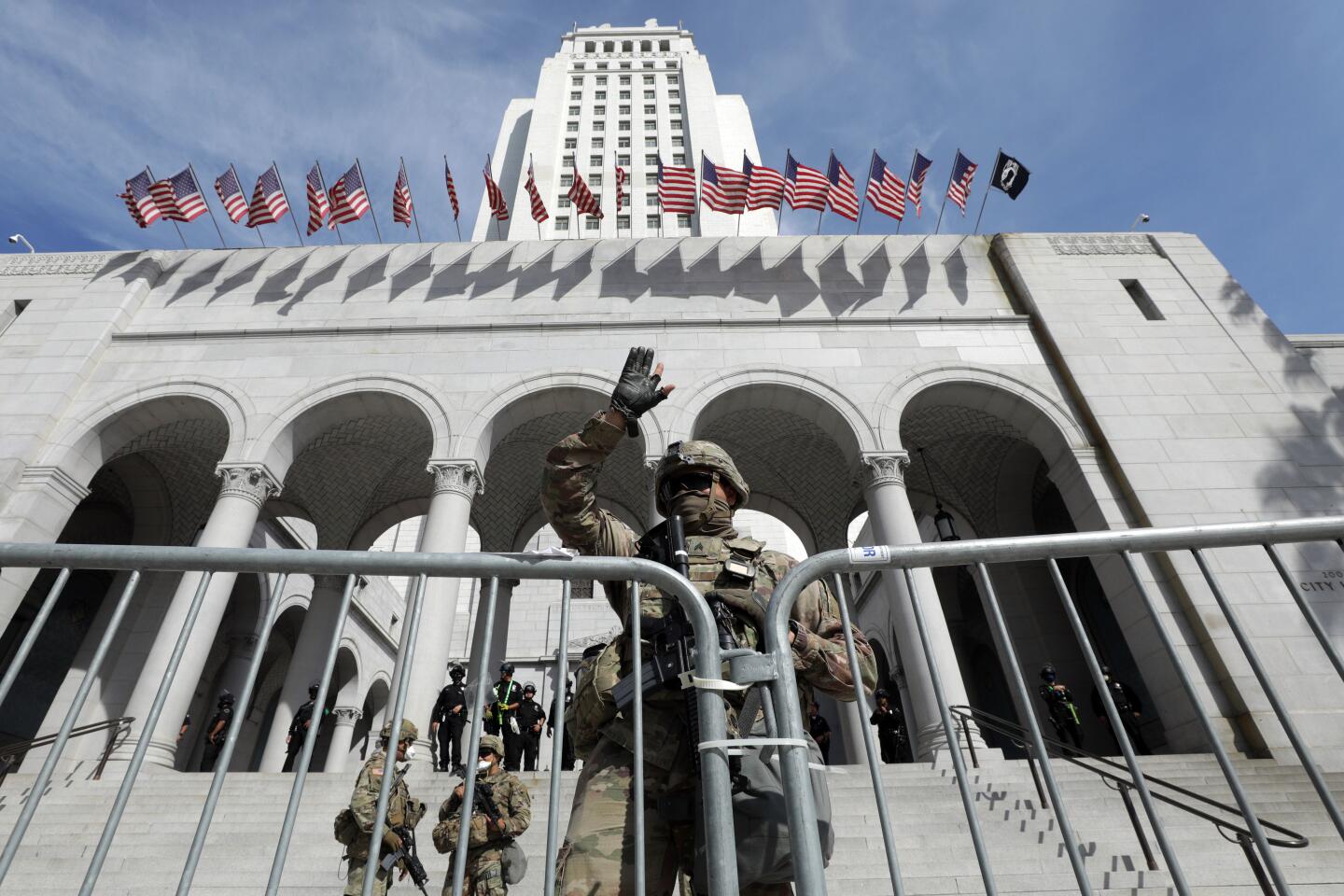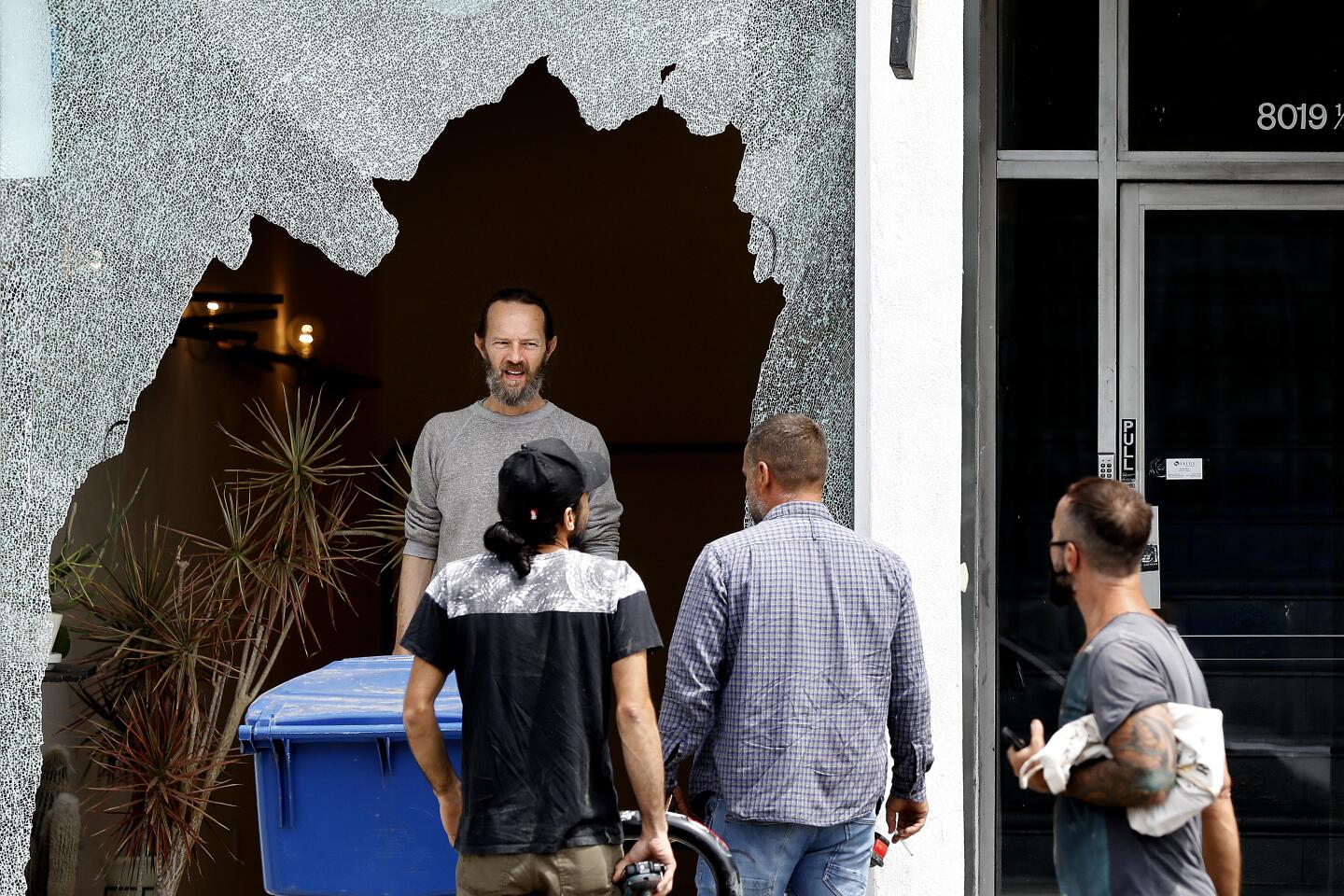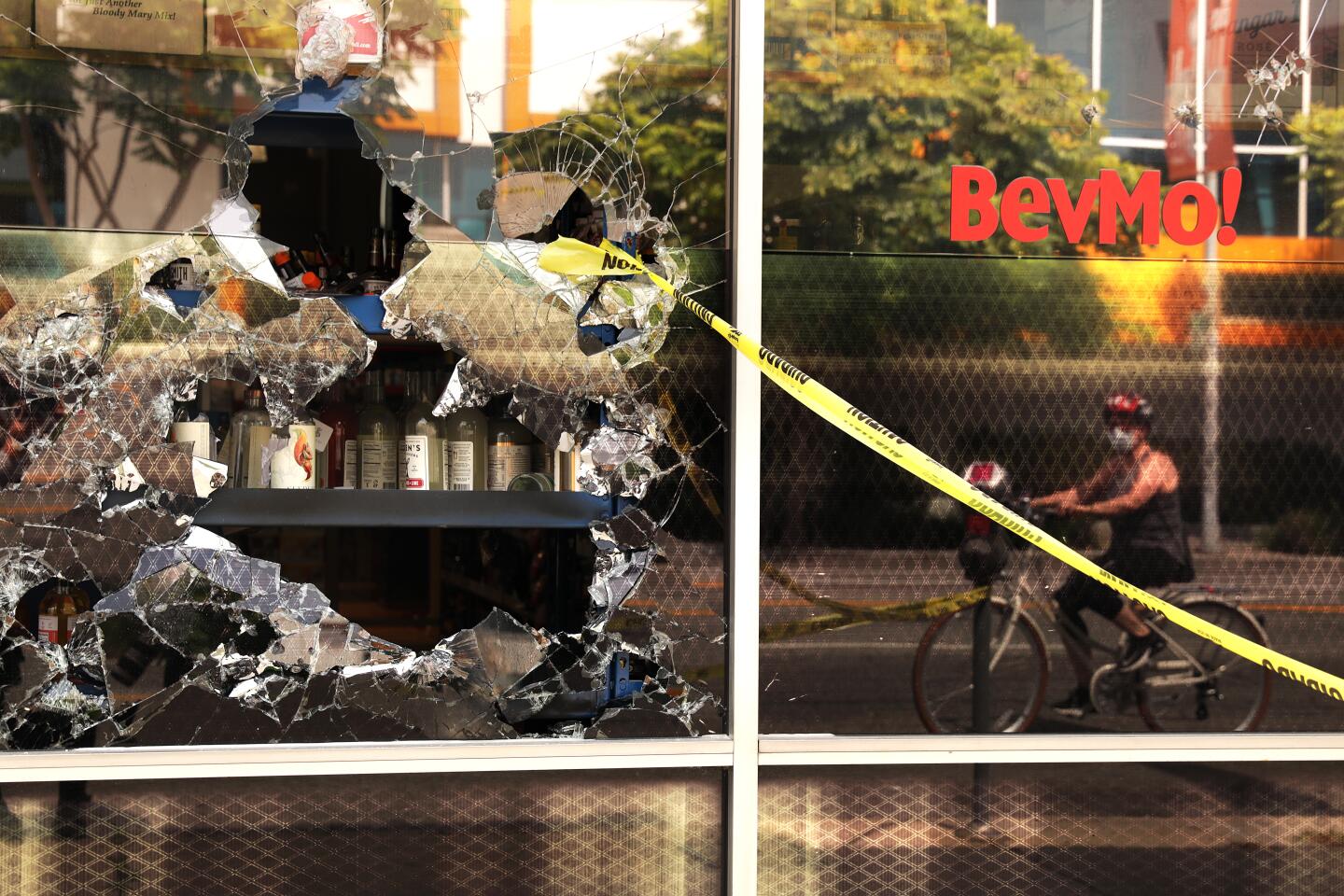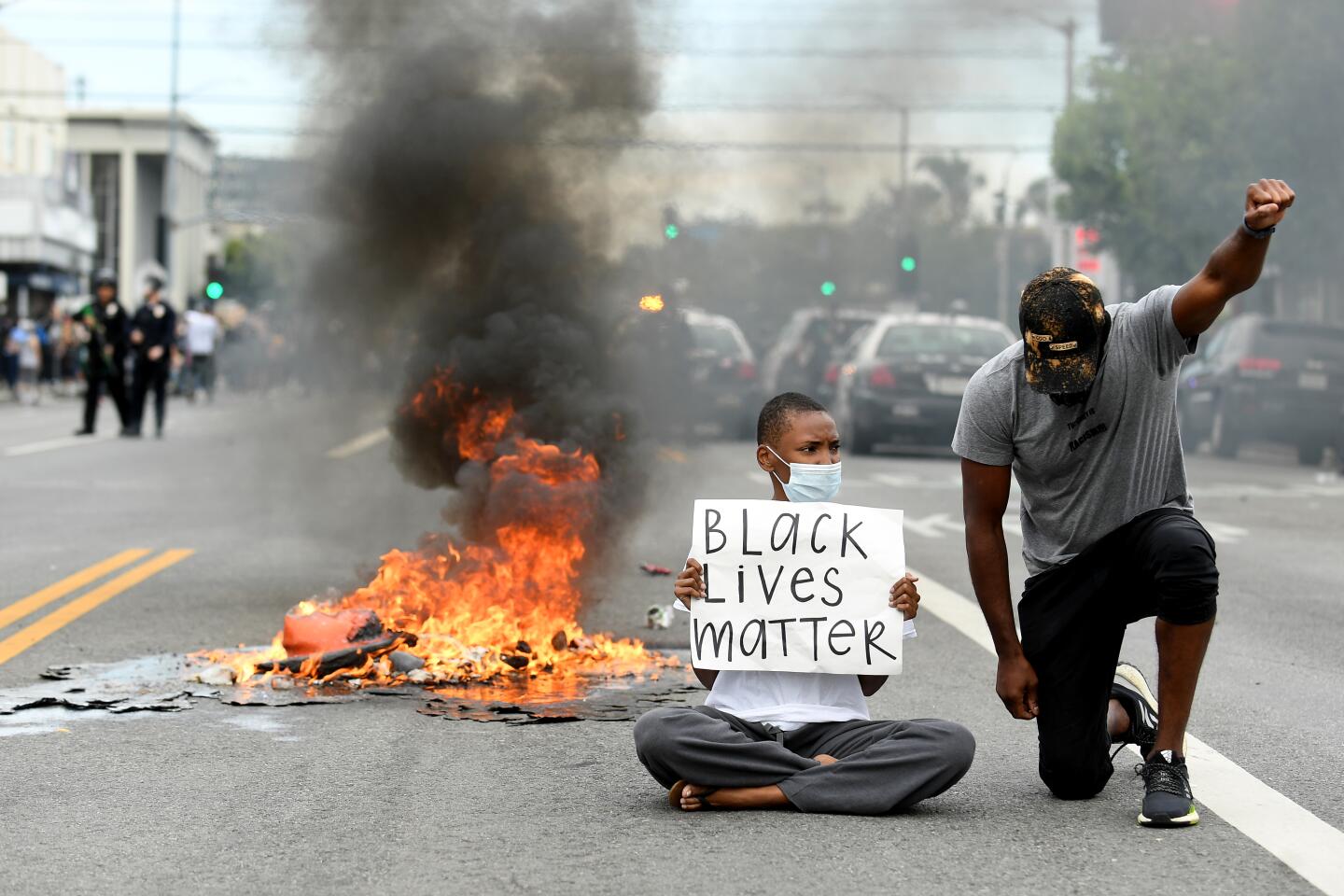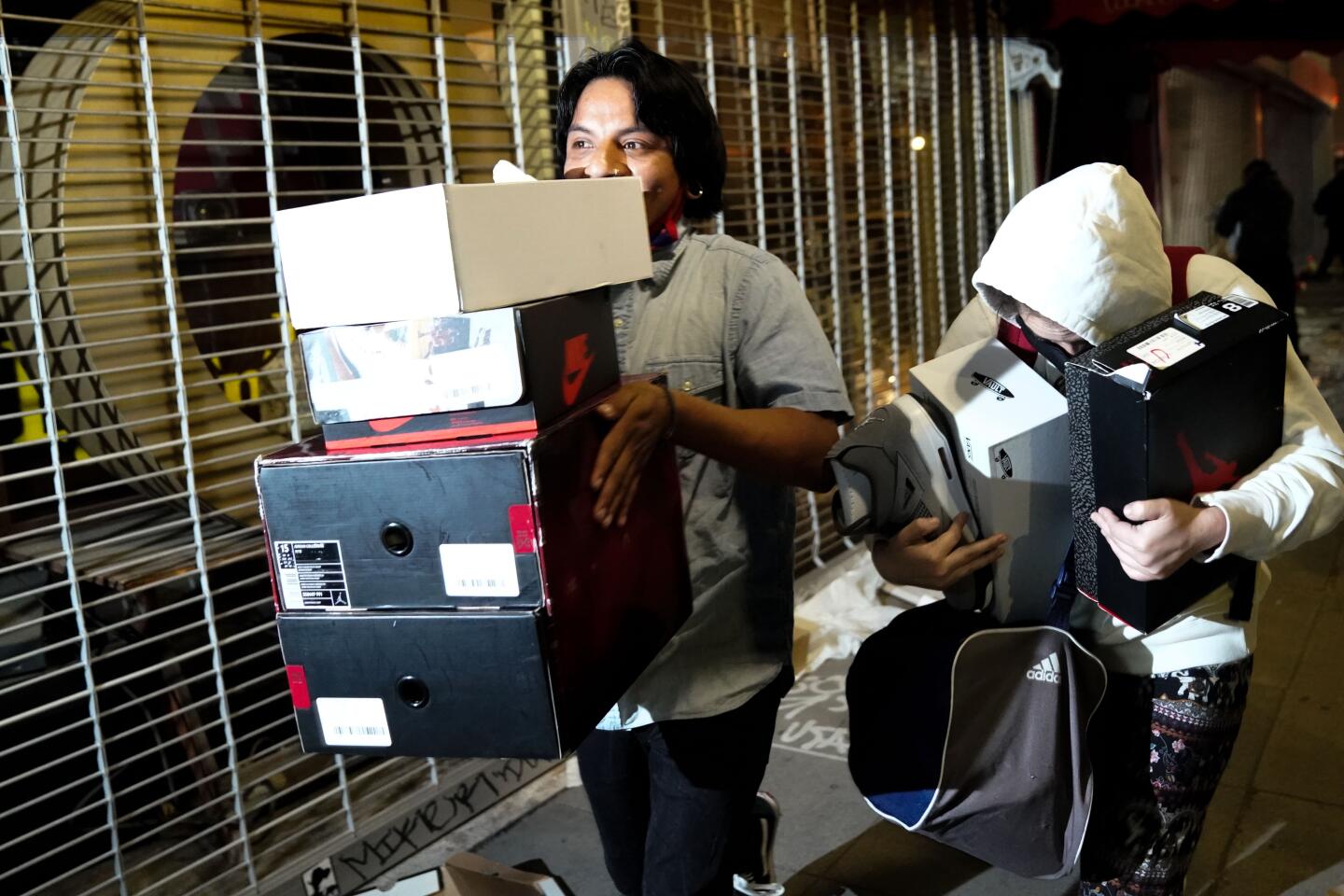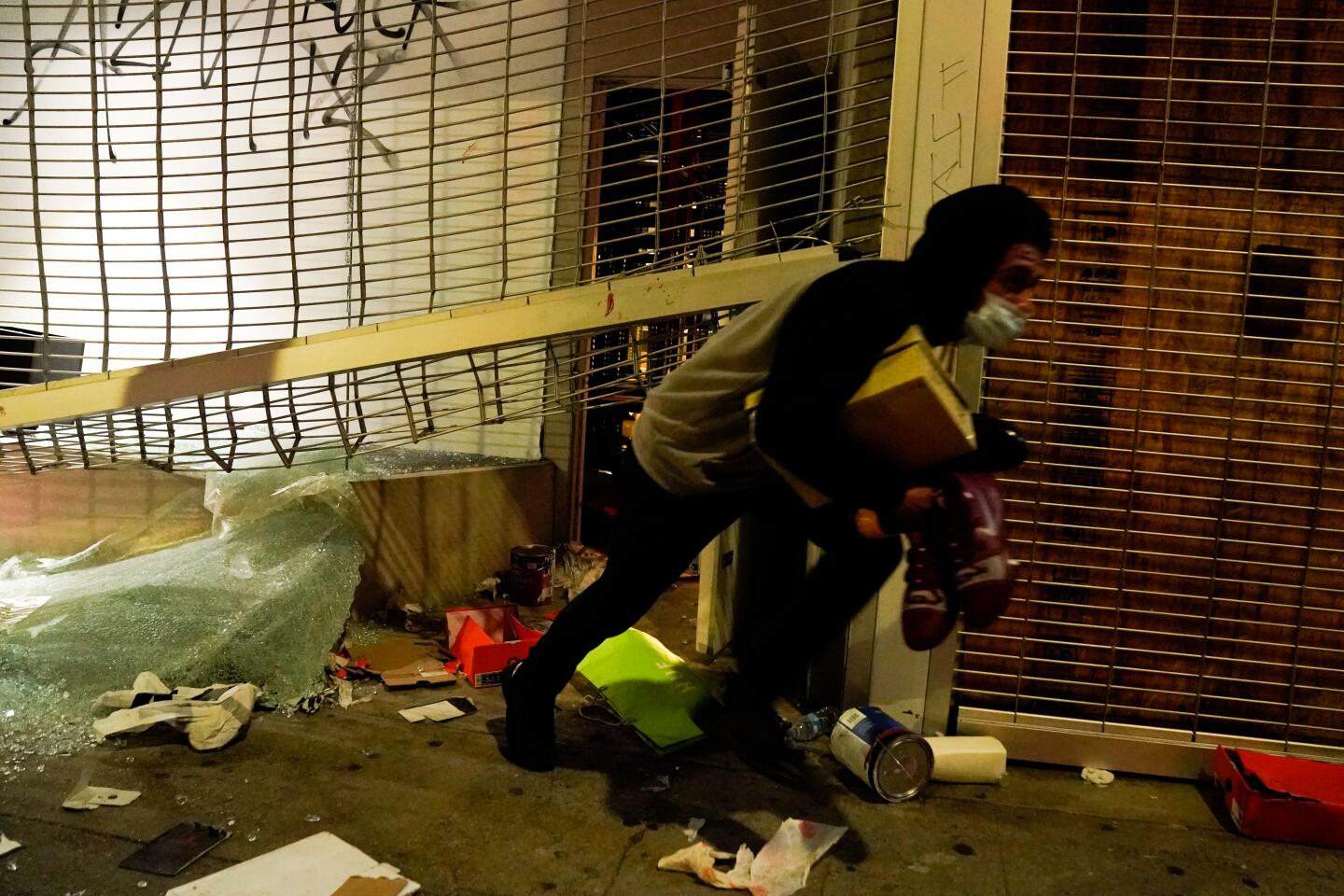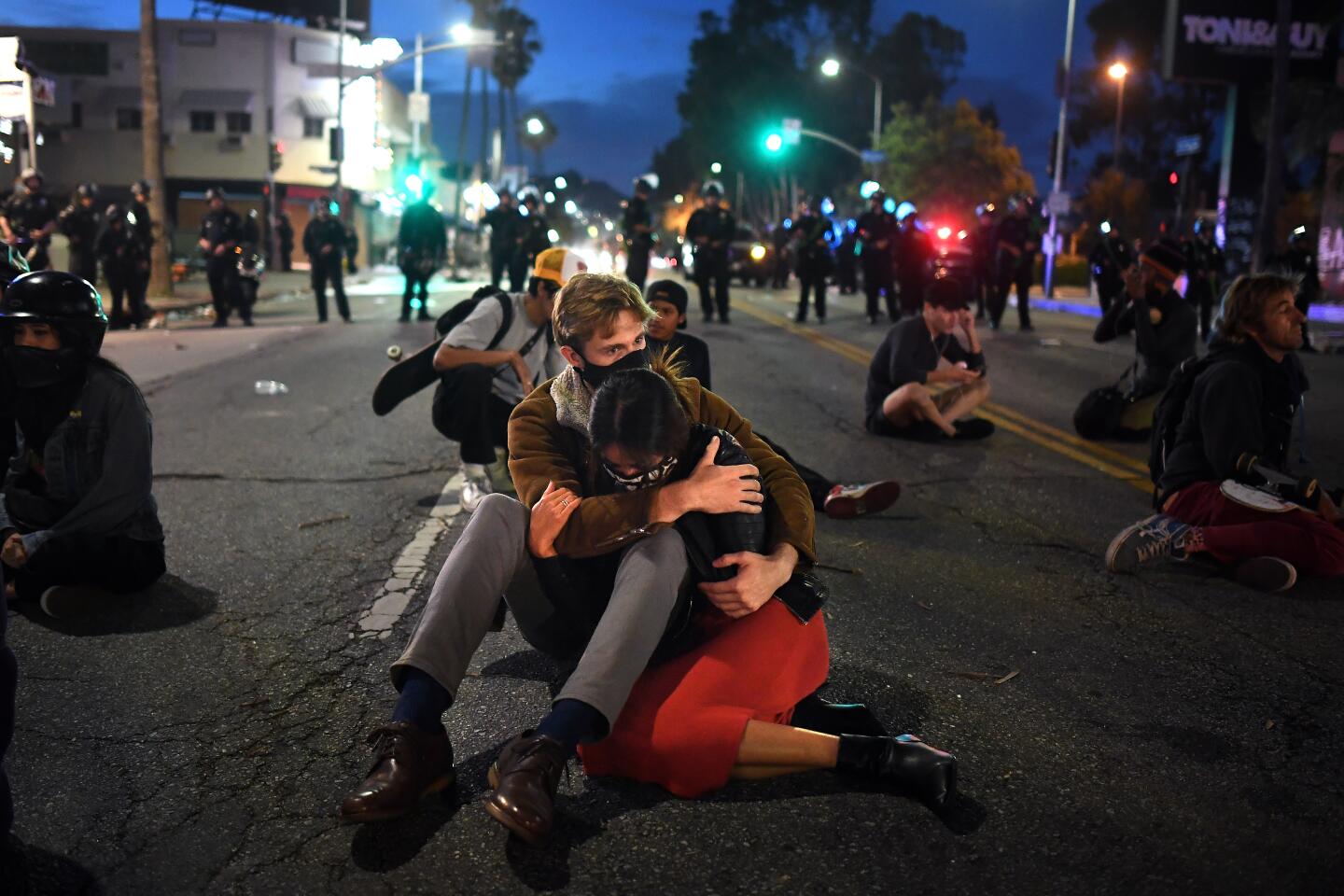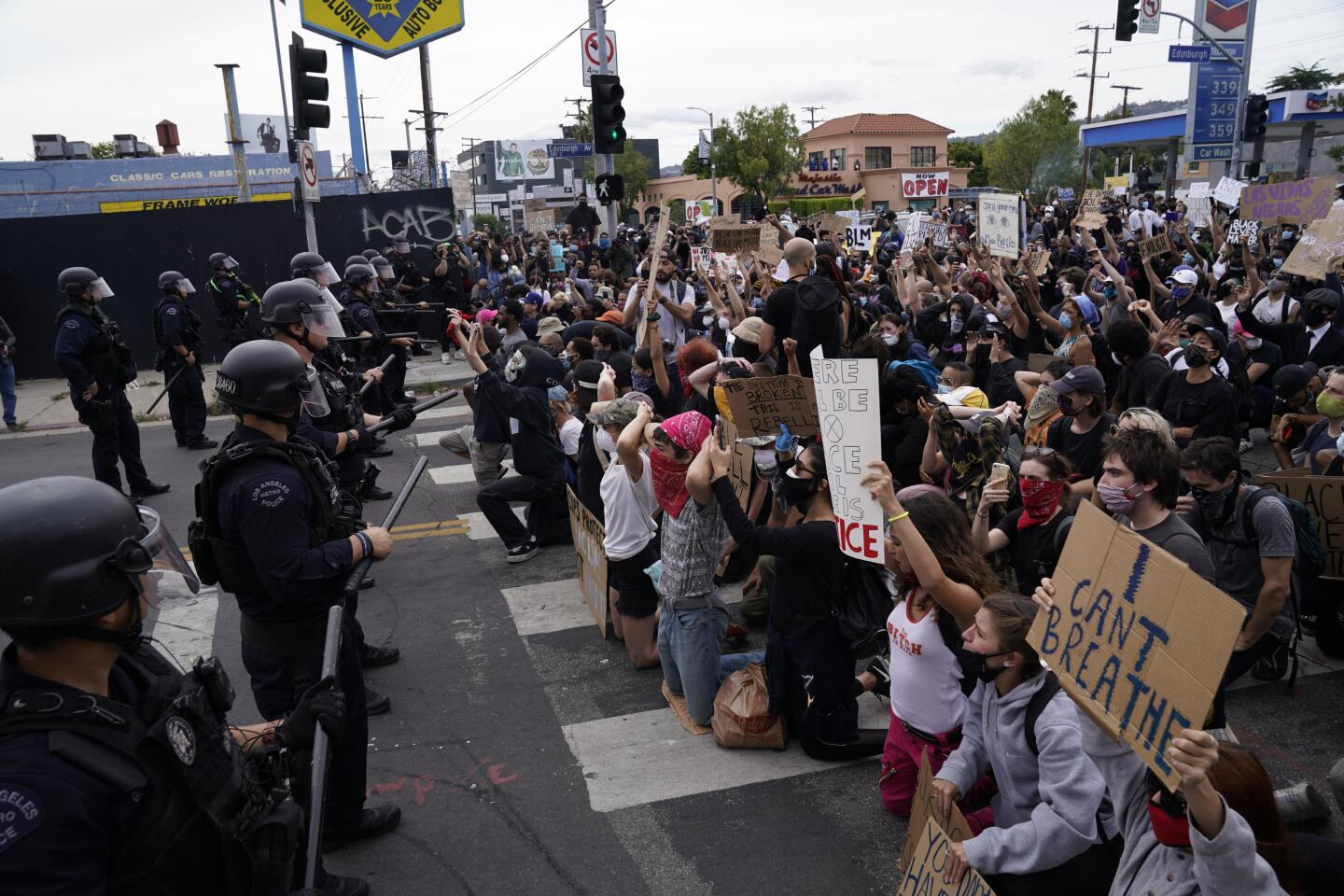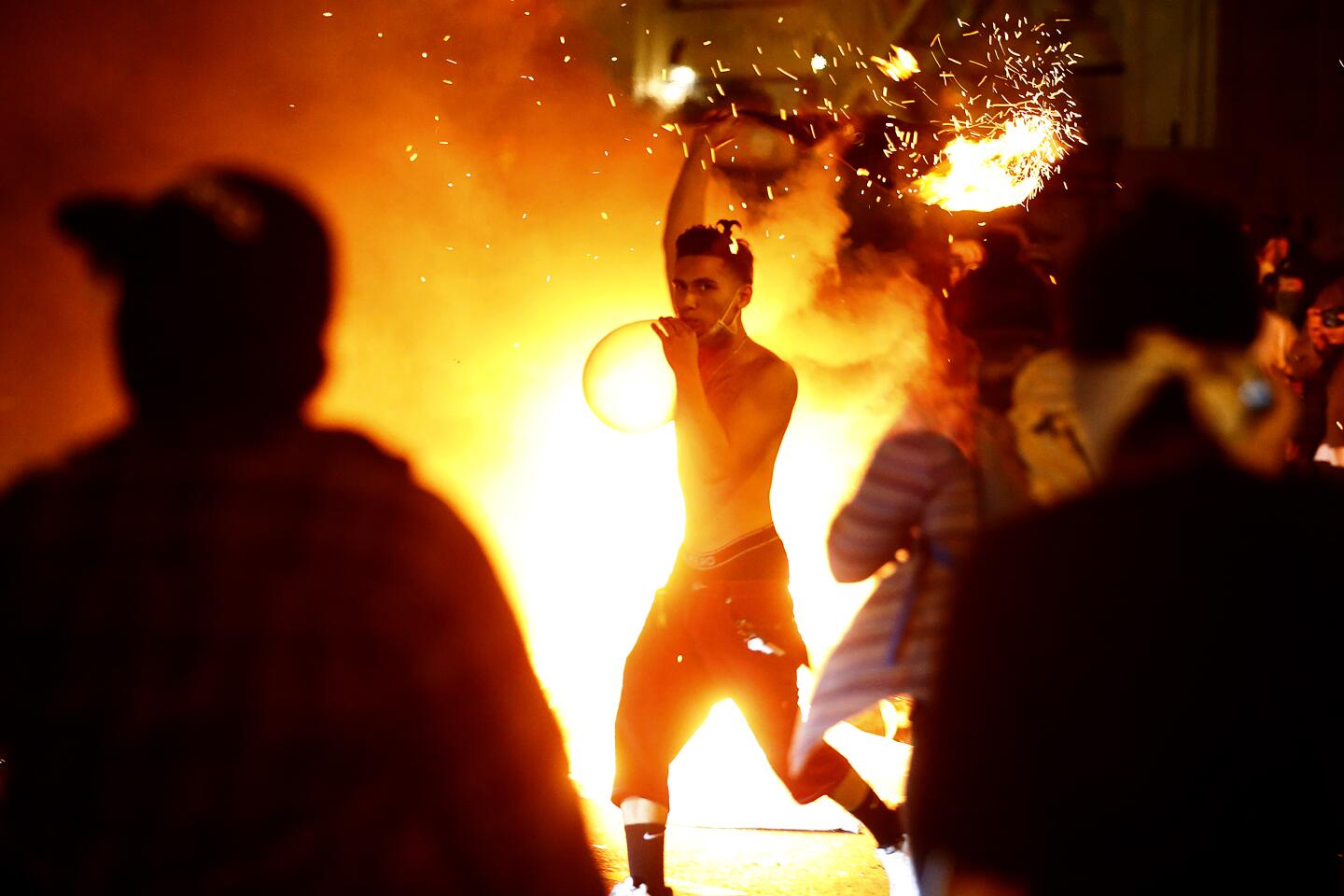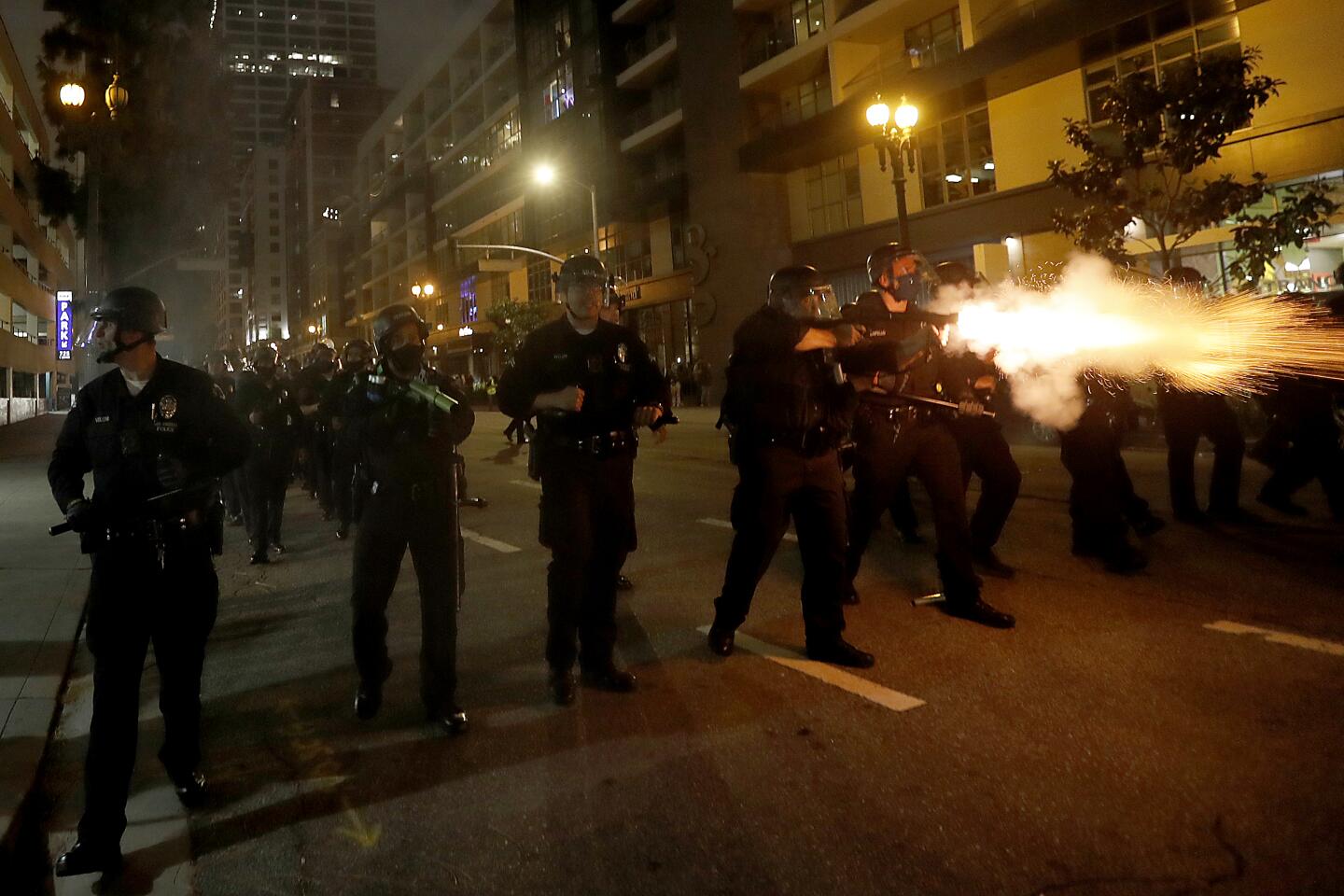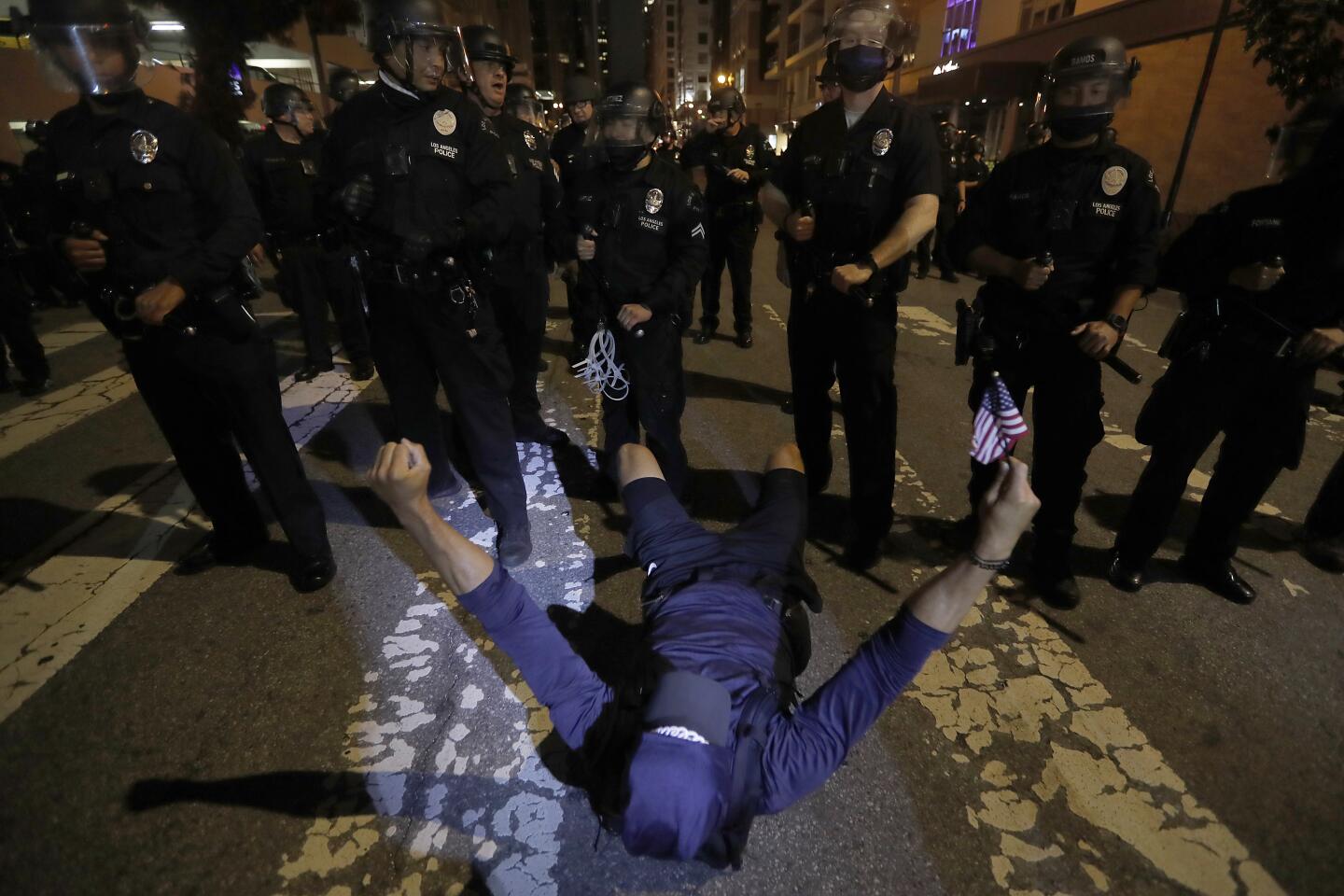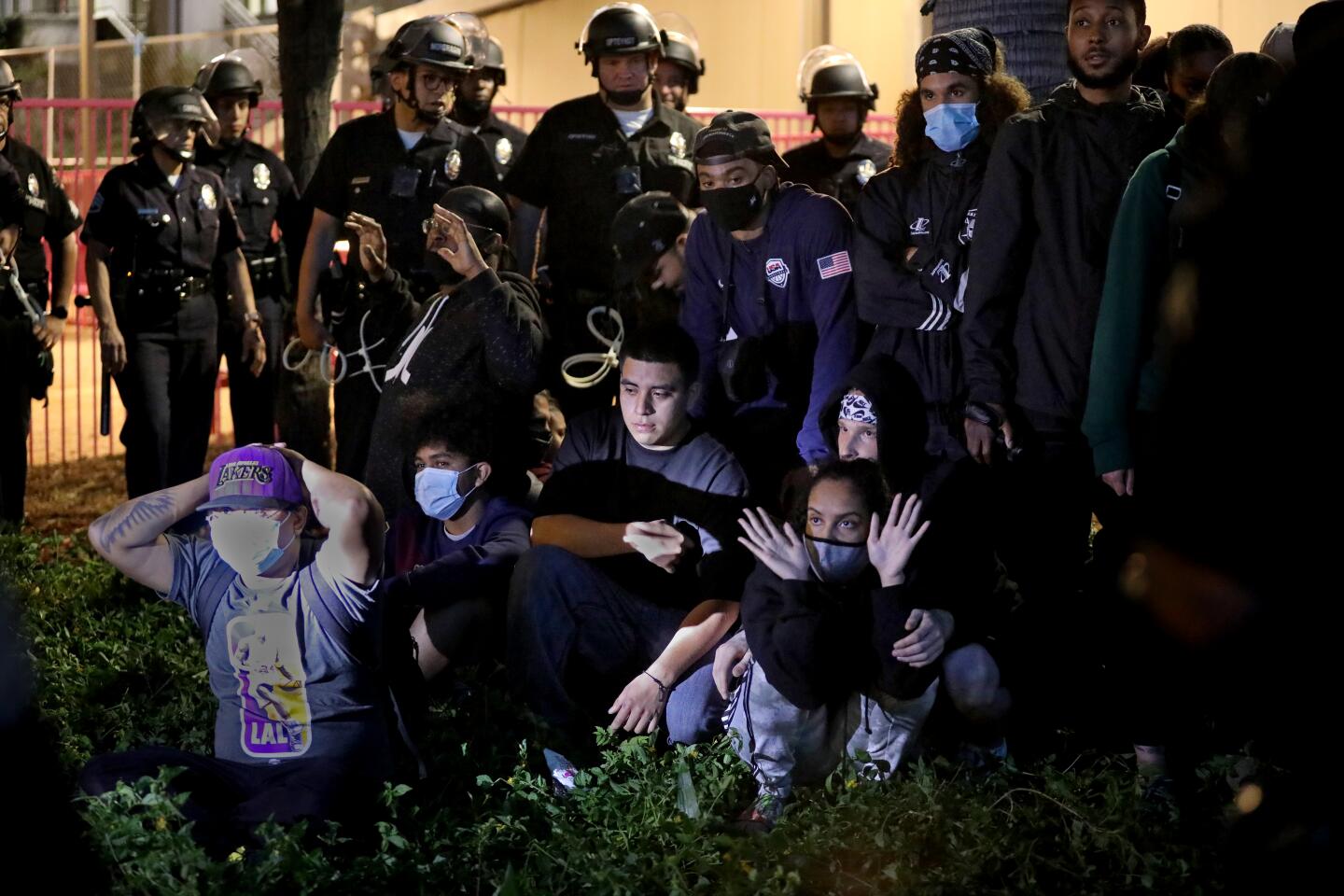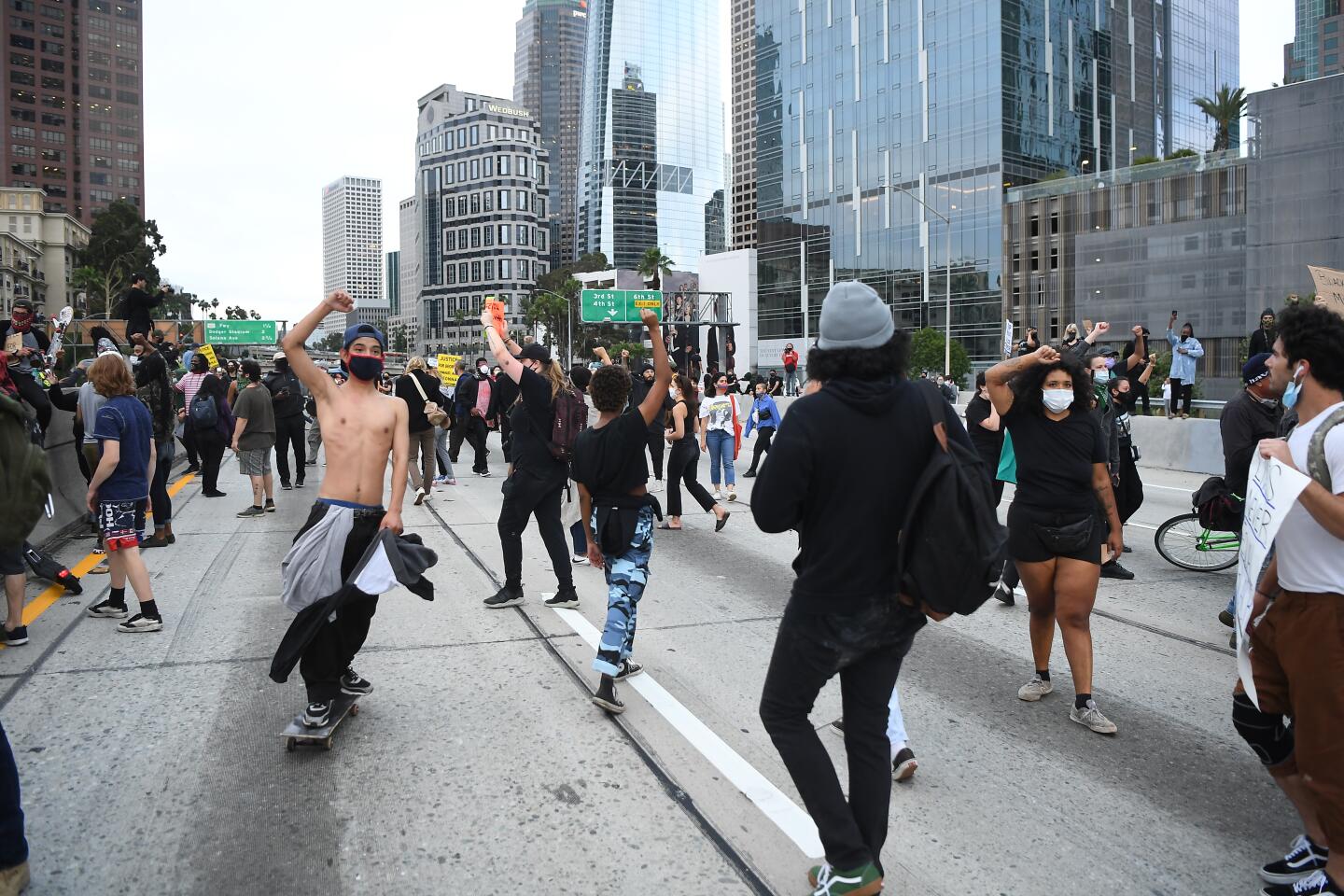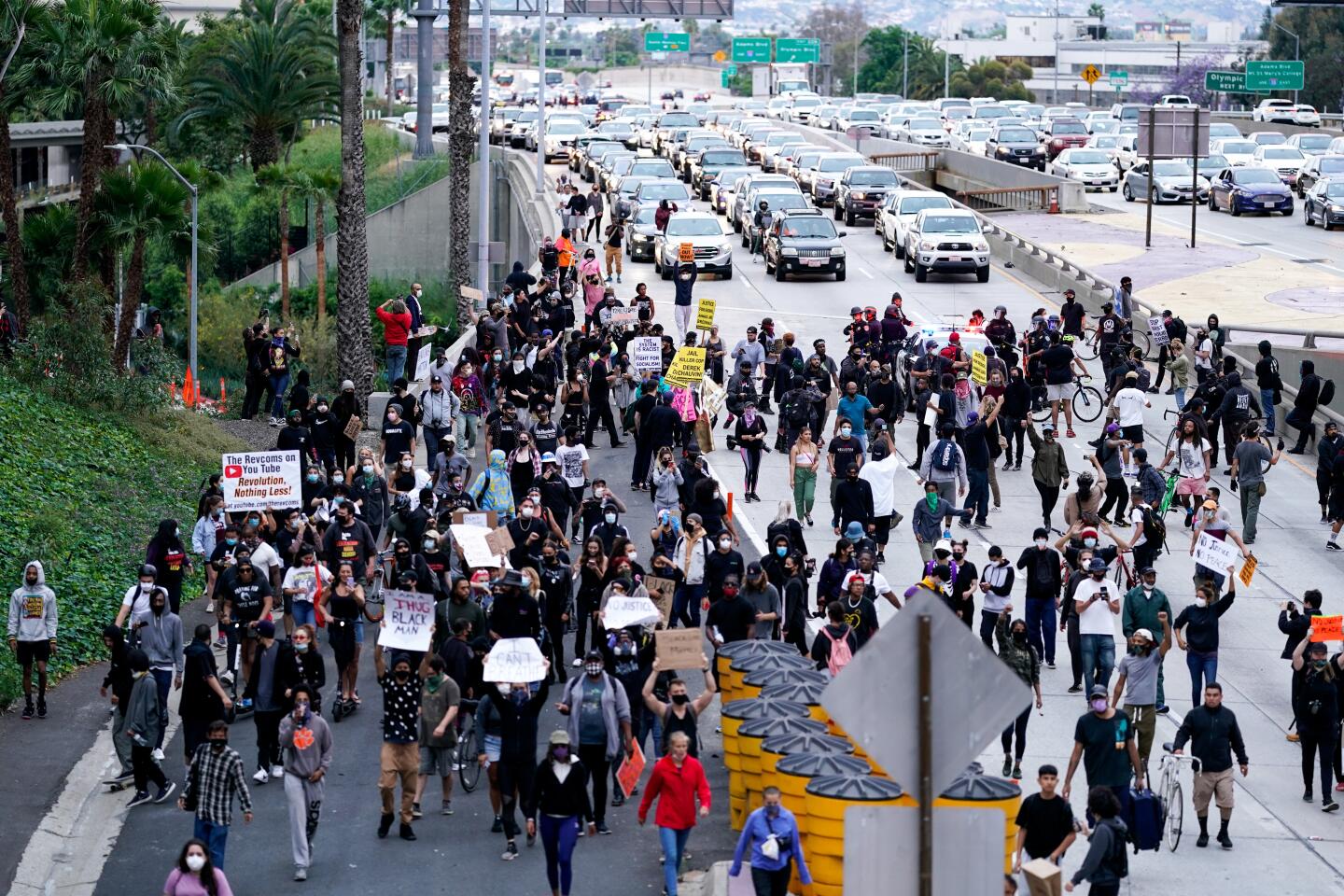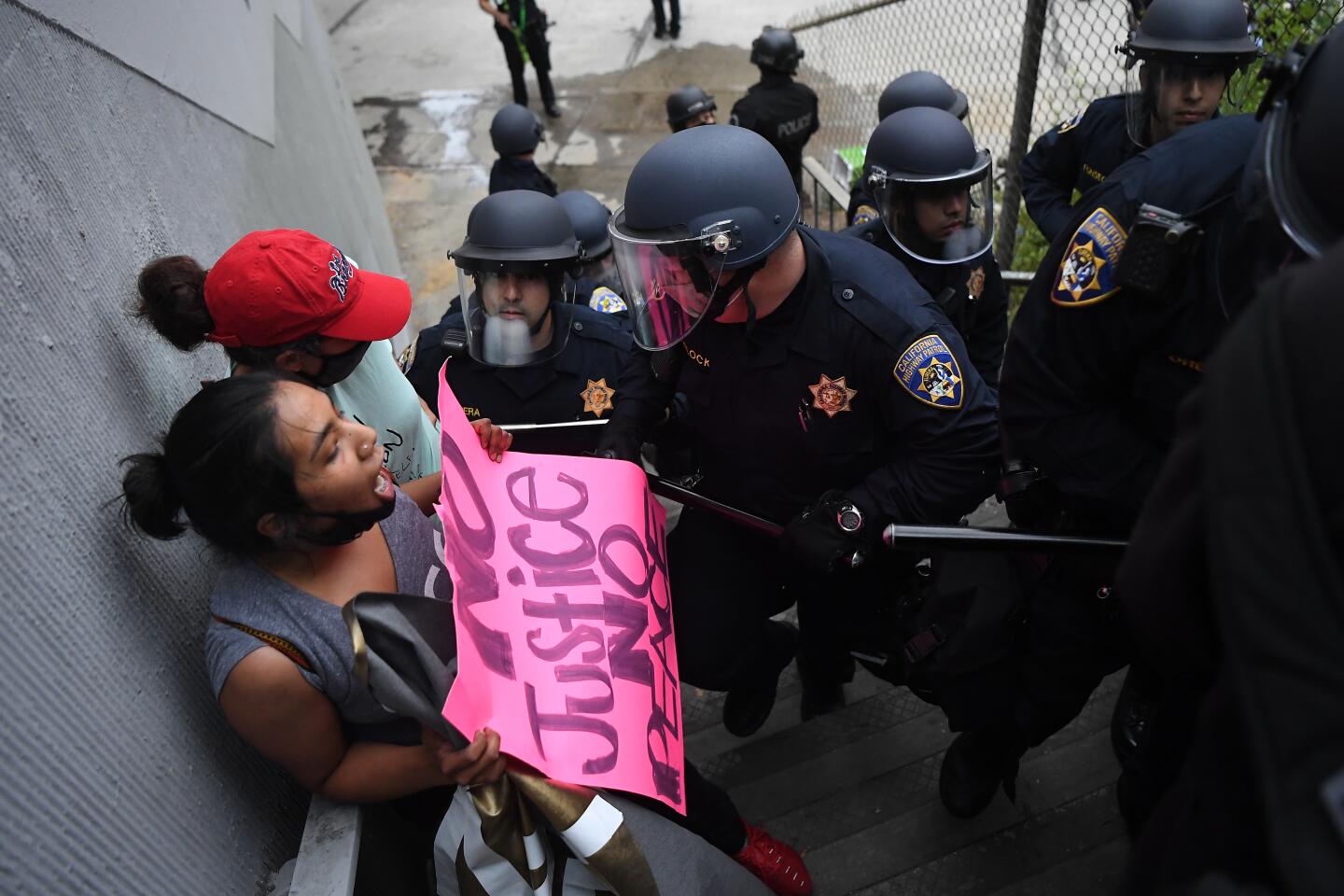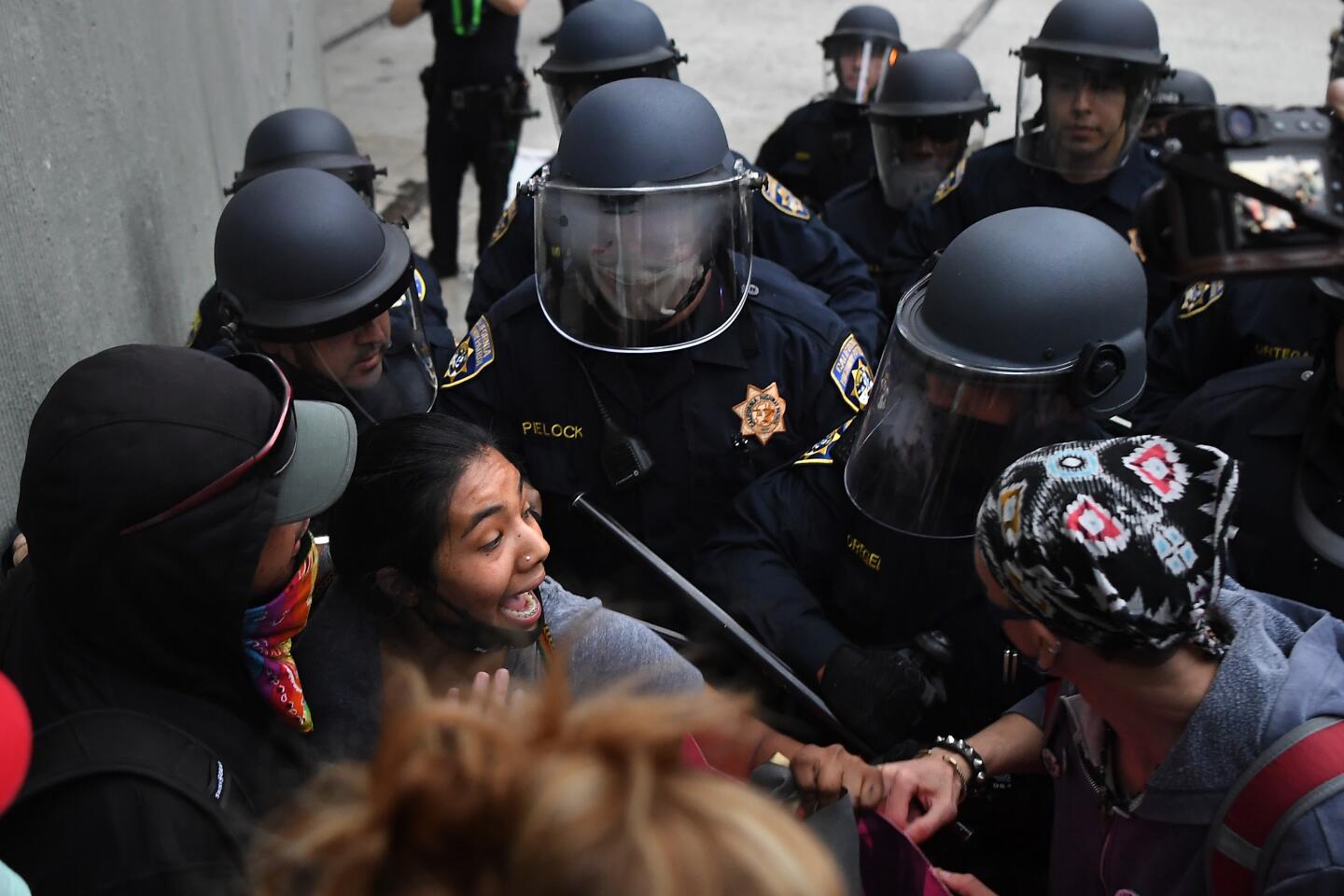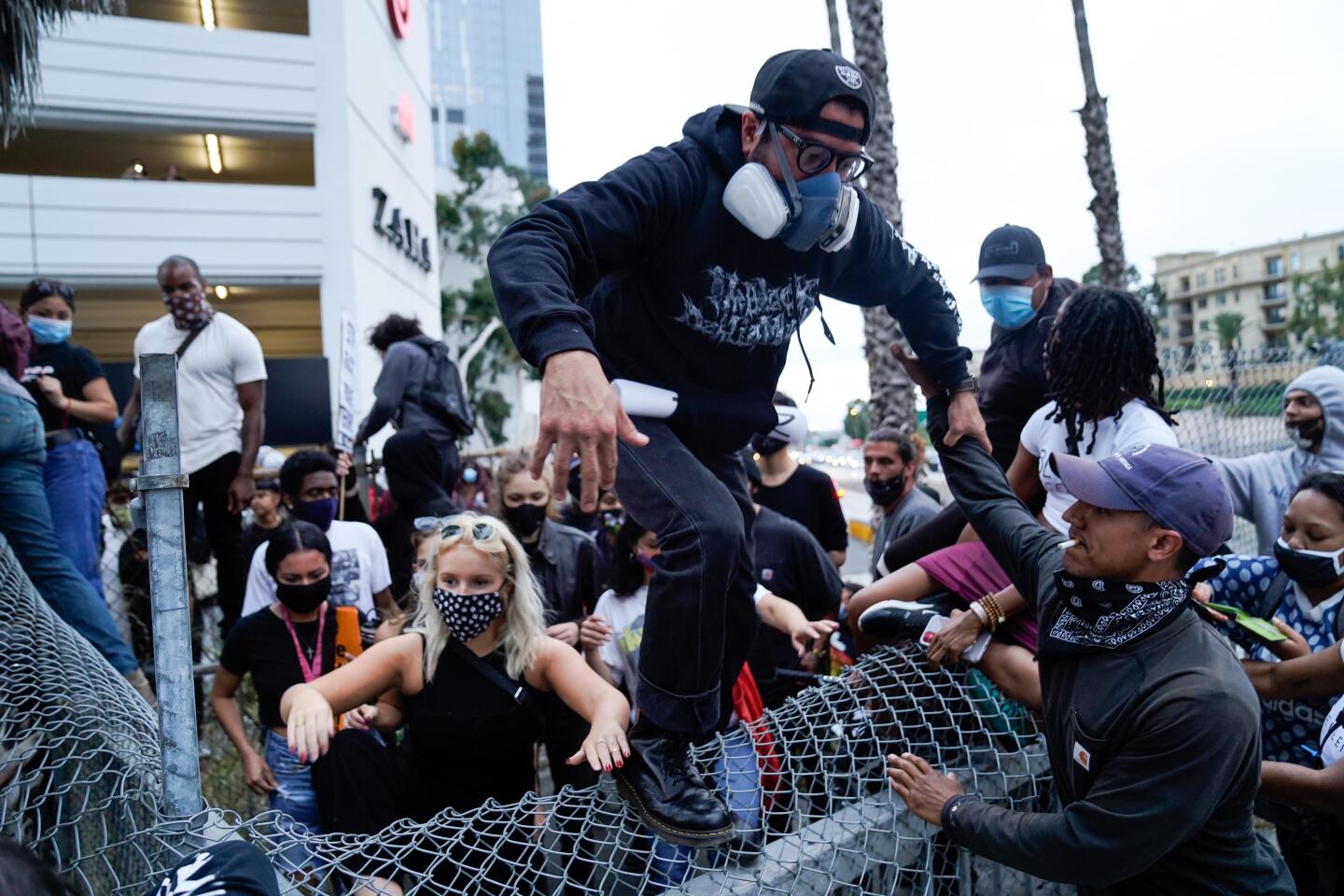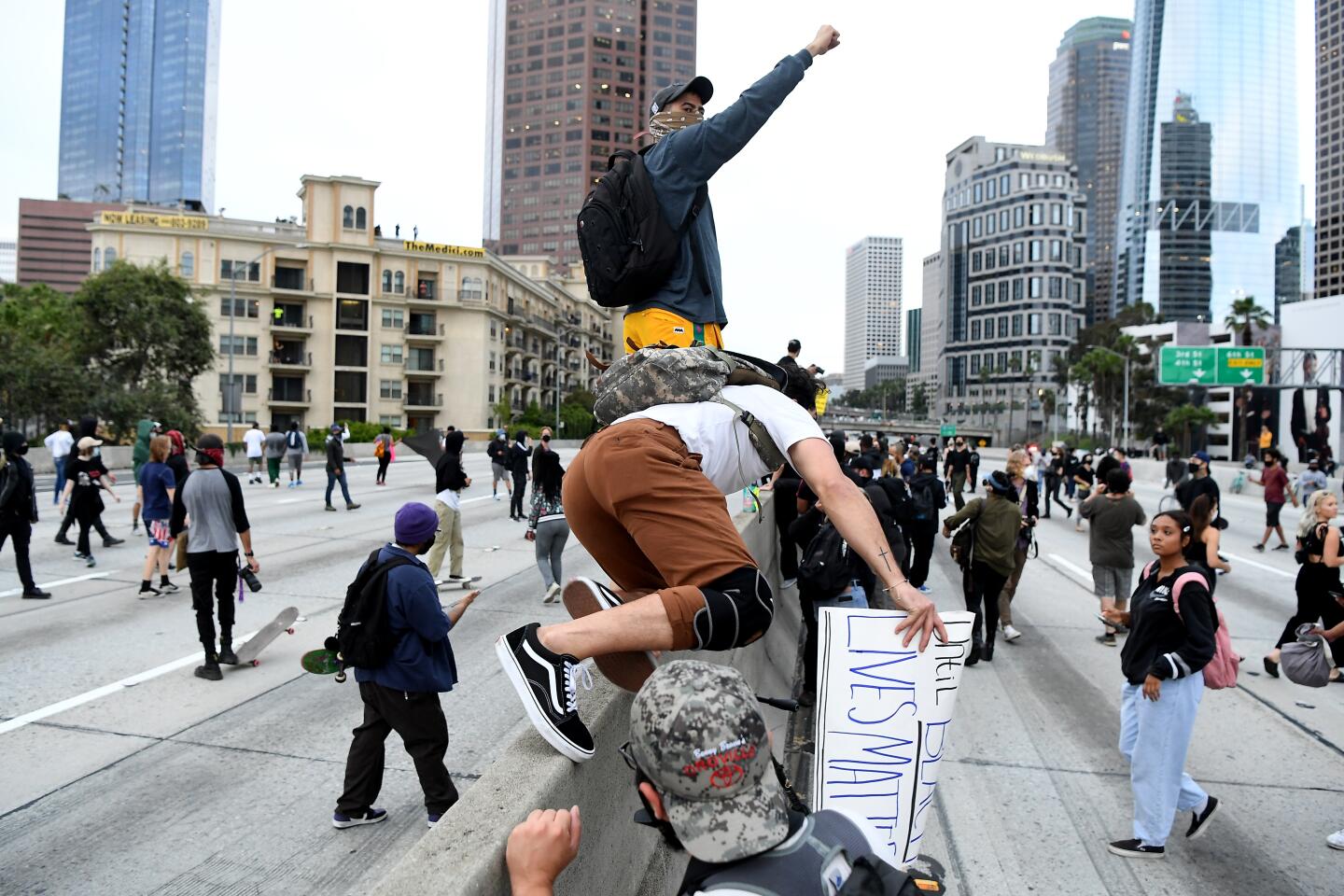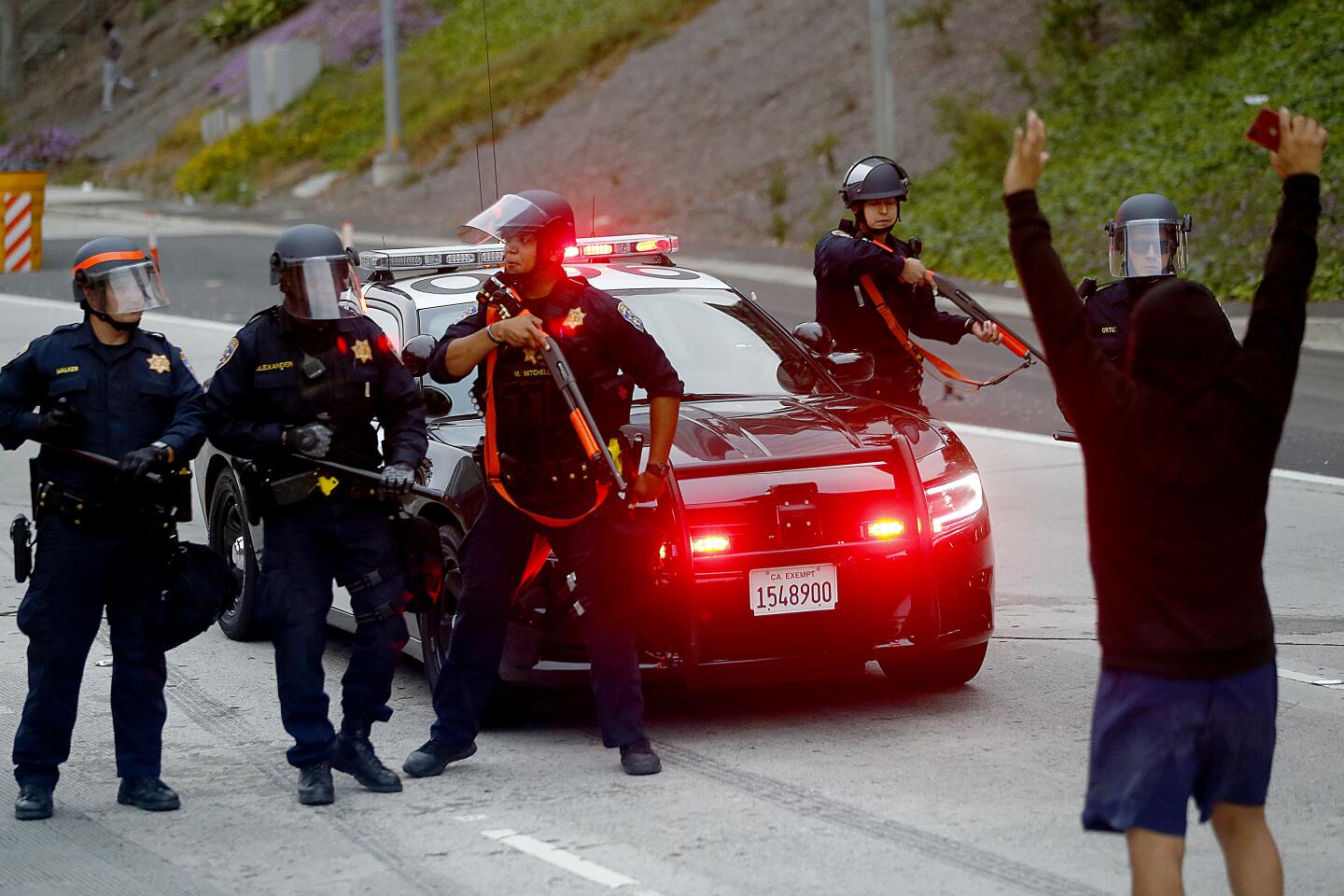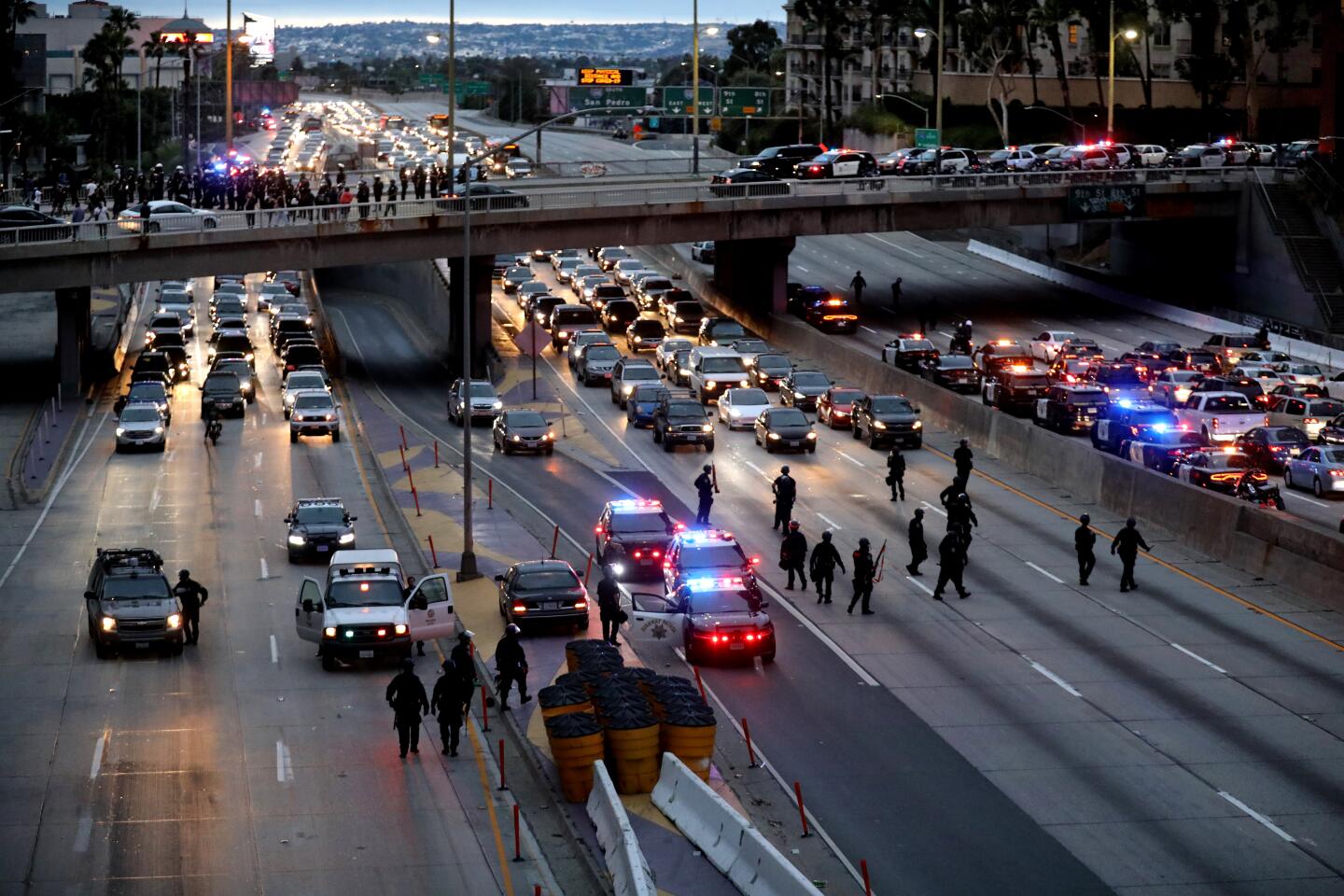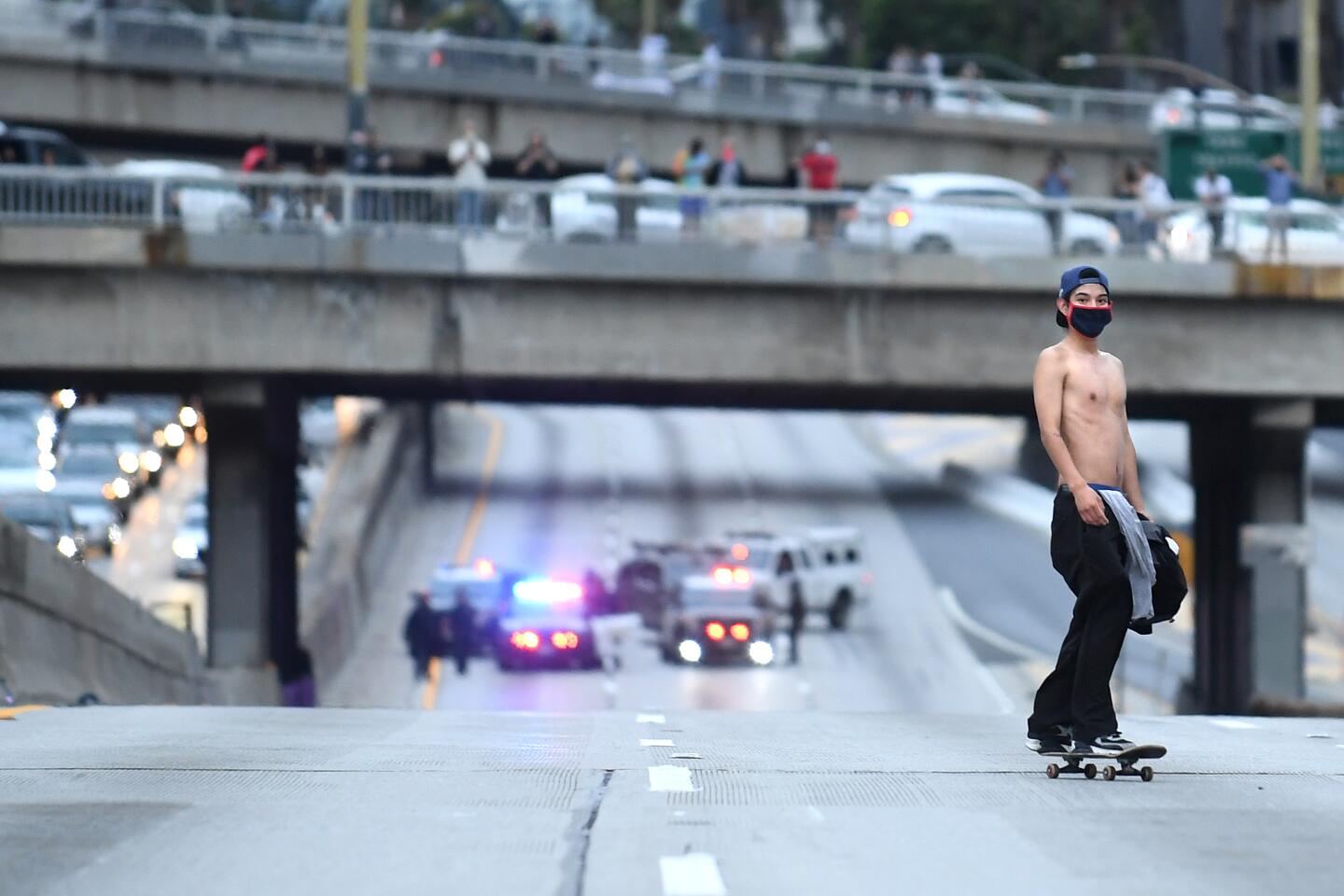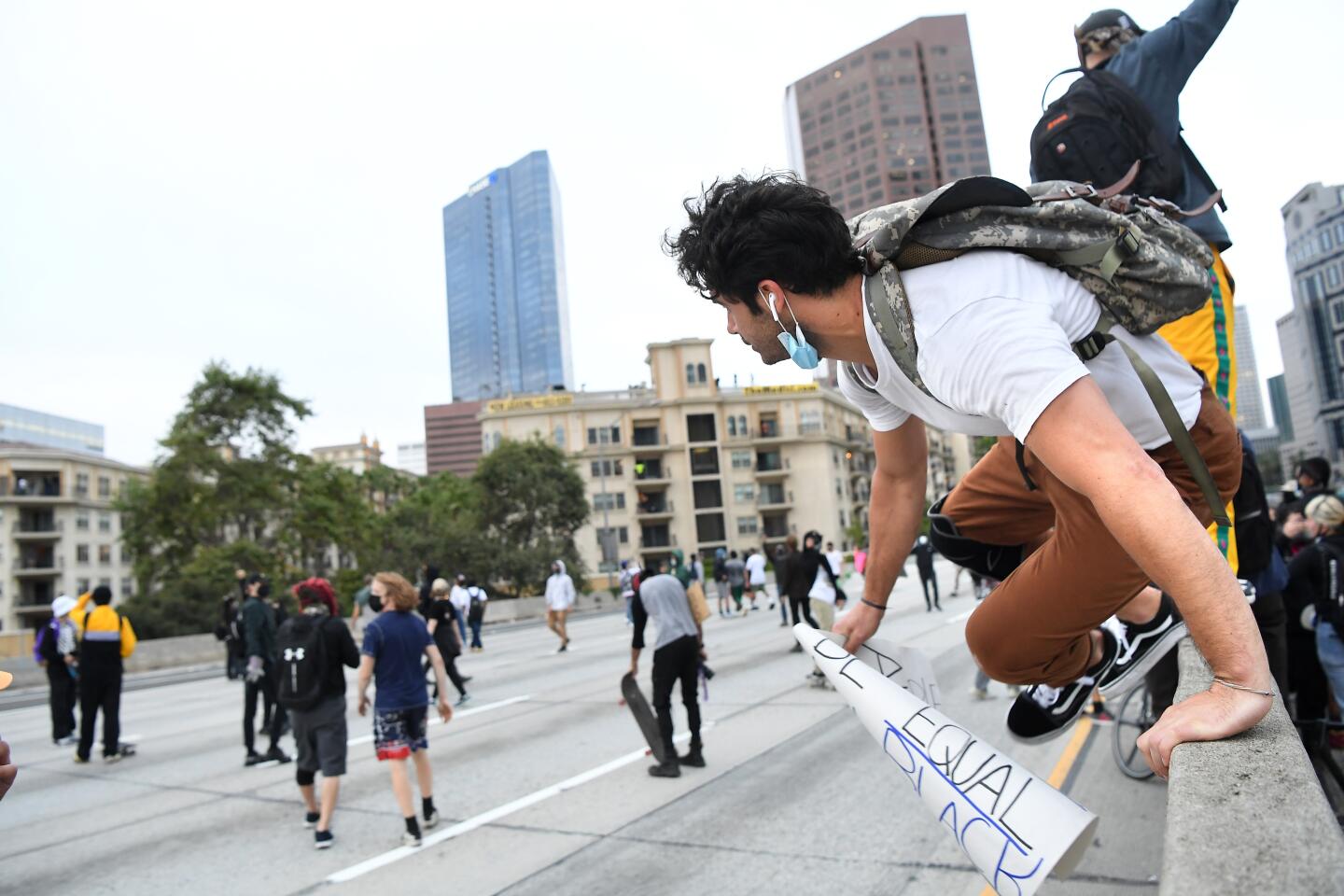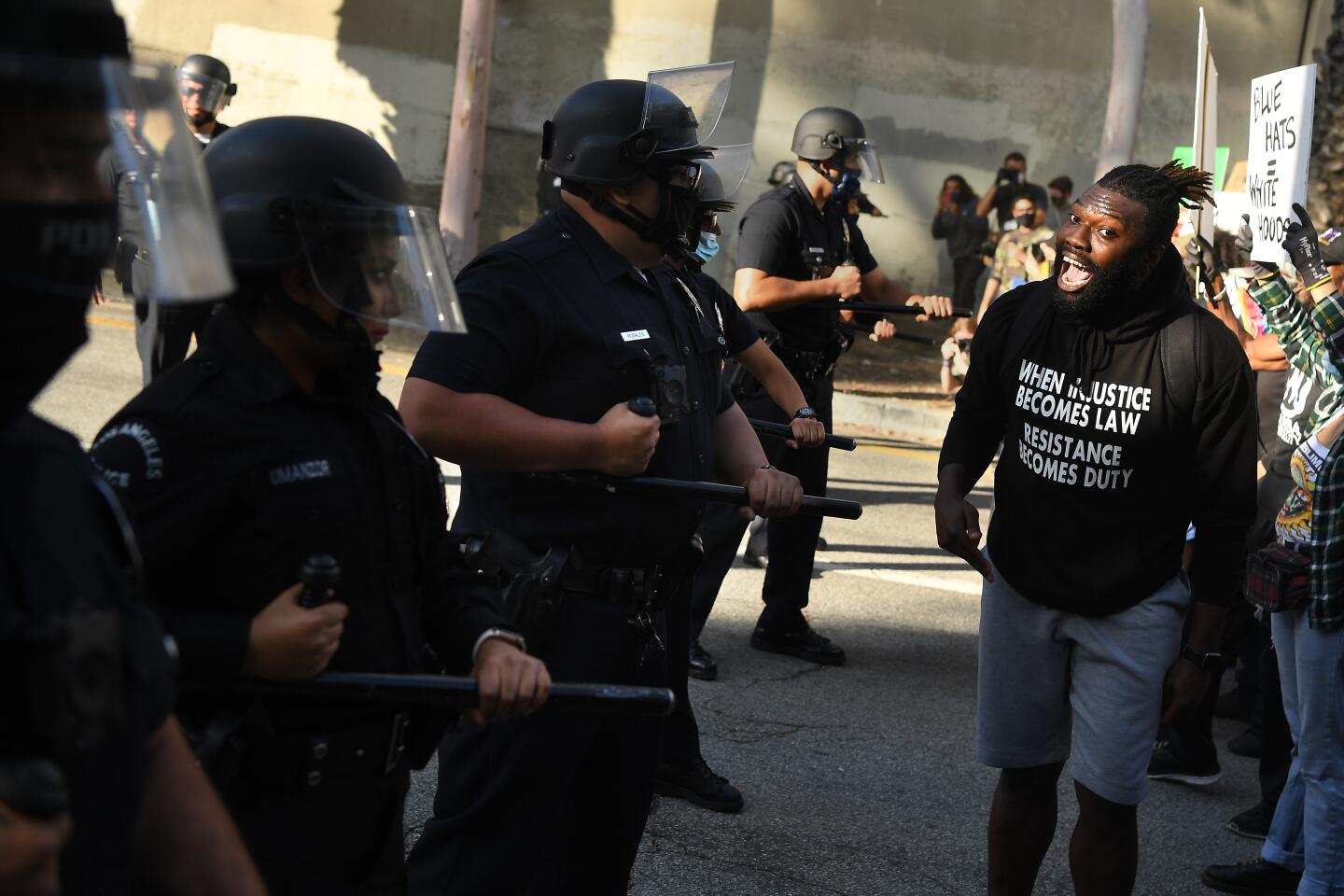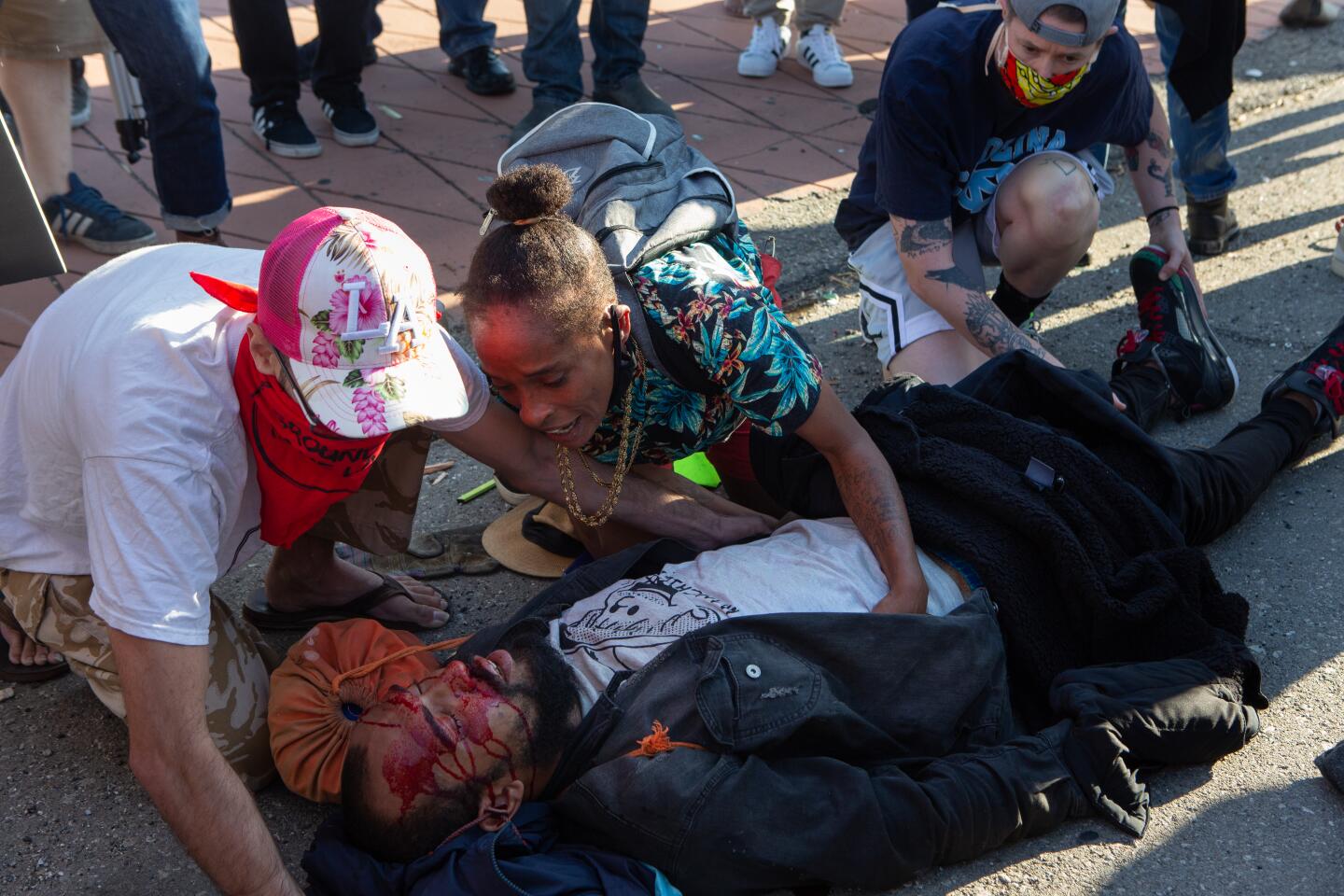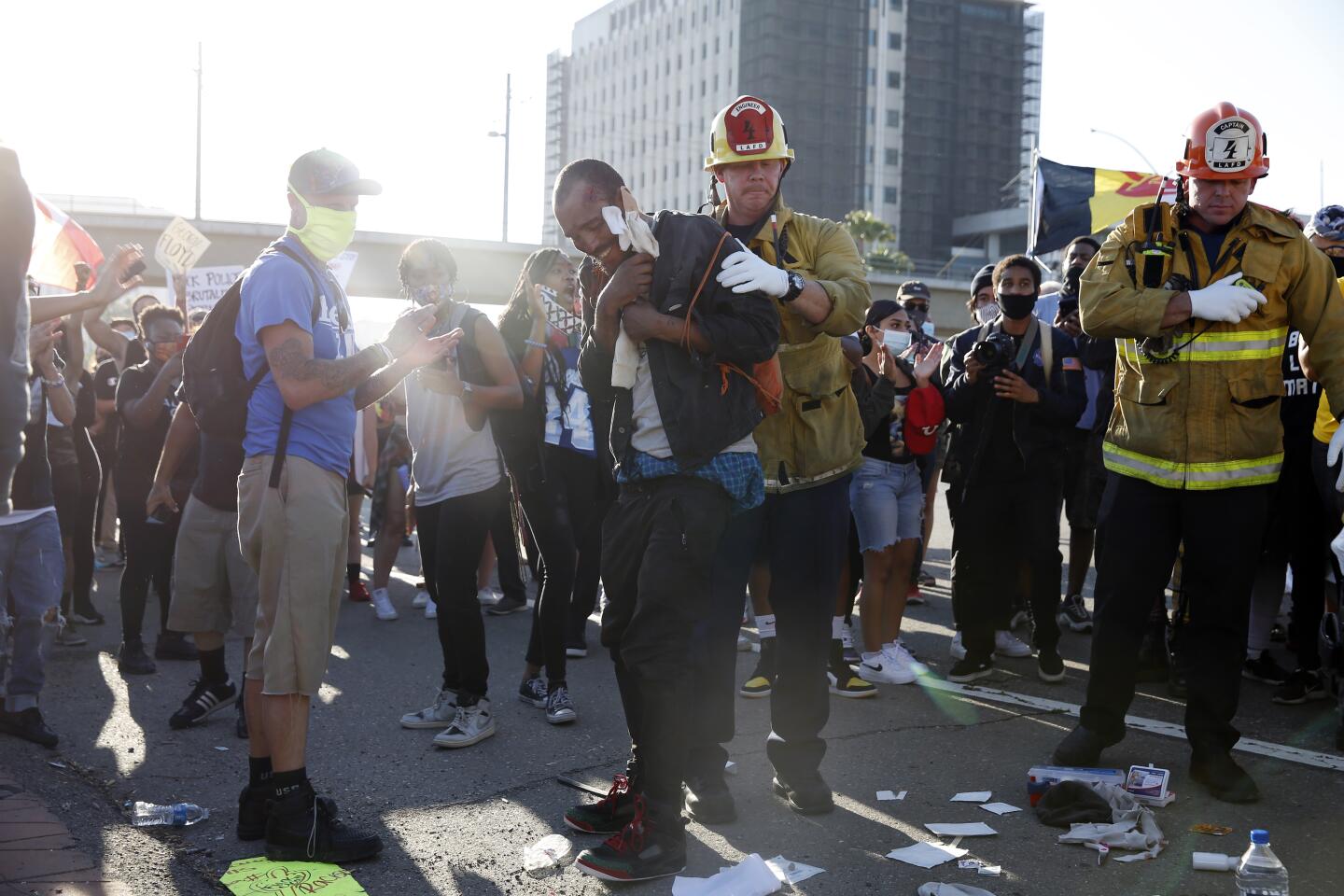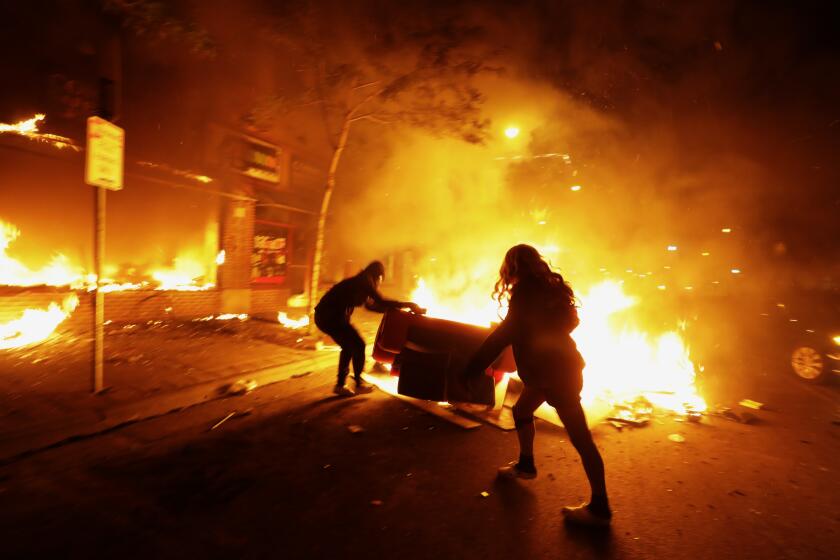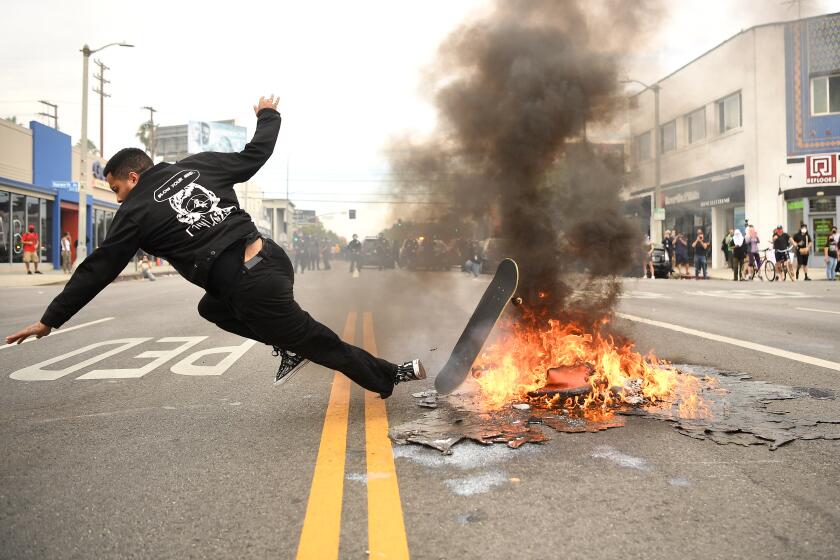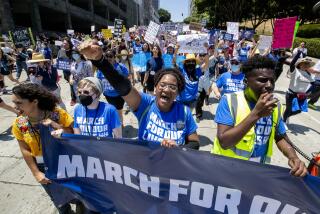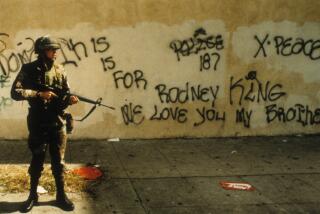L.A. reels from looting and arrests not seen in decades
- Share via
Los Angeles has seen this before.
A black man is brutalized by police, prompting furious protests. The demonstrations turn violent; the city writhes to the sounds of sirens and breaking glass, the smell of smoke, the sight of faces contorted in rage.
There was a sense of weariness this weekend as demonstrators replayed the sorts of scenes that have scarred Los Angeles more, perhaps, than any other American city. This time the catalyst was the killing, at the knee of a police officer, of George Floyd, some 1,800 miles away in Minneapolis.
“I was here for Rodney [King],” said Marsha Steinberg, 76, a self-described activist in the Fairfax district. “Nothing has changed.”
It was the acquittal of four Los Angeles police officers in 1992 for King’s beating after a traffic stop that triggered some of the worst urban violence in the nation’s history. That occurred 27 years after the 1965 Watts Riots, also sparked by the violent arrest of an African American man.
Now, 28 years after the 1992 uprising, Steinberg was among hundreds who gathered Saturday at Pan Pacific Park and later marched west and north. Parts of the crowd rampaged through the Grove shopping center before moving toward West Hollywood. The demonstrators faced off with police, who responded in some cases by firing rubber bullets as police helicopters hovered overhead. Protesters defaced or destroyed about a dozen squad cars and demanded, once again, that the nation turn a corner on systemic racism.
“Let’s be clear,” Black Lives Matter co-founder Patrisse Cullors told the gathering. “We are in an uprising for black life.”
Many take to the Minneapolis streets again to protest the death of George Floyd, defying a curfew. ‘They dropped the ball,’ one says of local leaders.
The night before, downtown Los Angeles had been the nexus of protest, mirroring demonstrations taking place around the nation, most destructively in Minneapolis and neighboring St. Paul. More than 500 people were arrested in downtown L.A. — the most in a single sweep in recent memory — as the demonstration spun out of control and some participants began smashing windows and looting stores.
Many buildings were tagged with protest slogans, including Floyd’s dying words, “I can’t breathe.”
In an eerie mashup of cataclysms, many of the protesters wore masks — recalling both the demonstrations by anarchists in recent years who sought to hide their identities and, of course, the face coverings now mandated to be worn in public in Los Angeles and elsewhere as protection from the novel coronavirus.
The outrage over Floyd’s death had done what no other event has done in months: turned the nation’s attention from its all-consuming focus on the COVID-19 pandemic.
Mayor Eric Garcetti, speaking Saturday to reporters at City Hall, said the simultaneous protests and pandemic represented “the heaviest moment I’ve experienced as a resident of Los Angeles” since the riots in 1992. “This was supposed to be a weekend of openings, and then we saw the closing of a life in Minneapolis,” Garcetti said.
Garcetti expressed support for the protesters’ goals but blamed “provocateurs” for some of the worst violence and called for de-escalation. He issued a citywide curfew from 8 p.m. Saturday until 5:30 a.m. Sunday, saying the measure was necessary to clean up overnight damage and restore order.
“I’m asking everybody to just step back,” Garcetti said.
Later Saturday evening, Garcetti asked Gov. Gavin Newsom to call out the National Guard, a rare step that reflected the gravity of the situation. Images of the National Guard bringing a military presence to the streets of the city remain a searing reminder of both the 1965 and 1992 riots.
Earlier in the day, Newsom issued a statement that largely expressed support for the demonstrators. “Every single day, people of color are disadvantaged and discriminated against,” he said. “Black and Latino men in particular face mortal danger all across this country simply because of their race. Every person who has raised their voice should be heard.“
In Los Angeles, it was never a matter of if the smoke would rise again, but when.
Newsom’s words reflected one of the ways that the current protests are different from many in the past: Many of those in power have expressed support for the goals of the protests, even if they disagree with some of the methods.
With the mayor at City Hall were City Councilman Curren Price and the Rev. Najuma Smith-Pollard, pastor at Word of Encouragement Community Church, both of whom expressed sympathy for the demonstrators but said they have a responsibility to make their case without endangering others.
Price called the curfew an “extraordinary step,” but one that is needed after needless destruction.
“We can do better than that. We are better than that,” he said.
Smith-Pollard said she is tired of using the hashtag #RestinPower for young black people who have been killed. She wants protesters to “live in their power” and “speak truth to power,” she said. But, she added, “with power comes responsibility.”
She asked those who were in the city to create mayhem to “step back” and let the real activists fighting for a better future take the lead.
“We don’t need more mayhem. We’ve been there, done that,” she said.
Those exhortations appeared unlikely to clamp a lid on the protests, however, given the level of anger — and, in some cases, opportunism — that fueled the looting and vandalism.
In another throwback to 1992, business owners boarded up their storefronts and, in some cases, sought to avoid being targeted by letting protesters know that they were owned by people of color. “BLACK OWNED,” read a sign posted outside a coffee shop on 6th Street downtown. It was unscathed Saturday morning, while a beauty salon next door had its windows smashed.
Instead of preparing to open under new coronavirus guidance Saturday, the Bolt Barbershop downtown was clearing out its vintage barber chairs and other valuables. “It’s gonna get worse tonight when it gets dark,” said a security guard in a Kevlar helmet and body armor.
Pedro Mojarra had rushed to his downtown business, D-town Burger Bros Los Angeles, late Friday night after an employee sent him a video of looters breaking into a nearby Starbucks. He decided to stand outside his restaurant and plead with protesters to leave it alone.
“If you’re not standing outside of your business, they’re going to break into it,” he said.
Mojarro, 32, said he supported the demonstration — just not the destruction of businesses. “We’re with you,” he said. “If you need to protest, go do it in front of the police station. Be angry at them.”
Like most business owners, Mojarro was already reeling from the effects of the coronavirus. He said he had to shut down his second business in Boyle Heights because of the pandemic. A month ago, someone broke a window at his downtown burger shop, on West 6th Street, costing him $7,500. On top of that, he said, sales at the restaurant were down by more than 70%.
“Give us a break,” he said. “We got a lot going on already.”
Times staff writers Kevin Rector, Kevin Baxter, Richard Winton, Emily Baumgaertner, Laura J. Nelson and Mitchell Landsberg contributed to this report.
More to Read
Sign up for Essential California
The most important California stories and recommendations in your inbox every morning.
You may occasionally receive promotional content from the Los Angeles Times.
